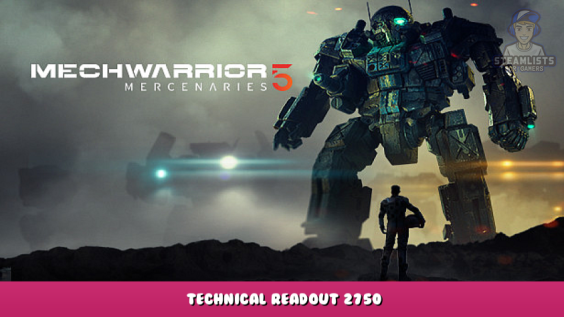
In the year 2750, humanity was in the midst of a golden age. United under the interstellar government of the Star League, all mankind prospered and enjoyed an improved quality of life made possible by advances in technology, commerce, human rights, and the arts. Humanity had truly inherited the stars. But those same advances also carried a curse, for the engines of war from the Star League era possessed power unequaled in the Successor States today.
BattleTech Technical Readout: 2750 provides illustrations, statistics, and other vital information about the BattleMechs, AeroSpace Fighters, Tanks and Hovercraft, and combat JumpShips of the Star League.
Credits
Writing:
Clare W. Hess
Dale L. Kemper
Jim Long
Blaine L. Pardoe
Boy F. Peterson Jr.
Development:
Sam Lewis
Editorial Staff:
Editor-in-Chief
L. Ross Babcock III
Senior Editor
Donna Ippolito
Editor
Jim Musser
Editorial Assistant
C. R. Green
Research Assistant
Kent Stolt
Production Staff:
Production Manager
Sam Lewis
Art Director
Dana Knutson
Cover Art
Dana Knutson
Technical Assistance
Bob McElmeel
Technical Designs
Dana Knutson
Tom Miller
Michael Weaver
Illustrations
Dana Knutson
Personal Equipment
Steve Venters
Publisher:
FASA
Product Code:
8613
Published:
1989
ISBN-10:
1555600891
ISBN-13:
978-1555600891
Star League Technology
In the closing years of the Star League, great strides were made in all areas of military technology. Improvements in weaponry, armor, and ‘Mech manufacturing techniques created a deadly fighting machine that was faster, better-armed, and better-protected than any of its predecessors. Though some weapons systems using these technological breakthroughs were seen on the battlefield in the latter days of the League, the underlying technology had sometimes not fully matured. As a consequence, these systems were costly, bulky, and in some cases, mutually exclusive.
The collapse of the Star League and the start of the Succession Wars cut short further refinements of these technologies. The Inner Sphere’s industrial base was shattered by invading armies, while many skilled technicians died on the front trying to keep the remaining machines in operation. The complex machinery that turned out these jewels of technology was ground into the dust under the massive juggernauts it had helped to create. The Successor Lords had no choice but to use older, obsolescent technologies in their war machines. Over the years, the constant warfare that plagued the worlds of the Inner Sphere kept the Successor States from gaining the respite needed to rebuild their industrial base to pre-war levels. As time passed, there was less and less to rebuild and fewer and fewer who knew how to do it.
All that has changed. Thanks to the Gray Death Legion’s discovery of a Star League computer library core on Helm in 3028, much lost knowledge has been regained. After 20 years of research and experimentation, aided by the Gray Death memory core, the Federated Commonwealth, the Draconis Combine, and the Free Worlds League are all on the verge of fielding ‘Mechs using technology not seen for centuries.
This Technical Readout is compiled from data contained in the Gray Death memory core, providing information on the most advanced military equipment ever known to man. Wherever possible, a full range of technical and historical data is provided. In some cases, the complete loss of historical records did not permit a detailed discussion of the equipment. There are also occasional Editor’s Notes to clarify, expand, or explain certain details when necessary.
MCY-99 Mercury
Mass: 20 tons
Chassis: Bergan MXII
Power Plant: LTV 160 (MASC)
Cruising Speed: 86 kph
Maximum Speed: 130 kph
Jump Jets: None
Armor: Mitchell-091 Ferro-Fibrous
Armament:
- 2 Martell Medium Lasers
- 2 Hessen IX Small Lasers
Manufacturer: Mitchell Vehicles
Communications System: DataTech 401
Targeting and Tracking System: Skyhunter IV
Overview:
The unveiling of the Mercury was heralded as the dawn of a new age in BattleMech design. Billed as an obvious successor to the aging Stinger and Wasp, the Mercury answered many dreams of scout lance pilots. Initial specifications called for the light ‘Mech to be faster and better armed than any other in its class, all without a reduction in armor.
Displayed for the first time in 2742, the Mercury was an electronic marvel, the showpiece of the Star League Defense Forces. At the unveiling, Mitchell Vehicles spokesmen described multiple breakthrough systems only in general terms, and none of the new ‘Mechs were allowed outside the direct control of the Regular Army.
EDITOR'S NOTE: Just before the Exodus, the new Mercury 'Mechs remained with units stationed on Terra and at the factory on Graham IV. These all left with General Kerensky. The highest concentration to remain behind were with the Eighth Recon Battalion of the Third Regimental Combat Team, known as the Eridani Light Horse, which became a renowned mercenary unit. The Eighth lost all twelve of its Mercury 'Mechs during fighting on Sendai in 2798.
Capabilities:
The heart of the Mercury is the Myomer Accelerator Signal Circuitry (MASC) system. Acting as a “turbocharger” for the myomer bundles in the legs, the MASC system allows the Mercury to reach speeds of up to 172 kph in short bursts. The special circuitry sends shorter but stronger signals to the myomer bundles, effectively doubling the Mercury‘s walking speed. Long-term use can damage the ‘Mech’s actuators, but timely use in critical situations can mean the difference between life and death.
With its high speed and energy weapons, the Mercury is an ideal scout and raider, capable of remaining in the field for as long as the pilot is able to take the stresses of battle.
The few critics of the design point out the Mercury‘s lack of jump jets. Despite this drawback, the Mercury is well accepted by the Star League commanders. Though comparable in weight to the Stinger or Wasp, the Mercury can survive longer in battle because of its heavier weapons and the stronger Ferro-Fibrous armor.
The energy-dissipation system is a marvel of Star League technology. Automated heat sinks monitor themselves and channel excess heat away from the reactor and cockpit.
The Hessen IX Small Lasers in the head and the center torso are a matched pair. The lasers are slipped into place, bolted down, and connected in three places to the power circuits and cooling feeds. If the lasers are damaged or destroyed, the bolts can be removed and the entire system replaced, usually in minutes.
EDITOR'S NOTE: This modular replacement system was expected to revolutionize the logistical support of field units, but the Exodus and First Succession War put an end to any radical departure from standard military procedure.
Though both Martell Medium Lasers use the same type of barrel and targeting feeds, they do differ greatly in their power systems. The right arm laser diffuses the power all along the upper and lower arm, housing redundant systems in both sections to provide backup capabilities should one part of the arm be damaged. The torso mount, however clusters the entire system into a compact area. Any damage to the torso, other than a direct hit on the power system, is likely to pass through, missing the laser entirely.
THE-N Thorn
Mass: 20 tons
Chassis: Chariot Type II
Power Plant: GM 120
Cruising Speed: 65 kph
Maximum Speed: 97 kph
Jump Jets: None
Armor: Armorscale, with CASE
Armament:
- 1 Zeus-5 LRM Launcher
- 2 Hellion Spitfire Medium Lasers
Manufacturer: Ford Military Limited
Communications System: Opus I Ultrabeam
Targeting and Tracking System: Orion 80
Overview:
The Thorn is an older BattleMech design, incorporated into the Hegemony Armed Forces during the late 24th Century. It was the first ‘Mech to incorporate the Endo Steel II Skeleton. The Thorn was unveiled with tremendous hype, but initial reviews were mixed. Commanders later agreed that Endo Steel II had obvious advantages but would not be suitable for all ‘Mechs.
The Thorn was designed to serve in front-line combat units. Its inability to jump was not considered unusual for this type of duty, but commanders who tried to use all light ‘Mechs as scouts found the Thorn to be useless. Once separated from company mates, the Thorn‘s heavier armor and greater firepower were no match for a quicker opponent.
Capabilities:
The Thorn has had mixed reviews for the entire length of its service. Supporters point out that the design packs more punch per ton than any other ‘Mech and that its armor is also the best of its size. In a toe-to-toe slugfest, the Thorn can usually reduce an equal weight opponent to scrap in minutes.
Opponents of the design note that a ‘Mech cannot hit what it cannot reach. Although the 120 Class engine allows the ‘Mech to run at a respectable speed, its lack of jump jets leaves the Thorn in the dust of other light ‘Mechs. The Zeus Long-Range Missile system only partially offsets this lack of pursuit ability.
This favoring of armor and weapons over maneuverability has made the Thorn a favorite of front-line light companies.
The weapon placement and ease of maintenance have given the design high marks in every technician’s manual. The arms and legs are completely accessible, allowing a service crew to actually enter the limbs and work on repairs from the inside.
The Thorn‘s main armament consists of twin medium lasers. These identical weapons further improve maintenance and are extremely efficient. The design is noted as a “cool running” ‘Mech, but the placement of one laser directly under the pilot’s feet makes the Thorn seem to be running hotter than it really is. Extensive cooling is provided in the cockpit area, but the lack of an effective venting system for the medium laser makes repeated firing uncomfortable for the pilot.
The Zeus Long-Range Missile system is extremely accurate, and the arm mount allows the pilot to switch targets quickly. If damaged, the entire system can be replaced in a few hours, which is fortunate, as the launcher can easily be destroyed if the ‘Mech engages in hand-to-hand combat. The missile-feed system, which passes reloads from the torso storage compartment, is average at best. If damaged, reloads can become lodged in the upper arm, where additional damage has been known to cause detonation, destroying the arm.
MON-66 Mongoose
Mass: 25 tons
Chassis: Kell/D
Power Plant: Nissan 200
Cruising Speed: 86 kph
Maximum Speed: 130 kph
Jump Jets: None
Armor: Mitchell GA3 Ferro-Fibrous
Armament:
- 3 Sorenstein Medium Lasers
- 1 Starflash Plus Small Laser
Manufacturer: Diplan ‘Mechyards of Ozawa
Communications System: ON-5
Targeting and Tracking System: Beagle Active Probe
Overview:
Introduced in the spring of 2660, the quick, agile Mongoose soon became popular with Star League Light Lance commanders. Though the ‘Mech was originally designed for deep reconnaissance, commanders began to adapt it to front-line duty as soon as they discovered that the Beagle Active Probe and associated central processing units could coordinate the activities of an entire light company. Demand for this new vehicle was high, and by 2668, the design had become the standard command ‘Mech for all light and recon lances.
Capabilities:
The Mongoose was designed to replace the venerable Locust, with ground speed, rather than jumping ability, as the key to the ‘Mech’s maneuverability. An instant success with field commanders, the ‘Mech is considered an outstanding design. The ‘Mech’s armament is based entirely on energy weapons, making the Mongoose an ideal deep-recon ‘Mech, raider, or guerrilla fighter.
The internal structure of the Mongoose employs Endo Steel II, an alloy created especially for use in ‘Mechs. Endo Steel offers tremendous load-bearing ability plus greater tensile strength, allowing a much lighter skeleton to carry the same weight as a normal skeleton. Covering the skeleton are plates of Ferro-Fibrous Armor. The Mongoose carries a heavy load of armor for its size, and it can withstand a direct PPC blast to the chest without internal damage. If necessary, the Mongoose can engage medium ‘Mechs with some chance of success.
The laser systems are tried and dependable, with excellent heat dissipation provided by the primary cooling collars located just above the ‘Mech’s elbows. Secondary heat sinks, located in the back of the torso, funnel heat toward the waist. The lasers mounted in the center torso and head are very accurate, employing internal compensators that allow the Mongoose to aim precisely when at a full run. The only drawback to the weapon system is the cooling jacket for the center torso laser, which rests on top of the engine compartment and tends to deteriorate rapidly. Replacement is not difficult, but studies show the jacket is virtually useless after 100 firings. The additional heat does not impair the Mongoose‘s performance, but it makes the cockpit uncomfortable and sometimes interferes with the sensor array.
The Beagle Active Probe, riding within the left shoulder, may be the most important item in the ‘Mech. With extended scanner range and a wider scanning-band range, the Beagle can detect and identify vehicles 16 percent faster than any other scanner. Once identified, the target is permanently stored in the Beagle’s memory. Should the Beagle encounter the target again, it will remember speed, damage, and even forecast a fighting style to the Mongoose pilot. During off hours, the pilot can review any battle on the tactical display, modifying actions with a joystick. The Beagle projects the tactical change and shows the results. This memory device has made the Mongoose a highly sought battlefield trainer.
HER-1S Hermes
Mass: 30 tons
Chassis: Irian Chassis Class 10
Power Plant: GM 270
Cruising Speed: 97 kph
Maximum Speed: 151 kph
Jump Jets: None
Armor: Jolassa-328 Ferro-Fibrous
Armament:
- 2 Hellion-V Medium Lasers
- 1 Olympian Flamer
Manufacturer: Irian BattleMechs Unlimited
Communications System: Irian TelStar
Targeting and Tracking System: Alexis Photon Target Acquisition System
Overview:
The Hermes was designed as a heavy scout for the Star League Defense Forces. Commissioned in 2632, the ‘Mech was delivered in record time. Though the design requirements were fulfilled to the letter, the Quartermaster Command was skeptical of the swift delivery. Line officers were not surprised, therefore, when many of the first Hermes ‘Mechs turned out to have glitches in the electronics bay. When the source of the problem was discovered many months later, Techs had to spend hours in field-repair time rewiring the electronics bays of the new ‘Mechs.
The Hermes design called for a ‘Mech as fast as any currently in service. The end product greatly exceeded initial expectations, but only at the cost of a severely weak firepower and armor protection. The high cruising speed is desirable, but the lack of significant firepower makes the ‘Mech unpopular. The armor is acceptable, but scout pilots cannot get used to a 30-ton ‘Mech with only two medium range weapons. The Hermes saw service for 19 years, after which time the design was reassigned to second-line units.
EDITOR'S NOTE: Irian BattleMechs reworked the basic design, which emerged as the HER-2S Hermes II in 2798.
Capabilities:
The main asset of the Hermes is its tremendous speed. Capable of long bursts of speed, the ‘Mech fulfills its scout role admirably until it encounters the enemy. The overall design is serviceable, but it does not incorporate any breakthroughs in technology.
The original armor was standard plating, making the Hermes susceptible to fire from most medium and light ‘Mechs. The upgrade to Ferro-Fibrous armor was a modification first performed in the field to give the Hermes a higher survivability factor. Generally successful, the upgrade did improve the ‘Mech’s ability to withstand combat.
The single shining piece of equipment on the Hermes is the Alexis Photon Target Acquisition System. The Alexis paints the target with light before actually firing either laser. If the Alexis fails to lock onto a high-density target, such as an armored vehicle or ‘Mech, the system suspends the order to fire. The fire order is held in a memory buffer until the system acquires a target. If no target is achieved within two seconds, the order is canceled. While the heat buildup in the laser capacitor still has to be dissipated, the system saves wear and tear on the laser focusing apparatus, thus reducing maintenance requirements.
The hand flamer of the Hermes is an older design using a fuel mixture rather than tapping into the fusion plant’s plasma field. When the weapon is triggered, the upper cylinder, containing a napalm gel, is opened. The gel is forced along pressure hoses toward the nozzle. Instead of exposing the napalm to open flame, the gel mixes with small amounts of specially treated magnesium suspended in water. When the magnesium hits the air, it bursts into flame, igniting the napalm. The system is considered among the safest devised, because the napalm is stored far from the igniting agent. Only a small amount of magnesium is required to ignite the mixture, and so damage to the storage cylinder usually causes only minor damage to the limb. As a further safeguard, ejection racks can jettison the storage cylinders away from the ‘Mech.
HSR 200-D Hussar
Mass: 30 tons
Chassis: Benztrov 40
Power Plant: GM 270-A
Cruising Speed: 97 kph
Maximum Speed: 151 kph
Jump Jets: None
Armor: Victory Anchor 2 Ferro-Fibrous
Armament:
- 1 Newhart Extended-Range Large Laser
Manufacturer: Newhart Industries
Communications System: Field Ranger Sightseer
Targeting and Tracking System: Ranger LAF Model 2
Overview:
The HSR 200-D Hussar is one of the most widely used light recon ‘Mechs within the Star League Defense Forces. With a maximum speed of 151 kph, the Hussar is a difficult target in a one-on-one fight.
Originally intended to provide close support for infantry units, the ‘Mech proved to be so fast that it is a greater asset for reconnaissance. Many Hussars began to replace fast scout vehicles, providing superior firepower and greater terrain-handling ability than many scout vehicles.
Capabilities:
The Hussar is equipped with an ER large laser, which gives it above-average targeting and range ability with far less maintenance than other similar weapons. Seeing the success of the ER laser, the Star League Quartermaster Command placed an order with Newhart Industries for several hundred other BattleMechs of larger weight and firepower class equipped with the weapon.
The Hussar is basically defenseless once it gets within range of other weapons, though it can still charge, kick, and punch. The Hussar is occasionally drawn into one-on-one combat with other BattleMechs, but it would rarely be the ‘Mech of choice for that role.
Another weakness is the overall shortage of armor on the ‘Mech. With only 1.5 tons of armor, it lacks the protection of most lighter BattleMechs. Even the early model Locust deployed by the SLDF has twice the armor of a Hussar. The Hussar is faster, however, and mounts a better weapon. These are delicate tradeoffs in battle, but the net result is that the Hussar can disengage by running from a fight against even a lighter BattleMech.
The Ranger communications and targeting systems are also above average, with extended-range capabilities for surveillance missions as well as the ability to jam out most forms of communications. Thus, several well-placed Hussars behind enemy lines can totally disrupt the distribution of orders and troops. A Hussar can literally tap into transmissions between enemy BattleMechs 35 kilometers away. The transmission capability of the Hussar is also somewhat better than most other SLDF BattleMechs because the Hussar is more often reporting on enemy movements and communications, rather than disrupting them.
EDITOR'S NOTE: The Hussar earned fame for its success in skirting enemy lines and monitoring the enemy. In 2630, during a series of rebellions on the Lyran world of Wotan, near the Dark Nebula, the 51st Hussar Regiment of the XXX Corps was called in at the request of Lyran officials.
Ten Hussars known as "The Fingers of Death" dropped far behind enemy lines with little support. Their mission was to disrupt the enemy for as long as possible. During the three-week operation, the 'Mechs destroyed several communications stations and ammunition dumps. Finally, the rebellious locals tracked down several of these raiding Hussars and attempted to engage them in combat, only to find the 'Mechs turning tail and running away at staggering speeds.
When the fighting was over, only three of the Hussars had been destroyed. The Fingers of Death had proved the combat value of the Hussar, and its reputation grew.
STN-3L Sentinel
Mass: 40 tons
Chassis: Defiant V
Power Plant: Pitban 240
Cruising Speed: 65 kph
Maximum Speed: 97 kph
Jump Jets: None
Armor: Valiant Lamellor
Armament:
- 1 KWI AC/5 Ultra Autocannon
- 1 Defiance B-1A Small Laser
- 1 Defiance Streak-2 SRM Launcher
Manufacturer: Defiance Industries
Communications System: StarLink/Benicia Model AS829G
Targeting and Tracking System: Targa-7, Vid-Com-17
Overview:
The STN-3L Sentinel is a medium BattleMech, though its 40-ton mass puts it at the low end of its class. Designed to provide battalion-level BattleMech support for infantry and light-armor units, the ‘Mech has good maneuverability, long-range hitting power, and an advanced communications system. Equipped with the powerful VidCom-17 and Targa-7 long-range targeting and tracking system, the Sentinel is ideal for use in patrols or as a mobile observation post. The ‘Mech also carries a StarLink/Benicia Model AS829G communications system. Capable of simultaneous operation on multiple frequencies, this system not only allows the Sentinel to monitor closely and to command units operating under it, but also keeps the ‘Mech in close contact with rear-area artillery units, calling for fire when needed.
Defiance Industries first produced the Sentinel in 2651 for use by House Steiner’s private army. The ‘Mech appeared one year after the Star League Council had passed an amendment allowing the Council Lords to double their personal household forces. Originally intended for infantry support, the ‘Mech soon moved on to the role of guarding military installations and major land holdings of the Steiner family. By the early 28th Century, the design was also in use by the Star League Defense Forces as well as the Davion and Marik private armies.
Capabilities:
The STN-3L’s 40-ton frame is powered by the 11.5-ton Pitban 240 fusion engine, giving the ‘Mech a walking speed of 65.4 kph and a top running speed of 97.1 kph. Shortly after the ‘Mech’s original deployment, concern arose over the choice of the Pitban 240 because of rumors about shielding problems with the Pitban 240s that Defiance Industries was producing under license. After a number of Sentinels were pulled from the field because of chronic overheating, an investigation took place. This investigation found that the heat circulation system was at fault, rather than the engine shielding. The faulty components were replaced in most existing ‘Mechs and all later production versions.
The Sentinel is well-equipped for combat, carrying a single KWI-5 Ultra Autocannon, a single Defiance Streak-2 SRM launcher, and a single Defiance B-1A Small Laser. Kawabata Weapons Inc. produced the AC/5 Ultra especially for Defiance Industries. The weapon gives the ‘Mech good long-range fire capability, with an effective range exceeding that of LRMs and standard AC/5s. Another special feature of this weapon is its ability to fire rounds at double the rate of a standard AC/5. Though this autocannon fire is not as accurate as would be a pair of standard AC/5s, the Ultra does give an equivalent volume of fire.
Unfortunately, besides generating much heat and burning through ammunition supplies very quickly, the extremely high rate of fire has caused some other major problems, particularly on the early STN-3Ls. When fired at its maximum rate, the weapon vibrates violently, causing the internal circuitry in the BattleMech’s weapon arm to fail. This often causes a total loss of control of the arm, effectively rendering the AC/5 useless and cutting the Sentinel‘s combat capabilities almost in half. Though repairs for this problem are simple, the problem keeps the ‘Mech out of combat for half an hour or more during repairs.
The current STN-3L has been modified to reduce the chance of disturbances to circuitry. Even these modifications have not solved the problem totally, with an estimated 3 percent chance that the problem will occur whenever the AC/5 Ultra fires at its maximum rate.
The Sentinel was not designed to engage in close combat, relying instead on its AC/5 Ultra to hold off enemy units at long range, but it can defend itself if an enemy gets close. Tucked away inside the Sentinel‘s right torso is its Defiance Streak-2 SRM launcher, linked to a Targa-7 fire control system. This short-range missile system is designed to guarantee a hit against any target onto which the pilot can get a lock. A special feature of this system prevents the weapon from firing at a target when there is no lock-on. This saves ammunition by preventing shots that would miss anyway. Unlike a standard SRM, whose shotgun effect may result in some misses and some hits, the Streak SRM hits with all its missiles. This gives the unit the effective average firepower of the heavier and more wasteful SRM-4 system, but with considerably less variation in damage effects.
When designed, the Sentinel was equipped with a Defiance A-1 small laser instead of the B-1A model of current designs. However, the original A-1 small laser was prone to problems after extended field operations, and so the more rugged B-1A was substituted. In 2678, all Sentinels were refitted with the single Defiance B-1A small laser, which is mounted in the right torso, just below the Streak-2 SRM launcher.
WVE-5N Wyvern
Mass: 45 tons
Chassis: Ost Endo Steel
Power Plant: GM 180
Cruising Speed: 43 kph
Maximum Speed: 65 kph
Jump Jets: Northrup 750
Jump Capacity: 120 meters
Armor: Kilosh 1000, with CASE
Armament:
- 1 Jackson Dart-10 LRM Launcher
- 1 Nightwind Large Laser
- 2 Starflash Small Lasers
- 1 Totschlagen-6 SRM Launcher
Manufacturer: Maltex Corporation
Communications System: Ostmann AMB
Targeting and Tracking System: Scrambler-7 Series
Overview:
Commissioned in late 2660, the Wyvern was developed to fill the need for a dedicated city fighter. The Wyvern may fulfill its duties too well, for many pilots dislike the ‘Mech’s primary tasks of crowd control, garrison duty, security work, or urban defense. These are not flashy assignments, and so the Wyvern is not a flashy ‘Mech.
A few MechWarriors, however, enjoy piloting the ‘Mech. In its element, the city, there are few ‘Mechs of any size that it cannot handle, or at the very least harass. These veteran Wyvern pilots are among the proudest in the Star League military.
Capabilities:
As a city-fighter, the Wyvern does not need much ground speed. With a top speed of 65 kilometers per hour, the Wyvern cannot escape many of its foes by running away.
It can, however, jump with considerable ease, powered by the jump jets in its rear torso and upper legs. This combination of average speed and average jumping ability make the Wyvern a sitting duck in the open field. When on the attack, the ‘Mech is normally used in heavy woods or mountainous terrain, where the ground effects tend to reduce the movement advantages of faster ‘Mechs.
The arm-mounted Nightwind Large Laser is the Wyvern‘s main weapon. Being an older design, the Nightwind’s many system components have been refined through countless hours of battlefield tests. The system is extremely reliable, but most of the components are so bulky and heavy that the Nightwind is one of the largest military lasers ever produced. The Starflash Small Lasers cradled next to their bigger cousin were added later, after it was discovered that some of the Nightwind’s power could be diverted with no loss of effectiveness.
The Jackson Dart long-range missile launcher has been a constant source of problems for Wyvern pilots. Because the weapon is located in front of the engine core, the heat of the engine often causes an automatic shutdown of the system. Normal coolant jackets have proven ineffective, and if a pilot attempts to override shutdown, the heat build-up can lead to an ammo explosion as the reloads are passed from the CASE in the left torso. The only proven solution is to keep the reactor’s temperature as low as possible. If heat levels rise too high, the pilot can eject the loaded missiles and disable the autoloader, sealing the remaining missiles in the CASE.
The Totschlagen-6 short-range missiles are much more reliable. Housed in the right torso, the launcher sits on top of the CASE. The entire reloading system is extremely compact, making reloading quick and efficient. If the system should jam, the reload tubes can usually be cleared by jumping the Wyvern up and down.
CRB-27 Crab
Mass: 50 tons
Chassis: Hollis Mark 1A
Power Plant: Magna 250
Cruising Speed: 54 kph
Maximum Speed: 86 kph
Jump Jets: None
Armor: Paulina Heavy Ferro-Fibrous
Armament:
- 2 RAMTech 1200 Large Lasers
- 1 Ceres Arms Medium Laser
- 1 ExoStar Small Laser
Manufacturer: Cosara Weaponries
Communications System: Dalban Series K
Targeting and Tracking System: 650 RND
Overview:
The Crab was designed to be a medium raider and guerrilla fighter. First built in 2719, fewer than 1,000 of this design have been delivered to their assignments so far. Initial reports on the design were good, but the ‘Mech’s lack of hands and inability to jump have reduced its usefulness as a raider. The Crab possesses good overall speed and can survive for weeks without resupply. All of its weapons are energy-based, which makes the Crab slightly hotter to operate than other ‘Mechs of its class.
EDITOR'S NOTE: It is likely that the Crab would have become the standard medium 'Mech of the SLDF had events not forced General Kerensky and his loyalists to leave the Inner Sphere.
Capabilities:
The Crab contains little new technology. Except for the targeting system and the communications equipment, every major component on the Crab has been proven on another ‘Mech design. Techs dream of assignment to a Crab, because the maintenance time is less than half that for other ‘Mechs in its class. A Crab Walk is synonymous with easy duty. Only the communications equipment gives the Techs any problems.
The Dalban Series K communications network was designed to be fully self-contained. The system houses seven microprocessors, each capable of performing its own special duty as well as duplicating the operations of the other six. More than a communication system, the Dalban network can identify the ‘Mech’s exact location on the world and locations of any known units on the planet. The system keeps the information current by monitoring all radio frequencies and short-wave bands. When operating behind enemy lines, the system can forecast enemy troop movements, differentiating between suspected positions and known positions, and project a path for arriving at any goal. Though not foolproof, the system does give the pilot an excellent recon report prior to his patrol. Unfortunately, the system is difficult to maintain. Damage to one of the processors normally requires its complete removal. The system redundancy was absolutely necessary to keep the system on line during combat.
The Crab‘s armor protection is generally good. The arms and legs are especially well-protected, with Ferro-Fibrous Armor used throughout. Its weakest areas of protection are the left and right torsos, but even those areas can withstand a direct PPC blast without a breach.
The ‘Mech’s weapons systems are functional, but uninspired. The large lasers are a matched set, housed in the claws and forearms of each arm. They provide an excellent arc of fire but are easily damaged during hand-to-hand fighting. Pilots have a tendency to use the huge weapons as clubs, knocking the focusing mirrors out of alignment and rendering the lasers inoperable. Though the adjustment is easy to perform, it requires several minutes outside the cockpit with the pilot’s head buried in the elbow of the ‘Mech.
To provide a secondary line of defense, a medium Ceres Arms laser and ExoStar small laser were added in the center torso and head, respectively. The medium laser is well-protected from the engine, and heat sinks allow an unrestricted flow of heat through the center torso and out of the back. The head-mounted small laser is normally used only as a last resort. Ineffective at long ranges, it is best used against soft targets, such as infantry and rioting civilians. The cockpit is well-insulated from the heat of the engine and the small laser. Pilots appreciate the relative comfort of piloting a Crab.
The ‘Mech’s ejection seat varies from the standard design. The pilot has two methods of escape. If an explosion is imminent, the top hatch has blown back and the seat is jettisoned through the roof of the ‘Mech. Seat thrusters stabilize the descent to a controlled fall, and the pilot lands roughly 200 meters from his machine. If no explosion is likely, the seat is rotated 90 degrees and fired out the back. The pilot will land 20 to 50 meters from his ‘Mech after a much shorter and gentler ride.
KTO-19 Kintaro
Mass: 55 tons
Chassis: Technicron-1
Power Plant: Core Tek 275
Cruising Speed: 54 kph
Maximum Speed: 86 kph
Jump Jets: None
Armor: Leopard V Ferro-Fibrous
Armament:
- 1 Narc Missile Beacon
- 1 Holly-5 LRM Launcher
- 2 HoverTec-6 SRM Launchers
- 2 Magna Medium Lasers
Manufacturer: General Mechanics
Communications System: OmniComm 3
Targeting and Tracking System: Starbeam 3000
Overview:
The Kintaro is a rare example of a ‘Mech designed around a weapons system, the Narc Missile Beacon. The ‘Mech was to incorporate the Narc system, with ample firepower to take advantage of any hit achieved by the Narc Pods. The ‘Mech would be mainly an offensive weapon, able to work with a variety of other ‘Mechs, but also required to carry maximum armor. The primary mission of the new ‘Mech was to deliver the Narc Pods to the target and let its lancemates provide the punishment. In 2587, the Quartermaster Command approved the General Mechanics Kintaro design.
Primarily a missile-carrier, the Kintaro packs a considerable punch. It is not a raider, however. Though it carries ample supplies for a single engagement, it is almost constantly in need of resupply. As any fight wears on, the effectiveness of the Kintaro decreases geometrically. Once the Narc Pods are gone, the Kintaro usually begins to look for a way out of the fighting.
Capabilities:
Rarely has the introduction of a single weapon system caused as much stir as the unveiling of the Narc Missile Beacon. Introduced in 2587, the Narc and the Kintaro were a matched set. The Narc system was a radically new way to activate a missile’s target-acquisition computer. Special missiles, called pods, were fitted with powerful homing beacons behind a magnetic head. If a hit was achieved, the Narc Pod would emit a clear homing signal for all Narc-equipped missile systems in the area. Target lock-on was virtually guaranteed with the Narc in place.
The Kintaro mounts the Narc Missile Beacon in the heavily protected center torso, directly over the engine. Thickly shielded, the internal workings of the Kintaro mesh completely with the Narc. The Narc Pods are housed in the right torso and fed to the firing system by a sophisticated autoloader. The overall system is very reliable, but somewhat spread out. Although protected by tons of Ferro-Fibrous armor, the Narc System is vulnerable to any breach in the upper torso. The launcher is, however, of fairly standard design and can easily be replaced.
The twin HoverTec short-range missile launchers, while similar in effect, are totally different in design. The torso-mounted system is fairly standard. Very compact, the reloads sit next to the launcher, providing an excellent rate of fire and a high reliability rating. The left-arm system, however, is a technician’s nightmare. Installed to provide a wider arc of fire, the arm-mounted autoloader requires daily maintenance. The lower arm houses both the Holly-5 long-range missile launcher and one of the HoverTec-6 SRMs. The reloads, however, are stored in the left torso. When reloading occurs, the missiles travel down the upper arm into the launch tubes. Reloading requires three seconds, during which time the arm must remain nearly motionless. The system automatically locks the arm in place for the moment required, but any movement in the system invariably causes a jam in the upper arm. The time required to clear the jam varies greatly, but usually takes at least an hour.
The Holly-5 LRM uses the same principle and works like a charm. Missiles are stored in the torso and fed through the upper arm to the launcher on the forearm. When jamming occurs, it is in the storage area, prior to the missile’s entry into the loading tube, but jamming is rare. Why the two systems show such differences in performance is not known.
The twin medium lasers mounted on the right arm are there more for the pilot’s peace of mind than to fight the enemy. It is a comfort to a MechWarrior if he always has something to fall back on when times get tough. The lasers provide a good arc of fire and work well as a supplement to the missile system.
CHP-1N Champion
Mass: 60 tons
Chassis: Bergan XI
Power Plant: Vlar 300
Cruising Speed: 54 kph
Maximum Speed: 86 kph
Jump Jets: None
Armor: 2/Star Slab Ferro-Fibrous
Armament:
- 1 Lubalin LB 10-X Autocannon
- 1 Harpoon-6 SRM Launcher
- 2 Magna MkII Medium Lasers
- 2 Martell Small Lasers
Manufacturer: Bergan Industries
Communications System: Garret T-11C
Targeting and Tracking System: Mercury-IV plus Artemis IV FCS
Overview:
Introduced in 2602, the CHP-1N Champion is a heavy BattleMech designed to be fast and maneuverable, with an array of weaponry to give it good combat flexibility. Weighing in at 60 tons and with a top running speed of 86.4 kilometers per hour, the Champion was intended to fill the roles of a heavy reconnaissance and strike BattleMech. The ‘Mech also often serves with main-line units in more general combat roles.
Many have criticized the vehicle as being over-engined, oversized, under-gunned, and too costly. Despite its critics, the Champion has become popular among its pilots as well as MechWarriors who serve alongside the Champion, for it performs well.
Capabilities:
Its mass makes the CHP-1N Champion a heavy BattleMech, but it has feeble weaponry and light armor for this class. Though many other BattleMechs in the Champion‘s weight class are more heavily armed and armored, few can match its speed and maneuverability and, thus, its higher survival rate. To achieve this speed advantage, however, the ‘Mech uses a Vlar 300 fusion engine, which itself masses nearly 20 tons, one-third of the Champion‘s overall mass.
Critics claim that a medium ‘Mech in the 50- to 55-ton range could obtain similar movement performance with a smaller engine, leaving room for almost as much weaponry and armor. Indeed, Earthwerks Incorporated bid for the same contract with a proposal for the GRF-3N, a modified version of its 55-ton Griffin, to achieve the same performance at notably less cost. Bergan Industries, manufacturer of the highly successful Locust, lobbied so intensively that its Champion proposal ultimately won out with an order for 200 machines.
The Champion‘s weaponry consists of one Lubalin Ballistics 10-X autocannon, one Harpoon-6 short-range missile launcher, a pair of Magna MkII Medium Lasers, and two Martell Small Lasers. Though carrying extra ammunition, the ‘Mech sometimes must withdraw from combat early or close quickly to engage targets with its SRM and laser weaponry.
The ‘Mech’s greatest weakness may be that it tends to run somewhat hot when involved in heavy combat, due mostly to the low-efficiency heat sinks installed to reduce the overall cost. Many SLDF units have begun to remove the Champion‘s original heat sinks for replacement by a newer type that dissipates 100 percent more heat.
Bergan Industries continues to produce the Champion at two of its ‘Mech facilities on New Earth.
LNC 25-01 Lancelot
Mass: 60 tons
Chassis: MangoTech 500 SJ (Spiral Jection)
Power Plant: Hermes 360XL
Cruising Speed: 65 kph
Maximum Speed: 97 kph
Jump Jets: None
Armor: PanzerSlab Type 5
Armament:
- 1 Kinslaughter PPC
- 2 Krupp Model 32 Large Lasers
- 1 Krupp Model 2 Medium Laser
Manufacturer: Krupp Stellar Technologies Inc.
Communications System: Krupp-COMM 500
Targeting and Tracking System: KBC Starsight Model
Overview:
In 2581, Krupp Stellar Technologies Inc. was awarded a Star League contract to produce a medium combat BattleMech. Though well-known for their weapons and battle computers, Krupp had yet to produce a ‘Mech for the Star League military. Thus did their engineers outdo themselves in the effort to perfect their design, which they named the Lancelot, and which came in slightly overweight, in the heavy classification.
The Star League Quartermaster Command had laid down relatively simple criteria for the prototype. They asked for a ‘Mech that could operate with limited dependency on ammunition or support and that was fast enough for mobile operation. In addition to these qualities, they asked for sufficient firepower to make the ‘Mech a viable force in combat.
Faced with these demands, the design staff at Krupp Stellar equipped the Lancelot with the Hermes 360XL engine system. The XL is a rare engine series that produces extended output and endurance and weighs less than conventional fusion plants.
During trial runs on Soul during the spring of 2581, the Star League officials were impressed with the Lancelot‘s displays of firepower and speed. Though Krupp Stellar Technologies was a relatively small firm and the Lancelot would be its first BattleMech, the SLDF granted a contract for an initial order of 250 ‘Mechs.
Capabilities:
The Lancelot is a superior design from a number of standpoints. Its most important design feature is the Hermes 360XL power plant. Subtle alterations in shielding placement and core positioning allowed the engine’s designers to drop tons from the weight of the power plant. This allowed the addition of several more heat sinks in the ‘Mech’s center torso, giving it superior heat-venting capability. Designers also added armor to critical locations.
The Krupp KBC battle computer had long been a standard that other firms used. In the Lancelot, the computer was programmed to monitor a wider range of input to match the capabilities of the engine and the computer. Thus, a Lancelot pilot can check such factors as current armor status and skin temperature. More importantly, the Lancelot‘s internal monitoring systems do not inhibit the other abilities of the BattleMech in a fighting environment.
The Lancelot‘s targeting and tracking system, the Krupp KBC Starsight Model 3, is a perfect example of a manufacturer taking full advantage of a system’s abilities. In a fierce battlefield situation, where hundreds of projectiles can fill the air in a matter of seconds, the Starsight singles out those ‘Mechs targeting the Lancelot, highlighting them for immediate attention. Not only is this a strong advantage in a large-scale battle, but the Model 3 also instantly identifies the most serious threat. Most targeting systems can monitor up to 20 different targets simultaneously, but the Starsight Model 3 can manage up to 50, depending on the situation.
The Lancelot‘s profile is lean compared to most ‘Mechs of the same production era. There are subtle curves in the contour of the PanzerSlab Type 5 Armor plates where many ‘Mechs show corners and blunt edges. This tends to give the LNC 25-01 a narrower silhouette for enemy BattleMechs to target and hit.
The Lancelot‘s main weaponry is not overly impressive for a ‘Mech of its weight, however. The Kinslaughter PPC is well-known for its difficulties in insulation. If not properly maintained, it will begin to generate more heat than most weapons of the same type, making preventive maintenance more of a priority than on other ‘Mechs. The Lancelot‘s other weapons are good. The Krupp Model 32 Large Lasers (known as “Fur Burners” among MechWarriors who use and favor them) are renowned for their performance, especially when linked with the capabilities of a KBC Battle Computer. The Lancelot also mounts a Krupp Model 12 Medium Laser in its center torso.
EXT-4D Exterminator
Mass: 65 tons
Chassis: SL Special
Power Plant: Magna 390XL
Cruising Speed: 65 kph
Maximum Speed: 97 kph
Jump Jets: Chevron II
Jump Capacity: 180 meters
Armor: Fibrolyte Armorscale
Armament:
- 4 Averell Highpoint Medium Lasers
- 1 Deadeye-10 LRM Launcher
- 1 Buzzsaw Anti-Missile System
- 1 Dinatech Mark III Small Laser
Manufacturer: General Systems
Communications System: AR-12 Sheathed Directional Beacon
Targeting and Tracking System: DLK Type Phased Array Sensors
Overview:
‘Mechs are designed for specialized purposes, such as scouting on a desert planet or headquarters jamming. One of these in the era of specialization is the Exterminator, whose sole function is to target specific command ‘Mechs and destroy them.
After successful field tests and practice exercises, the ‘Mech finally went on active status in 2630, and it became popular with ‘Mech units because of its sleek appearance and state-of-the-art battle systems. Being assigned to one of the most dangerous specialized missions, the Exterminator is equipped with the latest in ECM and null signature devices. It was also the first ‘Mech to be equipped with the Chameleon Light Polarization Shield, which greatly reduced its chance of being seen.
EDITOR'S NOTE: In spite of its extensive abilities, or perhaps because of them, the Exterminator did not survive the First Succession War. The various Successor State armies began to train specialized 'Mech lances purely to seek out and destroy Exterminators.
Capabilities:
The EXT-4D Exterminator design was conceived to be an efficient ‘Mech assigned to carry out a specific mission. Accordingly, all of its systems were constructed and integrated with this single mission in mind.
First and foremost, the newly designed Magna 390XL engine offers vastly improved power-to-weight ratio. This gives the 65-ton Exterminator maneuverability similar to that of many 20-ton scout ‘Mechs. The newly designed Chevron II jump jets offer even more latitude to the Exterminator‘s mode of operations.
Of special importance to the Exterminator‘s mission are its electronic countermeasure and null signature systems, many of which have subsequently been incorporated into other ‘Mech designs as well. One of the most important stealth systems aboard the ‘Mech are its heat baffles. When the Exterminator is in stealth mode, all the heat generated by normal operations, such as walking, is shunted out through a series of heat baffles in the ‘Mech’s feet. If the pilot is cautious, this waste heat is released into the ground and then dissipated into the surrounding area. Only direct heat sensors at close range can detect these warm areas of ground that are the Exterminator’s footprints. When combined with the Phased Array Sensor System, the Sheathed Directional Communication Beacon, and the Chameleon Light Polarization Shield, the heat dissipaters allow the Exterminator to cover great distances with little chance of discovery.
The Exterminator is protected with standard Fibrolyte Armorscale but with improved anti-laser ablatives added to the first four layers. This gives the ‘Mech an intense silver sheen when not screened, which must be kept clean to ensure efficiency of the reflective laser defense.
The Exterminator‘s weapons array is designed with close-in combat in mind because the ‘Mech must infiltrate enemy positions and rapidly eliminate key commanders and their ‘Mechs, then return to friendly lines. The two Averell Highpoint medium lasers on each of the ‘Mech’s forearms help it achieve this objective.
The EXT-4D is also equipped with a Deadeye LRM-10 Rack mounted on the upper central torso. Its only other weapons are a small, head-mounted Dinatech Mark III small laser and the Buzzsaw Anti-Missile System mounted on the right shoulder. This weapon can throw a stream of shells in the path of incoming missiles, with a good chance of destroying them before they hit the Exterminator. The system’s automatic tracking and firing component frees up the ‘Mech pilot for other matters while the Buzzsaw takes care of air defense.
Because of its extremely specialized mission, the Exterminator is not normally placed in standard ‘Mech lance units. Instead, they are attached to Regimental Headquarters or higher, then assigned to smaller echelon units as needed. If a regiment is lucky, it might have more than one of these ‘Mechs assigned to it. It is not unusual for Brigade or Divisional Headquarters to pull Exterminators away from their assigned regiments for missions elsewhere within the Divisional Area.
When not on a mission, Exterminators are assigned directly to a unit’s Headquarters Lance, making it a temporary fifth member.
BMB-12D Bombardier
Mass: 65 tons
Chassis: KetoBond
Power Plant: Vox 325XL
Cruising Speed: 54 kph
Maximum Speed: 86 kph
Jump Jets: None
Armor: Choutaka Armorscale, Ltd., with CASE
Armament:
- 2 Delphinius-20 LRM Launchers
- 1 Arrowlite-4 SRM Launcher
- 1 Buzzsaw Anti-Missile System
Manufacturer: Wakazashi Enterprises
Communications System: Neil 9000
Targeting and Tracking System: DLK Type Phased Array Sensors
Overview:
The Bombardier ‘Mech was developed as part of a trend toward specialized ‘Mechs. Wakazashi Enterprises proposed its design for an “artillery ‘Mech” in 2735.
The idea was to produce a ‘Mech that could replace mechanized mobile units such as wheeled or tracked artillery vehicles for rear-area artillery support. Vehicles often fell behind a BattleMech advance, and other times an enemy ‘Mech penetration of the front lines overran artillery pieces because of their comparative lack of mobility.
The Bombardier was designed to carry special missile racks that could fire diverse missile types, all of them superior to simple artillery fire tube ordnance. Some of the missile types developed included the Swarm Missile and the Thunder Missile. The Swarm Missile was designed to be fired indirectly at a designated target identified by a forward observer/spotter (either in another ‘Mech or not). Each Swarm Missile contains 100 submunitions, which separate when the missile reaches the target area. A barrage of 20 such missiles from half of the Bombardier‘s long-range racks can devastate a large area. Thunder Missiles are similar in design to Swarm Missiles, except that they contain 5 mines that spread out in the path of advancing BattleMechs. These mines have enough explosive force to damage the legs of many ‘Mechs. The Bombardier can carry other missile types in different combat situations.
EDITOR'S NOTE: More than 800 Bombardiers were put into service with the Star League Defense Forces. They passed every test and field exercise with honors, continually proving vehicle-borne artillery to be no match for the Bombardier. Just before the fall of the Star League, there was even talk of disbanding the artillery arm of the army as soon as there were enough operational Bombardiers to replace the mobile artillery throughout the Inner Sphere. These plans never materialized, however.
Despite years of tests and wargame exercises, the Bombardier revealed some problems in actual extended-combat situations. Foremost among these was the rapid expenditure of its specialized missile armaments. Stores of Bombardier Artillery Missiles dried up on many planets after no more than three days of battle. With space traffic disrupted and munitions factories being destroyed daily all around the Successor States, resupply was haphazard at best.
As the First Succession War dragged on, more and more Bombardiers were ordered into front-line lances to act as close support, just as were the old Archers. Not designed for a slugging match, the Bombardier quickly became the 'Mech type with the most losses on the battlefield. As spare parts and replacements dried up, a number of damaged Bombardiers were cannibalized to keep other support 'Mechs running. Bombardier parts and equipment can be seen on hybrid 'Mechs to this day.
By the beginning of the Second Succession War, only a handful of Bombardiers remained in operation. Most of these were deployed guarding the last few munitions factories capable of constructing the Bombardier's specialized artillery missiles. When leaving these factory planets for a special operation, Bombardiers were always followed by wheeled or tracked supply vehicles carrying what was intended as ample additional missile ammunition. It is ironic that at the end of the Bombardier's active role, it operated only with the support of the very type of vehicle it was designed to replace.
Capabilities:
The BMB-12D Bombardier is efficient in its assigned role. Its Vox 325XL power plant allows it to stay within support range of advancing ‘Mech units. This extra speed also allows it to change its position to avoid counter battery fire.
The two Delphinius Long Range Missile 20-racks can launch myriad types of missiles. At shorter range, the Arrowlite SRMs can be used. The Bombardier‘s only defensive armament is the Buzzsaw Anti-Missile System, designed to defend the ‘Mech against missile fire.
The Bombardier‘s armor is considered substantial for its assigned role. It has as much armor as its larger cousin, the Archer, but on a smaller chassis. Even in battlefield conditions, the armor of the BMB-12D is sufficient. The ‘Mech is also equipped with CASE.
Bombardiers are usually grouped into their own support lance, normally assigned to the Headquarters Company of a ‘Mech regiment. No regiment ever has more than a four-Bombardier lance, but this is not enough artillery support for an entire regiment, despite the ‘Mech’s efficient armament. Normal artillery vehicle batteries have never been eliminated from any unit’s table of organization.
GLT-3N Guillotine
Mass: 70 tons
Chassis: Crucis-I Endo Steel
Power Plant: Vox 280
Cruising Speed: 43 kph
Maximum Speed: 65 kph
Jump Jets: Anderson 398
Jump Capacity: 120 meters
Armor: Ulston Prime, with CASE
Armament:
- 1 Sunglow Large Laser
- 1 Coventry-6 SRM Launcher
- 4 ExoStar II Medium Lasers
Manufacturer: Newhart Industries
Communications System: StarLink 955G
Targeting and Tracking System: Pulsar Tri-X
Overview:
The Guillotine is a venerable design. Commissioned in 2499, the ‘Mech has been action in every major Star League Defense Forces action. The Guillotine was the standard heavy ‘Mech for generations, working with companies of Griffins to provide heavy firepower. As time passed, however, technological improvements made bigger and bigger ‘Mechs possible. Though still a capable design, the Guillotine is no longer as common as in ages past.
When heavier assault ‘Mechs came into existence, the Guillotine‘s role changed from that of line trooper to raider. Few of the newer, heavier ‘Mechs could match the maneuverability and staying power of the Guillotine, which is why it remained in production, despite being under-armed compared to other ‘Mechs.
Capabilities:
New Guillotine pilots are often surprised by the ‘Mech’s nimbleness. Despite carrying twelve tons of armor, the ‘Mech moves with considerable ease. The four jump jet nozzles can propel the Guillotine 120 meters and allow it to land with bone-crushing force. The pilot’s command chair is specially designed to compensate for the force of these landings.
The Guillotine‘s primary weapon is the left-arm-mounted Sunglow Large Laser, backed up by four ExoStar II Medium Lasers, one on each side of the torso and two mounted on the right arm. These energy weapons give the ‘Mech a good cutting force, but they do not give the ‘Mech the punch of other heavy ‘Mechs. Though the Sunglow is a dependable weapon, occasional problems may arise with the power cables leading from the chest to the arm. As the cables pass through the shoulder, they run near the surface of the underarm and may bind when the ‘Mech raises its left arm over its head. Experienced pilots know to lower the arm and try again, but rookies sometimes attempt to force the line, snapping the feeds in the process and rendering the ‘Mech’s most potent weapon inoperable. The repair is also costly and time-consuming, as each severed cable must be completely rerun from chest to forearm.
When originally installed, the medium lasers were considered the cutting edge of technology, though now they are quite common. Each laser has two components, the power-supply unit in the heart of the Guillotine and the fire-control system in the barrel. Eight pairs of fiber-optic cables carry power to the firing mechanism. The system has an excellent combat survival rate because the bulky power supply, normally the first casualty, is well-hidden.
The secondary weapon system is the Coventry-6 short-range missile system and CASE. Located in the center torso, the SRM provides back-up armament. As with many add-ons, the system had several annoying glitches, most of which were repaired early in the ‘Mech’s career. Some, however, persist to this day. The most serious is the arming regulator. For unknown reasons, the system sometimes fails to arm missiles five and six. An erratic problem, the cause of the failure has never been traced, despite a complete redesign of the arming system and countless hours of computer diagnoses. Because the occurrence of the problem is irregular, it has not stopped the production of the Guillotine, nor has it significantly decreased its usefulness.
The Cellular Ammunition Storage Equipment protects the Guillotine‘s internal systems, should the stored missiles detonate. Lining the missile storage compartment with additional Ferro-Fibrous plating minimizes damage to other components.
FLS-8K Flashman
Mass: 75 tons
Chassis: FLS/HV-1
Power Plant: GM 375XL
Cruising Speed: 54 kph
Maximum Speed: 86 kph
Jump Jets: None
Armor: Kemplar 5000
Armament:
- 3 Selitex Radionic Large Lasers
- 5 Ichiba 3000 Medium Lasers
- 1 Buzzsaw Anti-Missile System
- 1 Zippo Mark X Anti-Personnel Flame Gun
Manufacturer: Renault-Prime Industries
Communications System: Duoteck 195
Targeting and Tracking System: Faust/Shinji AT/TS
Overview:
The Flashman is one of the most underrated ‘Mech designs of the Star League-era. Essentially a walking platform for a high-energy laser battery, it mounts a preponderance of energy weapons, along with the standard anti-missile cannon and an optional head-mounted antipersonnel flamer. This laser specialization makes the Flashman independent on the ‘Mech battlefield, as it is not tied to ammunition supply lines. The Flashman can engage the enemy as long as its pilot remains conscious, making it one of the most sought-after designs in the Star League military.
EDITOR'S NOTE: Fewer than 500 Flashman 'Mechs were operational at the beginning of the First Succession War. All were assigned to the front lines in the initial fighting. The factory complexes of the Flashman's producer, Renault-Prime, were slagged in 2796, destroying all molds, prototypes, spare parts, and blueprints. The few remaining Flashman 'Mechs continued to operate on the front lines, until the 'Mech all but disappeared from Successor State forces. Occasionally, a Flashman arm, leg, or other replacement part turns up on a current design, but unless more lostech is rediscovered, there is no chance of the Inner Sphere ever seeing an intact Flashman again.
Capabilities:
First produced in 2701, the FLS-8K Flashman is a heavy ‘Mech designed for high-level combat. Its GM 375XL engine is top-of-the-line engineering, generating power with unparalleled efficiency. Though not jump-capable, it is quite nimble for a 75-ton ‘Mech.
The Flashman is one of the first designs to incorporate the new Faust/Shinji Auto-Tracking and Targeting System, which improves laser barrage fire and makes the Flashman one of the most accurate ‘Mechs in existence.
The FLS-8K is armed with three Selitex Radionic large lasers mounted in either forearm and the center torso. Five Ichiba 3000 Medium Lasers complement their larger cousins and are mounted in the right and left torso and coaxially with the large lasers in the right and left arms. A rear-facing mount is also included, along with a Buzzsaw Anti-Missile System and a Zippo Mark X Anti-Personnel Flame Gun in a head mount beneath the pilot’s cockpit. Fifteen improved SL-13 heat sinks efficiently purge the weapons of waste heat.
The Flashman is protected by standard Kemplar 5000 armor capable of taking extensive punishment before system failure develops.
The Flashman is most useful when assigned to line regiments. When more of them become available, each Assault and Heavy Lance of a regiment might include a Flashman to provide energy-weapon support during attacks on prepared positions or in general field combat. The ‘Mech is also ideally suited for a rear-guard role when the rest of the lance runs low on ammunition.
EDITOR'S NOTE: The need to reload was the reason for many assault failures during the Succession Wars. If more 'Mechs like the Flashman had been available, perhaps more decisive engagements could have been conducted.
Flashman ‘Mechs usually serve as the “Fire Brigade” of an assault lance. During an advance, they follow a little to the rear, scanning for ambushes and offering supporting fire against hardpoints directed at the forward ‘Mechs. In addition, when a defense force seems to waver, the Flashman can be utilized in a kamikaze charge, laying down fire all the way. If no reserves are available to the defenders, this tactic has a high probability of success, but when reinforcements are able to arrive, this type of action usually results in a disabled Flashman.
BL6-KNT Black Knight
Mass: 75 tons
Chassis: Technicron 1L
Power Plant: Vlar 300
Cruising Speed: 43 kph
Maximum Speed: 65 kph
Jump Jets: None
Armor: Numall DuraBond
Armament:
- 1 Magna Hellstar II PPC
- 2 McCorkel Large Lasers
- 4 Maxell DT Medium Lasers
- 1 Magna Small Laser
Manufacturer: Kong Interstellar Corporation
Communications System: TransComm Alpha
Targeting and Tracking System: Beagle Active Probe
Overview:
The Star League Army introduced the Black Knight into service in 2578. The Black Knight‘s heavy armor and offensive power make it the ideal command ‘Mech for front-line units. At the same time, the arsenal of weapons allows the ‘Mech to operate effectively on its own.
The communications system employs the latest technology to link the Black Knight with orbital satellites. The new Beagle Active Probe furthers the performance by picking up a much wider range of information and relaying it instantly to the pilot. The Beagle Probe can pierce standard ECM devices at short range and provide instant cataloguing of all military machines.
Capabilities:
The Black Knight supports 13 tons of armor on an Endo Steel II frame. This structure provides all of the support of a standard skeleton twice its weight. The resulting lighter frame allows the ‘Mech to mount a heavier weapons mix and ample armor.
If the ‘Mech has a problem, it is with heat buildup. Even with 20 heat sinks, the ‘Mech can still overheat quickly if the pilot is not careful with his weapon-fire selection.
The ‘Mech’s main weapon is the Magna Hellstar II Particle Projection Cannon, which provides quick and deadly firepower.
Twin McCorkel Large Lasers and Maxell Medium Lasers provide additional might. A head-mounted Magna small laser rounds out weaponry and offers the advantage of being tied directly to the Beagle Active Probe. This tie-in allows the Beagle’s scanner to ride a low-power laser pulse through any interfering objects. Due to the limited range of the laser, this is done only for analyzing the detail of nearby objects.
THG-11E Thug
Mass: 80 tons
Chassis: Earthwerks VOL Endo Steel
Power Plant: Pitban 320
Cruising Speed: 43 kph
Maximum Speed: 65 kph
Jump Jets: None
Armor: Mitchell Argon, with CASE
Armament:
- 2 Tiegart Particle Cannons
- 2 Bical-6 SRM Launchers
Manufacturer: Maltex Corporation
Communications System: Colmax 90
Targeting and Tracking System: TharHes Ares-5
Overview:
After years of work spent designing a competitor to the popular Warhammer BattleMech, the manufacturers at Maltex Corporation finally came up with the answer in 2572 with the first prototype of the Thug.
Building on the idea that the best defense is a strong offense, designers kept the hefty firepower of the Warhammer, while beefing up the armor protection and modernizing the target acquisition system. The design won great praise after initial testing and review.
Capabilities:
The Thug‘s Endo Steel construction is its main improvement over the Warhammer. With the additional tonnage of armor, the Thug can sustain an attack for a longer time. Though carrying the same number of heat sinks as its grandfather, the Thug avoids some of the Warhammer‘s problems with heat by removing secondary energy weapons and mounting double heat sinks.
The Thug‘s main weapons are the twin Tiegart Particle Projection Cannons located in the arms. Similar to the Donal PPCs on the Warhammer, these cannons provide the knock-out punch needed by any heavy ‘Mech. Though ten percent smaller, the Tiegart cannon matches the Donal in performance. Replacement parts are scarce, however, and fire control suffers greatly without a steady supply of parts. The system does contain several redundancy circuits, providing backup if needed.
Supporting the PPCs are two Bical-6 Short-Range Missile systems, one located in each side of the torso. These systems provide short-range firepower and free the Thug‘s arms for hand-to-hand combat. The Short-Range Missile system and the PPCs work very well together, though rarely can all four weapons fire at the same target. When it does occur, though, such an attack is devastating, with only the strongest ‘Mechs able to withstand a single barrage.
All missile loads are stored in the Cellular Ammunition Storage Equipment (CASE), which gives the Thug even more protection.
CRK 5003-1 Crockett
Mass: 85 tons
Chassis: Geometric 530 Hard Core
Power Plant: Strand 255D
Cruising Speed: 32 kph
Maximum Speed: 54 kph
Jump Jets: Geotec 3000
Jump Capacity: 90 meters
Armor: CarbonStrand 30 Weight AS
Armament:
- 2 Blankenburg 25 Large Lasers
- 2 Holly-6 SRM Launchers
- 1 Blankenburg LB 10-X Autocannon
- 2 Dodd Small Lasers
Manufacturer: Blankenburg Technologies
Communications System: GRPNTR Ground-painter 5
Targeting and Tracking System: Scope 30 RNDST
Overview:
The Crockett BattleMech is the classic story of a design that was better than anyone, even the commanding generals of the Star League Defense Forces, ever expected. Originally, Blankenburg Technologies of Soul won the contract to construct a battle-worthy ‘Mech for use as a training simulator. The ‘Mech was named for Davy Crockett, the famous 19th-Century Terran hero known for his fighting ability and unique approach to frontier combat. In 2735, the first limited production run of Crocketts was shipped to Star League military academies for use as training simulators for handling heavy ‘Mechs.
In the era of the Hidden Wars when tensions between Star League member-states led to both overt and covert military actions, the SLDF had to redeploy many of its front-line BattleMechs to new posts, creating the need for new training ‘Mechs. Ten years after the Crockett‘s introduction, a number of commanders began to test the design for possible combat use. When they discovered its ease of handling and that some of the ‘Mech’s unique capabilities made it unpredictable to the enemy, a number of ‘Mech divisions began to use the Crockett.
Capabilities:
The Crockett was originally designed to train new recruits and MechWarriors in the rigors, restrictions, and skills of piloting an oversized ‘Mech. The fact that it was jump-capable added to the huge machine’s training potential. One reason the Crockett made the transition from training to fighting so smoothly was that its design sacrifices some of the armor protection typical of a ‘Mech of its weight class in favor of additional heat sinks and weapons. The Blankenburg engineers took seriously the Quartermaster Command’s request that the new trainer-‘Mech be battleworthy and thus incorporated some powerful features.
The reliable Holly Short Range Missile Racks and their feed systems seem to work well with the Crockett‘s Scope 30 targeting and tracking systems. Because the ‘Mech was designed as a simulator, many older Crocketts were simplified for ease of operation by green MechWarriors. Such ergonomics made the ‘Mech very popular, and these features were retained in the design when the 5003-1 Series began production as a standard heavy combat BattleMech.
Blankenburg Technologies Weapons Division (BTWD) has made breakthroughs in laser targeting and firing technology. In an attempt to give the Crockett an edge, Blankenburg incorporated its own specially modified laser in the ‘Mech’s design. The Blankenburg 25 Large Laser has a longer range than most other types because of a hyper-extensive guide beam channeled through the Scope 30 RNDST targeting system. Though the Blankenburg 25 Large Laser requires more frequent maintenance and generates more heat than other models, most warriors whose ‘Mechs carry these weapons consider it a small price to pay. The light-weight, highly accurate LB 10-X Autocannon and the two arm-mounted small lasers round out the Crockett‘s weaponry.
The cockpit life support system is the Crockett‘s chief weakness. Because the ‘Mech was conceived as a simulator rather than a fighter, its life-support apparatus and systems did not use the most durable materials. This flaw led to the deaths of three MechWarriors after the Crockett was pressed into full-time military service. Two years later, all 5003-1 Series ‘Mechs were recalled and refitted. Meanwhile, the original design was modified to correct the flaw in new production runs of the Crockett.
The unique blend of movement capabilities, weapons, and their effective ranges make the Crockett a formidable battle machine.
EDITOR'S NOTE: The primary tactic of Crockett pilots was to maintain distance from an enemy, using the 'Mech's long-range lasers to slow and weaken an opponent. Then, before the enemy could accurately target the 'Mech, the pilot jumped the Crockett to the rear of the enemy. Once landed, he turned quickly to fire at an enemy BattleMech's weaker rear. If the enemy turned, he risked exposing his machine's rear to other hostile BattleMechs. This tactic was a hallmark of the Crockett.
HGN-732 Highlander
Mass: 90 tons
Chassis: Star League XT
Power Plant: GM 270
Cruising Speed: 32 kph
Maximum Speed: 54 kph
Jump Jets: HildCo Model 10
Jump Capacity: 90 meters
Armor: Grumman-3 Ferro-Fibrous, with CASE
Armament:
- 1 M-7 Gauss Rifle
- 1 Holly-20 LRM Launcher
- 1 Holly-6 SRM Launcher
- 2 Harmon Starclass Medium Lasers
Manufacturer: StarCorp Industries
Communications System: Hector VII
Targeting and Tracking System: Starlight LX-1
Overview:
The Highlander is designed to stand alone in defense of a city or other strongpoint or to provide support for a mixed-type attack. Soon after its introduction in 2592, the Highlander was assigned to nearly every Star League Army unit as an assault ‘Mech.
Though slow-moving on the ground, the Highlander can jump over most obstacles. In doing so, the ‘Mech causes considerable damage to the terrain around the lift-off point. Added to the jump capability is an excellent armor package and an impressive array of weapons built around the sophisticated Gauss Rifle. A multiple-purpose assault ‘Mech with a variety of capabilities, the Highlander is deadly at any range.
Capabilities:
By the time the Highlander was introduced, the battlefield tactic of Death from Above was well-developed. Designers knew that if they gave a ‘Mech jump-capability, some hotshot would attempt to use it by trying to land on another ‘Mech. For that reason, the designers provided impressively thick leg armor while strengthening the interior skeleton of the feet and lower legs to absorb the impact of landings. The jump jets were also designed to allow a pilot to automatically redirect the force of his jets to compensate for landing on a moving foe. A “Highlander Burial” is one in which a light ‘Mech is crushed and literally driven into the earth by the force of the Highlander‘s landing.
The primary weapon of the Highlander is the Gauss Rifle. An advanced field arm, the Gauss Rifle uses a series of magnets to propel the shell through the barrel toward the target. Though the system requires large amounts of power to magnetize the projectile coils, it produces very little heat. The rifle system must be heavily protected, however, making it quite heavy. The Gauss Rifle system is perfect for larger ‘Mechs and could become the successor to the autocannon on tomorrow’s battlefield.
Supporting the Gauss Rifle are a pair of Holly missile launchers, both long- and short-range, and torso-mounted twin medium lasers. The missile launchers provide a mix of firepower at every range, and the Harmon Starclass medium lasers permit the Highlander to engage in hand-to-hand combat with both hands free. Opponents of the design point out that the Highlander requires almost constant ammo resupply and that in a prolonged battle, the lack of significant energy weapons severely hampers the ‘Mech’s ability to stay in the fight. Ammunition storage was deemed sufficient by the Star League Quartermaster Command, however, and orders for Highlanders increased.
The ‘Mech is equipped with Grumman-3 Ferro-Fibrous Armor, and Cellular Ammunition Storage Equipment shields the shells and missiles in the right and left torso. Very reliable, the CASE system is credited with saving countless ‘Mechs and pilots across the Inner Sphere.
KGC-000 King Crab
Mass: 100 tons
Chassis: Hollis Mark II
Power Plant: Vlar 300
Cruising Speed: 32 kph
Maximum Speed: 54 kph
Jump Jets: None
Armor: Aldis X Ferro-Fibrous, with CASE
Armament:
- 2 Deathgiver Autocannon/20s
- 1 Simpson-15 LRM Launcher
- 1 ExoStar Large Laser
Manufacturer: Cosara Weaponries
Communications System: Dalban Commline
Targeting and Tracking System: Dalban Hirez-B
Overview:
When General Kerensky called for the design of a powerful new ‘Mech in 2741, he received blueprints for the King Crab, the largest ‘Mech ever designed. The armor is nearly as heavy as an entire light ‘Mech, with the firepower to destroy medium ‘Mechs in one salvo. It is obviously not designed for speed but for sheer firepower. The Dalban electronics and communications gear are state-of-the-art, while the same Dalban Hirez-B targeting system is an engineer’s showpiece, containing every piece of new technology.
EDITOR'S NOTE: The King Crab entered full production but proved to be less versatile than the later 100-ton Atlas. Though not nearly the command vehicle the Atlas was, the King Crab was ideally suited to close fighting and remained in service. Almost all left with the Exodus.
Capabilities:
The King Crab carries 16 tons of Ferro-Fibrous Armor, with no weak points in its protection. Its secondary weapons systems are the long-range missile launcher in the left torso and the large laser in the right, but its primary weapons are in its huge, handless arms. These are twin Deathgiver Autocannon/20s, among the most potent weapons ever created.
Opponents of most slow but dangerous ‘Mechs try to keep their distance while attempting to pick away at the armor. The King Crab‘s Simpson long-range missile system makes that possibility chancy at best, however. When the missiles finally run out, the King Crab can still blast away with its huge Exostar laser. The only proven way to destroy the ‘Mech is by outnumbering it, preferably with heavy or assault ‘Mechs. The King Crab will still wreak plenty of havoc before it goes down.
If the King Crab has a weakness, it is that its autocannons take up so much space in the ‘Mech’s arms. Though well-armored by any standard, the arms are probably the most susceptible to damage. One internal hit to either arm will usually silence the cannon and greatly increase an enemy’s chance of survival. If both cannons are lost or run out of ammo, the King Crab will usually retire from the field. Without constant resupply, it is little more than a large target. Though impressive, the large laser provides insufficient firepower alone to justify keeping the ‘Mech in the field. Once the shelling stops, enemy ‘Mechs pounce on the King Crab before it can make its withdrawal.
TRN-3T Trident
Mass: 20 tons
Frame: Newhall 3P5
Engine: Rawlings 200
Armor: StarGlo Ferro-Aluminum
Armament:
- 3 Omnicron-Plus Medium Lasers
- 1 Maxell Small Laser
Manufacturer: Newhart Industries
Communications System: 42 Transitar
Targeting and Tracking System: 0/P 3000
Overview:
Introduced in 2717, the Trident was designed to provide planetary defense forces with a first-response fighter featuring excellent thrust and a wide array of energy weapons.
The arrival of the Cheetah rendered the Trident obsolete. As it was rotated off frontline planetary defense, it was placed at the disposal of army commanders, where it found a new home. Its sturdy avionics and excellent speed provide commanders with the ability to outmaneuver ground-based ‘Mech forces.
Capabilities:
The Trident was built to provide a strong punch in a small, light frame, making it ideal for carrier duty. Its 200-rated engine provides excellent power, and its frame can withstand the forces created when maneuvering at the high speeds that are the Trident‘s specialty. This frame structure is considered a paragon of design, and has influenced every fighter design since its introduction in 2717. The avionics bay features advanced motion sensors and monitoring computers to provide the pilot with a high-resolution picture of his surroundings.
The vessel mounts two tons of Ferro-Aluminum, which is similar in protective ability to the Ferro-Fibrous armor found on ‘Mechs. Ferro-Aluminum is a “foamed” metal that offers equal protection with less weight and sheds heat better than conventional armor, providing the required thermal barrier during atmospheric reentry. Once equipped with standard plating, the Trident‘s armor was upgraded, primarily to provide better protection from anti-aircraft defenses.
With three medium lasers mounted to the front, the Trident‘s strafing attacks are legendary. Often, experienced pilots are able to make two or three passes on ground troops before the latter can muster a defense. The Trident also mounts a single rear-firing small laser. Though not effective enough to discourage an assault, the laser does provide additional protection for pilots flying without a wingman.
SWF-606 Swift
Mass: 25 tons
Frame: Mujika-L9 Aerospace
Engine: Shinobi 275-A
Armor: KX4 Ferro-Aluminum
Armament:
- 1 Maxell-UD6 Medium Laser
- 1 McCorkel Small Laser
Manufacturer: Caletra Fighters
Communications System: Lockheed Matrix-V
Targeting and Tracking System: PhantomTrac 55
Overview:
Originally scheduled for unveiling in 2675, the Swift was repeatedly delayed. Avionic problems, regulator difficulties, and “gremlins” were all blamed for the late deployment, but when the Swift was finally released, commanders and pilots discovered the real reasons for the long wait. The Swift‘s 25 tons are packed with every aeronautic feature available. Computers monitor every aspect of the ship’s flight, speaking directly to the pilot via voice synthesizer. Many of the pilot’s most complex functions are performed by the computer systems instead. The most maneuverable aerospace craft yet designed, the Swift can dance circles around any fighter in the Inner Sphere, and is equally at home in zero-G or heavy gravity.
Capabilities:
Because of its small size and low-fuel capacity, the Swift is based on carriers to provide quick response for protecting jump points. On its first mission in 2682, however, a Swift crashed into the carrier Oliver Jones while attempting to dock. The pilot and the flight-control deck reported a normal flight approach when the Swift‘s primary systems monitor suddenly reported critical damage to the fuselage. Without further warning, the pilot was ejected from the craft. The Swift continued its flight path, crashing into the flight deck. There were no deaths, but damage was extensive. The craft’s flight recorder and memory core were destroyed when the crash set off 20 tons of fighter fuel on the flight deck. The SLDF pulled all the new Swifts out of service while investigators tried to figure out what had gone wrong. Six months of tests revealed little, and the Swift re-entered service, with the cause of the accident listed only as “electronic failure.”
The master computer, the B-TT7i (known affectionately by pilots as Betty or Bouncing Betty), provides pilots with critical information more quickly than earlier models. Though Betty works perfectly, pilots say her “friendly warnings” sound like nagging. Many pilots disengage the B-TT7i once the craft is airborne.
For all its advanced avionics, the Swift carries only a single Maxell UD6 medium laser and a single McCorkel small laser, both mounted in the nose. These weapons give the Swift the ability to sting an enemy, but little more. Though lightly armed, the Swift has good acceleration and its Ferro-Aluminum armor can absorb considerable punishment, allowing it to engage opponents with superior weaponry. The SLDF has redeployed some Swifts to ground bases. Some commanders believe that the Swift‘s use of energy weapons makes it an ideal air-to-ground attack craft.
SPD-502 Spad
Mass: 30 tons
Frame: F-50/C
Engine: GM 150
Armor: Carbondale III
Armament:
- 1 Starcutter Particle Projection Cannon
- 1 Allied Technologies Model 2 Medium Laser
- 1 Allied Technologies Model 1 Small Laser
Manufacturer: New Age Systems Inc.
Communications System: CMDSTAT 400-D
Targeting and Tracking System: Scope Paint
Overview:
The SPD-502 Spad is considered one of the best fighters in the Star League Defense Forces. One of the outstanding features of this space fighter is its durability. Designed with simple repairs in mind, every part of the Spad is easy to access, remove, and replace. Furthermore, all components were designed for modular access, so that if one system type should fail, any number of similar systems from different manufacturers could replace it. The net result is a fighter ready to go virtually anywhere at any time.
Capabilities:
The Spad carries no weapons that require reloading, which means that it is not restricted by ammunition and weight factors. The primary weapon is the Starcutter PPC mounted in the nose of the craft.
The secondary weapons are the Allied Technologies small and medium lasers. The medium laser is mounted further back on the fuselage in front of the cockpit. This laser resembles the old-fashioned, mounted machine gun on bi-plane fighters of 20th Century Terra.
The Allied Model 1 small laser is mounted directly behind the cockpit and is fully rotational, allowing the Spad to fire to the rear at pursuing ships. A protective cowling folds over the laser during atmospheric reentry to protect its systems and give the fighter a more aerodynamic profile. The weapon has to be covered only for the few minutes of re-entry burn before being redeployed in the atmosphere.
The Spad‘s sloped-wing design and special alloy wing-tips help make it project electronic “echoes” that wreak havoc on many enemy targeting systems. The Spad is often confused with a larger Aerospace Fighter.
For armor, the Spad has the highly praised Carbondale III plating system. This system uses individual plates of armor woven in a manner to deflect laser shots once they penetrate the outer skin.
The GM 150 engine is a proven unit that holds up well in-flight and on the ground. Safely insulated with Carbondale III armor, the GM 150 can carry a pilot through heavy fire with a good deal of confidence. On the ground, the GM 150 can be detached and removed in a matter of six hours, compared to the average 10.35 hours for engine replacement in other Star League fighter craft.
ZRO-114 Zero
Mass: 35 tons
Frame: Saroyan Cavalier
Engine: Bangkock 140
Armor: SlabPanzer V
Armament:
- 1 Holly-10 Long Range Missile Launcher
- 1 BLW Blow Mark III Large Laser
- 1 BLW Blow Mark II Medium Laser
Manufacturer: Blow/Hookson
Communications System: Orbitcom Model 11
Targeting and Tracking System: PS/1/12
Overview:
When Blow/Hookson Technologies took on the challenge of designing the AeroSpace Fighter that would eventually be known as the Zero, or ZRO-114, it might have seemed an impossible task. Their assignment was to create a light fighter with heavy firepower in a variety of range classes, that was also fast and better-armed than most light fighters.
The Blow/Hookson engineers gave the Zero a bold, fresh appearance, with narrow, rounded wings, thinly profiled and mounted directly in front of the cockpit. This protects the pilot from ground-fire shrapnel that could shatter the delicate cockpit systems during ground assaults. The engine cooling system is also in front of the cockpit, further protecting the pilot.
The specification for this light fighter called for a weapons complement that operated over a variety of ranges. To accomplish this, the Zero mounts the reliable Holly long-range missile delivery racks as well as two dependable laser systems. The Zero made a strong impression when it first appeared in 2703. It has since become one of the most respected and honored of the light fighters assigned to the outer edges of the vast Inner Sphere.
Capabilities:
Many small fighters of the Zero‘s weight class tend to mount a variety of weapons, while the Zero concentrates on only two: lasers and missiles. The widely used Holly LRM system is popular, while the large and small lasers are both of Blow/Hookson manufacture. The Blow Mark III large laser uses five concentrations of firepower, ranging from a wide beam that does not inflict much damage but does disrupt the target’s electronics and tracking systems, to a concentrated beam that can sear through even the most advanced armor. The pilot can control these settings, in contrast to other lasers that must be adjusted prior to combat by a ground-crew technician. The Blow Mark II medium laser system does not offer the same flexibility, however, and is always set for a concentrated beam. Both systems are dependable and durable even during the most adverse combat situations.
The Zero‘s narrow wings resemble those of the original Zero fighter from the Second World War-era on Terra. Those on the 2RO-1121 are retractable, folding to the rear of the craft. In atmosphere, this gives the Zero such a fast rate of dive that it can catch even experienced fighters off-guard. Further, the pilot can begin a landing then extend the fighter’s wings to angle the craft properly, which gives it the ability to bound off the atmosphere from a lower altitude in a controlled manner. This is a favorite tactic of Zero pilots when near an atmosphere.
The fighter’s only known drawback is that the fuel system is dispersed throughout the craft, using five different fuel tanks. Fuel lines inter-linking the different tanks run the length of the fighter to provide fuel to the engines. If the battle computer is damaged or one of the lines is severed, five tons of fuel can become only a ton’s worth in a matter of seconds. The fuel lines are heavily shielded, but Zero pilots must still be aware of the potential problem.
EDITOR'S NOTE: When a group of unknown DropShips began to bomb the cities of Kujan Minor and Hickston on New Roland near the Periphery, the Star League Defense Forces were quick to respond by sending in the Third RCT of the 89th BattleMech Division under General Gaffa Pardoe. With him was the new fighter, the first production run of Zeros ever created.
Upon arrival at the system nadir jump point, the General encountered a group of ships outnumbering him almost two to one. From his command ship, the General ordered his aerospace forces to fly in the opposite direction of the enemy, away from the range of their sensors. Then, in a bold move, he sent the rest of his unit charging headlong into the midst of the unknown enemy.
Without fighter protection, the Third RCT took a pounding, but Pardoe held on. Meanwhile, his fighters, led by a squadron of the new Zeros, skirted around the battle to reach the enemy's rear. Moving at incredible speeds and seemingly out of nowhere, the Zeros dove in on the task force. Backed up with a flight of Chippewa heavy fighters, they destroyed the enemy flagship within the first four minutes of engagement. The other vessels broke and staggered into what remained of Pardoe's task force. Within an hour, the Third had destroyed the enemy's main ships, leaving only their ground forces stranded on New Roland.
Wasting no time, the General ordered his fighters to refuel and to head to the planet. In the two days' fighting, the Zeros proved themselves. Taking only minimal losses, they managed to destroy greatly superior numbers. In the end, Pardoe discovered that his opponent was a crack undercover unit from the Rim Worlds Republic, and that it had been raiding the Davion and Liao border regions for several months. Though the Rim Worlds disclaimed any knowledge of the "renegades," Pardoe received the highest commendations for his fast and furious actions.
RGU-133E Rogue
Mass: 40 tons
Frame: Shipil 10R
Engine: GM 200
Armor: StarGlo Ferro-Aluminum
Armament:
- 2 Starflash-1A Medium Lasers
- 2 Holly-8 LRM Delivery Systems
Manufacturer: Iona Light Shipyards
Communications System: Rander 300
Targeting and Tracking System: SynCom Master
Overview:
A medium-weight fighter designed primarily for zero-G flight, the Rogue provides commanders with a flying missile platform. Poorly equipped for a dogfight, the Rogue needs the company of other fighters.
Though the Rogue is not as nimble as some pilots might like, none would argue about its armor. Upon returning to base, Rogue pilots are often astonished to see how much punishment their ship has sustained.
Capabilities:
Sluggish at the controls, the Rogue must rely on armor and firepower to carry the day. The Rogue carries five tons of fuel, giving it the ability to conduct patrols and participate in guard duty. When an attack is expected, Rogues usually launch first to provide cover for other craft. The Rogue also carries five and one-half tons of the most advanced armor in the Star League.
The Rogue‘s primary weapons systems are its wing-mounted, Holly-8 LRM-15 launchers. Though heavy and bulky, the LRMs make the Rogue a threat at extreme distances. The Rogue carries only eight reloads for each system, however, leaving it ill-equipped to fight prolonged engagements. The Rogue is usually the first fighter into the fray, but it is also the first one to leave.
Two Starflash medium lasers back up the LRMs. The front-mounted laser is useful in a dogfight, but the fighter is more likely to use the rear-mounted laser to discourage pursuit.
EDITOR'S NOTE: The RGU-133F model packs short-range missiles instead of the LRM launchers. Each wing carries two SRM-6 racks and two tons of missiles, providing 30 reloads on each side. Class F Rogues are usually ground-based fighters, fitted to carry bombs.
The RGU-133L exchanges the LRM launchers and their ammunition for two large lasers and six additional heat sinks. Class L has proved effective in strafing attacks.
THK-63 Tomahawk
Mass: 45 tons
Frame: Shipil 35-B
Engine: PlasmaStar 270
Armor: Fiber I0 Ferro-Aluminum
Armament:
- 1 ExoStar IV Small Laser
- 2 Maxell SR Large Lasers
Manufacturer: Wanker Aerospace
Communications System: Telestar Fortran
Targeting and Tracking System: IMB 5000
Overview:
The Tomahawk‘s forte is dogfighting, either in space or in a planetary atmosphere. It can outmaneuver heavy craft and outshoot light fighters. The Tomahawk‘s most effective use is flying close-escort for fighters with long-range weapons.
The Tomahawk is something of a hothead, however. Despite the addition of two heat sinks, the craft fairly shimmers when in combat. Initial testing on prototypes in 2642 showed abnormally high heat signatures, and so designers installed the two extra heat sinks, along with Ferro-Aluminum armor, mitigating the problem somewhat.
Capabilities:
The Tomahawk mounts ten tons of Ferro-Aluminum armor, much more protection than any other craft of its class.
The two large lasers on the wings provide excellent air-to-ground capabilities. In a dogfight, the lasers provide good firepower but quickly start to overheat the Tomahawk. By 2680, the Tomahawk was disdained by pilots because of the heat problem. Engineers decided the Tomahawk was a prime candidate for testing double heat sinks in an AeroSpace Fighter. The modified Tomahawk excelled in tests and in the field, and so the thousands of Tomahawks have been retrofitted with double heat sinks, despite the great expense.
Designers mounted the small laser in the nose more out of tradition than utility. Though the small laser is of little use, designers feared that pilots would balk at a fighter without a weapon in its nose.
EDITOR'S NOTE: The only variant of the Tomahawk is the THK-53, which was an earlier attempt to resolve the heat problem. Each wing holds three medium lasers and two additional heat sinks. A half-ton of armor replaces the small laser in the nose. The change was insufficient to solve the overheating problems, and so few fighters of this design exist.
HCT-213B Hellcat II
Mass: 50 tons
Frame: Wakazashi IX
Engine: Rawlings 250
Armor: SRT Ferro-Aluminum
Armament:
- 2 Diverse Optics/A Large Lasers
- 1 Starflash Medium Laser
Manufacturer: Mitchell Vehicles
Communications System: Telecron L50
Targeting and Tracking System: Beagle Active Probe
Overview:
Commissioned in 2710, the Hellcat II is one of the newest fighters of the Star League Defense Forces. This makes it one of the least known aircraft flying, and its simple design makes it one of the least recognizable. The Hellcat‘s primary duty is to carry the Beagle Active Probe into aerospace combat, though it can also hold its own with other aircraft in its weight class.
The Hellcat excels as a heavy aerospace scout. With good speed and excellent avionics, it can avoid nearly any fight not of the pilot’s own choosing, and with the recent addition of the most powerful scanning device in the Star League, the chances of anyone ambushing a Hellcat are small.
Capabilities:
The Hellcat‘s test pilots called it a flying tank because the weight of its standard armor was excessive. Three tons of armor were removed to improve its handling characteristics, but commanders felt that the aircraft’s increased vulnerability reduced its chances of completing its primary mission. Designers solved both problems by switching to Ferro-Aluminum armor, which provides significantly greater protection than standard armor of the same weight. It also provides excellent heat dissipation, making it a natural for AeroSpace Fighters. Though Ferro-Aluminum is more expensive than standard armor, field commanders persuaded procurement officers to pay whatever necessary for the superior product.
Two wing-mounted Diverse Optics large lasers are linked directly to the Beagle Active Probe, which makes the lasers extremely accurate at any range. Though bulky, these primary weapons provide the Hellcat with sufficient firepower for frontal attack. Its only other weapon is a rear-firing medium laser placed to help the Hellcat in retreat. Pilots joke that in a Hellcat they are better at shooting over their shoulders than straight ahead.
The Beagle Active Probe is the latest in detection equipment. It has the longest range of any scanner available and is able to pierce standard jamming devices at a much longer range than any other. Built into the Beagle is a state-of-the-art memory system, which provides the pilot with information on previous damage, abilities, and fighting style of any ‘Mech, fighter, or ground vehicle it has ever encountered. It can even forecast probable enemy moves, based on previous experience. The Beagle has also received high marks as a training device, as it can recreate any situation on its tactical display. Pilots use a joystick to enter in alternate actions and then are able to see the consequences of tactical changes. This new system is among the most requested pieces of hardware in the SLDF.
GTHA-500 Gotha
Mass: 60 tons
Frame: Saroyan 2.5
Engine: Piker 180
Armor: Carbondale IV Ferro-Aluminum
Armament:
- 2 Holly-15 Long Range Missile Launchers
- 1 Starcutter Particle Projection Cannon
- 4 Allied Technologies Model 2 Medium Lasers
- 2 Allied Technologies Model 1 Small Lasers
Manufacturer: New Age Systems Inc.
Communications System: COMSTAT 500 ATM
Targeting and Tracking System: Ringo Plant 88
Overview:
In 2654, the engineering staff at New Age Systems Inc. sought out some of the greatest fighter pilots in the Star League Defense Forces to assist in a design project for a new medium fighter. On temporary assignment for three years, these five officers offered their ideas and opinions to the designers at New Age. Several skilled combat-repair technicians also took part in the project, offering suggestions on what would make the fighter easier to service and repair. By the end of the three-year study, the engineers at New Age Systems had three prototypes of the same class of fighter, classified as the GTHA 100, 300, and 500 Gotha.
The 100 series initially patrolled Marik space. The engine, though providing less thrust than some others, proved very reliable. Pilots were also pleased with the number and variety of weapons.
The 300 series reduced the weapons in favor of heavier armor protection. This model has 16 tons of armor, far more than most medium fighters. This series was less well received than the 100 series, mostly because the bulky armor makes the craft difficult to handle in an atmosphere.
The GTHA-500 Gotha is the best of the three. It carries a variety of weapons, both long- and short-range. The 500 carries 13 tons of armor, thanks to the pilots who assisted in its design. Such a balance has proven itself useful in a variety of tasks for almost a century, and the GTHA-500 is expected to be a mainstay of the SLDF for many years to come.
Capabilities:
The medium-weight class of AeroSpace Fighters is often a playing ground for engineers and designers. Many fast craft exist in this class, including several with a great deal of firepower. Among these, the Gotha might seem a slow, armored target just waiting to be attacked, but such is not the case.
The Gotha‘s long-range weapons are the twin Holly LRM-15 racks in the wings of the craft. They use a pneumatic ammunition-feed system patented by the Holly Corporation that provides a smooth feed, quick reloads, and little chance of jamming. While the missiles provide most of the firepower at long range, the Starcutter PPC also delivers massive punch. Known for its range and accuracy, the Starcutter is mounted in the nose behind a sliding safety/re-entry hatch that protects the weapon during landing.
The supporting firepower for close range is a combination of four medium and two small lasers, all manufactured by New Age Systems’ wholly-owned subsidiary, Allied Technologies. These models have proven reliable, and their standard, coil-cooling insulation has been modified to weld tightly with the Gotha‘s armor.
The weapon placements on the Gotha show the pilots’ influence during the design. The two rear-mounted Allied medium lasers have full interface with the Ringo Plant 88 targeting and tracking system. These weapons make it dangerous for a light enemy fighter to maneuver itself onto the Gotha‘s tail.
The GTHA-500 Gotha carries 13 tons of the most sophisticated armor ever created, the CarbonDale IV Ferro-Aluminum. The sleek design is quite effective in deflecting incoming shots.
The ejection system sends the pilot out the bottom of the cockpit to keep him clear of the long-range missile exhaust or scopes. The Gotha also carries an additional four CBT Chamberpot Class heat sinks mounted in the nose of the craft to vent heat from the PPC and medium lasers.
The Ringo Plant 88 targeting and tracking system installed in all three of the Gotha models, has one small drawback. When initialized at full power and range, it creates so much electronic noise that it can jam out other targeting systems for the duration of the power surge. This effect blinds the Ringo Plant 88 temporarily, but it does recalibrate quickly.
IRN-SD1 Ironsides
Mass: 65 tons
Frame: Lockheed FairFax
Engine: Thankor 260
Armor: SearWeave
Armament:
- 5 Yeager-6 Short Range Missile Delivery Systems
- 2 Ringer Technologies Model 1 Particle Projection Cannons
- 2 Allied Technologies Model 2 Medium Lasers
Manufacturer: Brooks Manufacturing Inc.
Communications System: OP/1/2/3.66
Targeting and Tracking System: Ryder Track II
Overview:
The Ironsides Class AeroSpace Fighter was designed by Brooks Manufacturing Inc. in 2613, then publicized through a media campaign offering prototypes of the new fighter to any SLDF unit that wished to evaluate it. Brooks ended up giving out 500 such fighters to Regular Army commanders as well as to almost every House Army and even to the Rim Worlds military.
Though this ploy was costly for the firm, it resulted in their new fighter being field-tested in a wider variety of conditions than usual. By the time Brooks was ready to actually produce the fighter for sale, they had most of the bugs out. The Ironsides had already earned a good reputation during three years of military service before the Quartermaster Command ever placed an order.
The Ironsides is lightly armored for a medium-weight fighter. It is, however, heavily armed, though inadequately cooled. It is fearsome in combat due to the sheer firepower that it can deliver in a single volley. Even pilots of larger, more standard craft such as the Chippewa heavy fighter dread to encounter the Ironsides, which could fight its way out of almost any standard combat situation.
Capabilities:
The Ironsides Class Fighter fills many gaps in current fighter technology because it is armed with a wide range of weaponry that can also target all its systems effectively. The core of this system is the Ryder Track II targeting and tracking system. Using a series of sensors placed throughout the craft, it tracks simultaneously from several locations rather from a single, central one. This provides for better targeting. Also, the Ryder system can be programmed for a variety of different weapon types without the need for time-consuming or space-eating accessories. Thus, the Ironsides pilot is able to fire a simultaneous volley of short-range missiles, PPCs, and lasers, accurately controlling the fire on all weapons. The success of this system is borne out by the fact that several other firms have copied the unpatented circuitry.
The IRN-SD1 engine system is markedly smaller and more compact than many models with the same power output ratio. This is because the fusion core has an alignment system that alters its position according to gravitational pull and velocity influences. This subtle shifting of the fusion reactor core allows a higher power-yield curve with less space. The system does have several drawbacks, but many pilots consider the tradeoff well worth the extra weapons the Ironsides can carry.
The Ironsides gets its most powerful punch from the Yeager short-range missile system. This system is able to launch a volley of 30 Short-Range Ramrod Class missiles. The pilot can target these missiles in groupings from the individual launcher or separately for a greater spread of damage. Next to the sophisticated Holly delivery systems, the Yeager SRM is considered one of the most reliable.
In addition to missiles, the Ironsides mounts two Ringer Technologies Model 1 PPCs in its rather flat nose. These systems have excellent range. The Ryder targeting and tracking system allows the PPCs to fire after a volley of SRMs have been launched without disrupting the missiles’ flight path or inadvertently hitting any of the volley. This will very quickly overheat the fighter, however. The Ringer Model 1s both use a high-density chamber coil that provides for a tighter stream of charged-particle energy. This beam is narrower than that of many other PPCs but packs the same punch. The net result is more concentrated hitting power against a smaller area.
The Ironsides also carries two Allied Technologies Model 2 medium lasers, the only weak link in the fighter’s weapons systems. This weapon has an energy housing problem that has not been resolved after many years. If the lasers are fired extensively, the power-chain housing that controls energy to the system can rupture. The coolant system is not strong enough to support any breakage and the housing eventually explodes, causing damage in the intricate wing structure of the fighter. This system has been recalled three times for improvements, but the real difficulty may be that the power housing is located at a critical juncture of the wing assemblies. It is suspected, thought never been proven, that this weakness cost the lives of three aeropilots when one or both of their wings exploded during a dogfight.
Another problem with the Ironsides Class Fighter is that it does not carry sufficient ammunition for its missile systems. With only 15 reloads available, this amounts to just over two for each of the Yeager SRMs. Thus, most commanders use the Ironsides in missions that require fast movement and hard-hitting power, but little endurance.
During redesign of the Ironsides, the SearWeave Armor was redistributed from the wings to also cover the engine and fuselage. Because this left the wings weakened, the number of weapons mounted there is kept to a minimum.
HMR-HD Hammerhead
Mass: 75 tons
Frame: Lockheed BR65
Engine: Pitban C375
Armor: Boeing C-tran Ferro-Aluminum
Armament:
- 1 Imperator Zeta-20 Autocannon
Manufacturer: Boeing Interstellar
Communications System: Lassitor FibroLink
Targeting and Tracking System: BANDAR 9
Overview:
The Hammerhead is an older design that still poses a threat to more modern craft. With its powerful Zeta 20 autocannon, the Hammerhead can end a battle quickly. Hammerheads are most often deployed in defensive roles, protecting planets or patrolling jump points. The Hammerhead has excellent acceleration for a fighter of its size.
Capabilities:
Normally based on the ground, Hammerheads require too much room and supplies to use a carrier. The Hammerhead carries an operational load of five tons of fuel to feed the large engine, which gives it acceptable flight speeds.
Engineers added the Ferro-Aluminum armor more than a century after the Hammerhead entered service in 2407. Like many retrofits, the armor is ungainly in some areas and weak in others. Despite these problems, the additional protection has added years to the Hammerhead‘s service. Significantly stronger than standard armor plating of the same weight, Ferro-Aluminum gives better protection than slab armor. In addition, Ferro-Aluminum sheds heat quickly, providing critical protection during atmospheric re-entry.
The single weapon system of the Hammerhead is the huge autocannon, which skeptics considered impractical for use in space. The Hammerhead‘s initial contacts were with light or medium fighters, allowing it to rack up an impressive string of kills before the first one was lost during fighting in the Periphery.
Because it lacks supporting weapons, the Hammerhead cannot remain in combat for long periods. The craft carries three tons of large shells for its autocannon, but a prolonged battle can leave the Hammerhead weaponless. For this reason, most commanders team Hammerheads with fighters that use energy weapons.
RPR-100 Rapier
Mass: 85 tons
Frame: Interstar 290M
Engine: AeroFord 340
Armor: PhilterMesh
Armament:
- 1 RNG Ranger Autocannon
- 2 PDVR Piledriver Model 11-D Particle Projection Cannons
- 1 Cavalier Industries LRM-10 System
Manufacturer: Bauer Enterprises
Communications System: COMHRT II.Q
Targeting and Tracking System: Scope 130Y
Overview:
When Bauer Enterprises of Tharkad, a manufacturer of children’s electronic toys, decided to begin producing heavy AeroSpace Fighters, it was definitely a surprise. In 2590, its development arm designed a neurocontrol device to operate a remote-piloted AeroSpace Fighter toy. The impulse system generated a series of overlapping waves that produced a three-dimensional image of what the toy was “seeing” in the operator’s mind.
Doctor Lionel Rajan III, a veteran of the 125th Assault Company, was employed at Bauer during the toy’s development. It was his idea to use the overlapping wave signals as an element of a tracking system. The SLDF was impressed with the idea, and soon after Bauer Enterprises entered the battlefield technology market. Some of their earlier prototypes included a heavy Land-Air ‘Mech, which was rejected in favor of the Phoenix Hawk LAM. The Rapier heavy fighter easily won approval, however. With its high-speed turning capability and its autocannon/PPC weaponry, the craft looked worthy of the Star League’s arsenals.
Within four years, a Tharkad factory was producing Rapiers full-time. Despite some initial difficulties, the fighter eventually proved successful, filling the weight slot just below the Chippewa, the heaviest of the Star League’s fighter forces.
Capabilities:
The Rapier can create havoc with its nose-mounted, Ranger class autocannon, whose Bauer-Scope 130Y tracking system gives it a range beyond most weapons of the type. Twin PDVR Piledriver Model 11-D PPCs give the fighter its shorter-range punch. These are mounted on opposite sides of the cockpit, which caused some difficulties in the fighter’s early career. The developmental models of the Rapier tended to shut down the heating/cooling system in the cockpit when both weapons fired at once. This defect cost the life of only one test pilot, but it slowed down release of the improved model by almost a full year. Most pilots still double-check the venting cowls on the PPCs for the proper modifications before taking the Rapier into combat.
Rounding off the weaponry that the fighter carries is a lone Cavalier Industries LRM, which works well with the Bauer-Scope 130Y targeting system. The pilot can track each missile of a volley of LRMs, giving it new targeting information from either the battlecomputer or his own neural impulses. Thus, a pilot can compensate for an enemy move that the battlecomputer might not, and have the weapons respond accordingly in flight.
When the LRM-10 is matched with the extended range of the Ranger autocannon, the Rapier‘s weapons become vastly superior to those of other heavy fighters at long-range combat.
The Chippewa Class Fighter carries a wider variety of weapons than the Rapier, but the Rapier carries far greater armor protection. Twelve tons of PhilterMech myomer-weave armor plating makes the Rapier a favorite among green pilots who get a chance to handle larger craft. The Rapier can endure a great deal of punishment, and still have the firepower to continue in a long engagement.
EDITOR'S NOTE: The favorite defensive tactic of Rapier pilots was to keep the enemy at arm's length, as the range of the deadly Piledriver PPCs and Cavalier long-range missiles offer the craft its greatest advantage at long range. Defensively, the fighter followed the same tactics while flying in space. Often the Rapier was used to lure smaller fighters away from the battle and toward the planet. Once within the atmosphere, the Rapier used its superior turning abilities, pivoting around hard and using its PPCs to cripple the lighter craft. Enemy craft that tries to use superior speed to disengage found the long-range missiles cutting off their escape.
Captain McArthur Purvis Fullerton of the 2525th Independent AeroWing is the most famous Rapier pilot that never lived. He was a fictional character in the long-running holodrama, "Wings of Glory," who was known for his courage in combat. Though the character was fictional, the drama captured the popular imagination and raised the Rapier's esteem, much to the satisfaction of Bauer Industries.
AHB-443 Ahab
Mass: 90 tons
Frame: Wakazashi B3
Engine: PlasmaStar 270
Armor: Aerolight III
Armament:
- 1 Thunderbolt 2C Large Laser
- 1 Narc Missile Beacon
- 2 Delta Dart-20 Long-Range Missile Racks
- 2 Federated-6 Short-Range Missile Racks
- 2 CeresArms Medium Lasers
Manufacturer: Harvard Company, Inc.
Communications System: MyComm LVR
Targeting and Tracking System: Artron 7
Overview:
The heaviest AeroSpace Fighter ever produced, the Ahab is sometimes billed as a highly mobile missile platform. It is intended for use against heavily entrenched positions.
A sound design, the Ahab has been modified only once since its introduction in 2697. Six years later, the Narc Missile Launcher was added to its weapons systems. Though this decreased the craft’s firepower somewhat, proponents of the Narc convinced Star League commanders that the greater accuracy of the Narc would make the Ahab more lethal. They argued that this more than offsets the loss of the more powerful Starcutter D 1280.
Capabilities:
The Ahab‘s fifteen and one-half tons of standard armor provide good protection, but, as with all AeroSpace Fighters, the rear quarter is the least well-protected. A pilot once compared the Ahab‘s speed to “a moose in molasses,” referring to the fact that the 270-rated engine does not provide the craft with much acceleration. At only fourteen and one-half tons, the engine makes up for this defect by leaving much extra space for additional weaponry.
Using its long-range missiles, the Ahab can begin firing at extreme range and continue the fight to close quarters. The bulk of the craft’s firepower consists of two Delta Dart LRM 20s mounted on each wing. The missile storage packs are housed just underneath the launchers. They are filled with three tons of ammunition each. This sizable missile bay provides the Ahab with increased staying power, making it viable for prolonged conflict. Two Federated-6 short-range missiles are mounted inboard for short-range punch. When the missile supply is exhausted, or when the pilot closes on a target, the Ahab can depend on its single Thunderbolt large laser in the nose. Designers compensated for the Ahab‘s poor maneuverability with twin, rear-mounted CeresArms medium lasers.
The Narc Missile Beacon, mounted in the nose, fires the Narc Pod, a magnetic missile with a powerful homing device, just behind its head. When attached to a target, the device emits a powerful homing signal that will draw any missile launched at the target. Pinpoint missile accuracy is possible with the Narc, allowing concentration of firepower on one target area and diminishing enemy Fighters’ life expectancy.
EDITOR'S NOTE: The prototype of the Ahab did not utilize Narc Missile Pods. Instead, it mounted three medium lasers and four additional heat sinks. This early Ahab was not as fearsome in initial stages of engagement, but its additional medium lasers let it remain in a fight far longer once its missiles were exhausted.
Gabriel
Mass: 5 tons
Movement Type: Hover
Power Plant: VOX 35
Cruising Speed: 162 kph
Flank Speed: 243 kph
Armor: Bowie Ferro-Aluminum
Armament:
- 1 Maxell TR Medium Laser
Manufacturer: Bowie Industries
Communications System: CBR CommStat
Targeting and Tracking System: Halo 901
Overview:
Riding a cushion of air, the fusion-powered Gabriel is easily the Star League’s fastest ground vehicle. Lightning speed and excellent maneuverability have made the vehicle the standard scout of the Star League Defense Forces.
The thin armor hides the Gabriel‘s impressive features. Designed as an experiment by a team of aerospace engineers in 2712, the Gabriel surprised its designers with its apparent viability. The vice president of Bowie Industries submitted the plans to the Quartermaster Command, which was skeptical. Though a radical departure from standard design, the Gabriel was based on the cutting edge of aerospace technology. The Bowie engineers had spared no expense in making their toy a technological marvel. When the Quartermaster Command began to test the prototype, the armor crews could not adjust to the change in components, and so AeroSpace Fighter crews tested the machine.
Capabilities:
Though designed for reconnaissance and not combat, the Gabriel does carry a medium laser, the Maxell TR. Bowie’s design drafts show that the engineers included the weapon and mounted it in a turret because they were “intrigued with the possiblities of a weapon with a 360-degree arc of fire.” The automatic target-acquisition system is similar to those on AeroSpace Fighters. The turret swivels toward the closest threat, leaving it to the pilot to aim at a certain part and then fire. The pilot can override the system, but the logic algorithms have proven very successful.
The Gabriel carries Ferro-Aluminum armor, which is normally reserved for AeroSpace Fighters. This type of armor consists of a porous “foamed” alloy that is very hard but that is brittle compared to standard armor plate. Attached in tiles, the plating has proven successful on fighter designs. The Gabriel carries only one ton of the armor, not enough to stop even one medium laser hit on the side. The front, back, and turret have somewhat better protection.
The main purpose of the Gabriel is to gather intelligence, usually carrying information back to the parent unit. The Gabriel does carry the CBR CommStat system, advanced communications and sensor equipment for longer-range transmission. The communications pack scrambles the message and bounces it off the nearest satellite. Automatic satellite-tracking gear makes the process of sending and receiving messages quick and accurate. The only drawback is that the craft must slow to 100 kph to send or receive messages.
Pilots accidentally discovered how to angle the forward fans at such a degree so that pitch-back noise would make the Gabriel emit the sound of a wailing trumpet. To produce the trumpet sound makes the ride extremely rough. The practice is discouraged, but it remains a favorite method of announcing a pilot’s return to the garrison.
Ripper
Mass: 10 tons
Movement Type: VTOL
Power Plant: Omni 70
Cruising Speed: 130 kph
Flank Speed: 194 kph
Armor: Aldis Heavy Ferro-Fibrous
Armament:
- 2 Omnicron 950 Medium Lasers
Manufacturer: Aldis Industries
Communications System: Datacom 100
Targeting and Tracking System: Tarmac Quasar V
Overview:
The Ripper grew out of the Star League’s need for a VTOL aircraft that could carry a squad of men and equipment into a battle and emerge intact. Design specifications issued in 2680 called for a craft with quick response and reliability, using proven components.
The Ripper normally carries elite infantry units and jump infantry squads, which need quick deployment or retrieval. The Ripper is so fast and maneuverable that the infantry compartment has special acceleration couches to handle the high Gs. The Ripper has fusion power, part of the vehicle’s high price tag, and Ferro-Fibrous armor. Though this is not standard for VTOLs, special armor has made the Ripper stable and strong enough to endure the stresses created by eager pilots.
Capabilities:
Though heavily armored for a VTOL, the Ripper cannot survive against the firepower of a ‘Mech or even a well-equipped infantry squad. A small laser can down the craft with two shots.
When the Ripper begins its descent, its twin lasers fire around the fringes of the landing zone. The pilot keeps his speed high for as long as possible. When the Ripper reaches the landing zone, the pilot pitches the rotor forward, slamming the throttle full open. This air brake sends loose components flying, but the tactic reduces the time the aircraft is exposed to enemy fire. The pilot slams the craft down, cutting the rotors for ten seconds. The engineer, who rides in the infantry compartment, hustles the squad out the door, throwing equipment after the departing soldiers. In seconds, the engineer is strapping himself back in as the craft prepares to take off. The pilot usually angles to the left, tilting the craft to spill any remaining pieces of equipment or lingering infantrymen. Once airborne, the pilot again fires the lasers as the craft quickly gains altitude.
Beagle
Mass: 15 tons
Movement Type: Hover
Power Plant: Nissan 95
Cruising Speed: 130 kph
Flank Speed: 194 kph
Armor: Yelm 2.5 Ferro-Fibrous
Armament:
- 1 Aberdovey Mk II Medium Laser
- 1 Exostar-2C Small Laser
Manufacturer: Numall Armored Vehicles
Communications System: Essex 88
Targeting and Tracking System: Beagle Active Probe
Overview:
The development of the Beagle Active Probe gave BattleMechs an even greater advantage over vehicles and infantry. Not only were the other branches overmatched by the ‘Mech, they also had nowhere to hide from this sophisticated sensor system. In 2666, the Star League Quartermaster Command authorized a contract with Numall Armored Vehicles for construction of the Beagle Hover-Scout.
The Beagle‘s main function was to carry the Active Probe into combat to give a tank or hover unit better information.
The hover vehicle was completed within twelve months, and soon deployed widely. After the initial shipments, however, crews discovered a malfunction in the turret ring. Quickly reversing the turret’s direction caused it to lock, freezing the medium laser and sensor wand. Field repairs proved impossible, and Numall Armored Weapons of New Earth recalled the entire batch. Factory repairs often took as long as the original construction, and many tank units “forgot” to return their Beagles for adjustments. Though almost every SLDF tank unit has a Beagle, more than half are the original version and therefore subject to jamming turrets.
EDITOR'S NOTE: The Beagle remained prone to breakdown, and the vehicle disappeared during the First Succession War, more from mechanical difficulties than battlefield casualties.
Capabilities:
Once the malfunction in the turret was corrected, the Beagle became an effective military vehicle. Never intended for heavy combat, its weapons were designed to discourage close inspection and provide the crew with an opportunity to escape. The design concept intended that the Beagle would be able to identify any enemy and flee before facing fire. In practice, however, a Beagle must often weather a sustained barrage after closing to gather information about the enemy. Though the Beagle carries three and one-half tons of Ferro-Fibrous plating, the armor provides only partial protection. With its speed, the Beagle is an elusive target that can usually make good its escape after completing its task. Almost every tank and hover company has one Beagle attached as a support vehicle.
A directional wand housed in the turret carries the sensors for the Active Probe. The Aberdovey Mk II medium laser that links directly to the Active Probe is noted for its accuracy. The Beagle mounts an Exostar-2C small laser to deal with infantry.
Rotunda
Mass: 20 tons
Movement Type: Wheeled
Power Plant: LTV 160
Cruising Speed: 97 kph
Flank Speed: 146 kph
Armor: Mercury Weave Ferro-Fibrous
Armament:
- 1 Holly SRM-2 Launcher
- 1 Amdecker 300 Large Laser
Manufacturer: Buhallin Military Products
Communications System: SP/2 HAYOT
Targeting and Tracking System: Hanover Sight 3000-A-K-P
Overview:
The Rotunda RND-J-111 is essentially a self-sufficient home and fighting vehicle for its one-person crew. It can operate for extended periods of time with little maintenance or other support. Its fusion power plant gives it unlimited range, allowing it to fill the role of scouting and recon duty for the Star League on Periphery worlds.
What separates the Rotunda from many Star League scout vehicles is that it is designed for a single driver/gunner who is not tied to the apron strings of a support crew. These sturdy vehicles usually operate in large numbers behind enemy lines. Their primary mission is to monitor enemy communications and troop movements, but they have enough firepower and speed to create havoc. In this role as raider/recon vehicle, the Rotunda is in a class by itself.
Capabilities:
The designers at Buhallin Military Products produced two models before the J-111 series. The J-100 Series, introduced in 2717, lacked a sturdy suspension system and needed frequent maintenance. The J-110 resolved the suspension difficulties, with only subtle changes in armor placement and engine shielding. The J-111 is a breakthrough in the technology of armored scouting cars.
The single-man Rotunda maximizes the comfort of the driver. It has ample storage for several weeks’ worth of food and water, as well as all necessary tools and equipment for survival. A portable stove, tent, and survival gear are standard on the Rotunda. The cockpit can carry a passenger, but extra gear or the driver’s personal effects often fill this space.
The sleek Rotunda often shows up on identification profiles as a civilian ICE transport instead of an armored scout car. Many ‘Mechs manufactured since 2735 have modified their programming to recognize the Rotunda, but there are still large numbers of older ‘Mechs that cannot.
The control and cockpit components protect the driver in combat, but this placement prevents quick entry and exit from the cockpit.
The RND-J-111 carries a Holly SRM-2 pack and an Amdecker 300 large laser. The Holly system is one of the best-known and most-trusted missile systems ever created. The Amdecker 300 large laser is less known, and some technicians have difficulty repairing the equipment. Drivers say the weapon sometimes generates heat unpredictably and thus causes difficulties in monitoring and adequately venting it. This heat buildup can damage the weapon and its mounting, forcing early maintenance. Still, the system is respected for its accuracy.
Nightshade
Mass: 25 tons
Movement Type: VTOL
Power Plant: Vlar 205
Cruising Speed: 130 kph
Flank Speed: 194 kph
Armor: FiberTech Light
Armament:
- 1 Randall Medium Laser
Manufacturer: Yelm Weapons
Communications System: Johnston VRR
Targeting and Tracking System: NIRAD 210
Overview:
Though it is classified as a combat scout VTOL craft, the Nightshade‘s main function is to carry the Guardian ECM Suite into combat.
The Guardian emits a broad-band signal that interferes with all sonar, radar, UV, IR, and magscan sensors. This signal projects a “cloak” to a radius of 180 meters, protecting all units within the circle.
Enemy long-range sensors can find vehicles and ‘Mechs within the curtain, but the Guardian obscures the reading, preventing identification. By the time the enemy gets within visual range, sensors can sometimes override the jamming, but most pilots rely on their own eyes.
The Nightshade, designed in 2597, was the first craft to carry the Guardian system.
Capabilities:
As a combat chopper, the Nightshade is mediocre. The massive engine gives the Nightshade excellent acceleration, but at the cost of cargo space.
The only weapon on the Nightshade is a medium laser mounted on the nose of the craft. The laser has an excellent service record and is hooked to the pilot’s helmet. When the pilot turns his head, the gun swivels with him. It is a good system, but the Nightshade needs supporting weapons. The Nightshade carries only two tons of standard armor plating, and so it is vulnerable to even light ground fire. As with any VTOL, the pilot’s main concern is the vulnerable rotor assembly, which cannot be effectively armored for aerodynamic reasons.
Cyrano
Mass: 30 tons
Movement Type: VTOL
Power Plant: DAV 220
Cruising Speed: 130 kph
Flank Speed: 194 kph
Armor: Paulina DL Ferro-Fibrous
Armament:
- 1 Fuersturm-C Large Laser
Manufacturer: Paulina Weapons
Communications System: Garret M250
Targeting and Tracking System: Sky Tracer WL
Overview:
The heaviest VTOL in the Star League Defense Forces, the Cyrano is the standard gunship. Developed in 2622 to provide inexpensive support for ground troops, the Cyrano proved to be an able attack fighter. It also escorts the Ripper and the Nightshade on dangerous missions.
Besides its attack capabilities, the Cyrano carries the Beagle Active Probe to locate enemy infantry, armor, and ‘Mechs.
Capabilities:
The dominant physical feature of the Cyrano is the forward-mounted Fuersturm-C large laser. The entire system weighs almost five tons and takes up the bulk of the forward section of the craft. It is this weapon that gave the craft its name and distinctive flying profile.
Because the weight is not balanced, Cyrano pilots must fly numerous training missions before they enter combat. These training sessions are vital to acquaint the pilots with the craft’s unusual handling characteristics. To control the laser, the pilot uses an early version of the neurohelmet. Impulses from the Beagle display in front of the pilot, who simply looks at the target and presses the trigger. The Sky Tracer target-acquisition computer makes automatic adjustments. The Beagle provides instant analysis of the target, including damage, weapon status, and probable response. The systems blend well, giving the Cyrano excellent fighting ability.
As with all VTOL craft, aerodynamics and weight problems make it virtually impossible to include adequate armor. Because of this, the Cyrano is vulnerable to enemy fire.
The Beagle Active Probe is the state-of-the-art sensor system. Not only does it function at a much longer range, but it can pierce the Guardian ECM devices. The Beagle’s memory unit records an encoded account of every battle. Should the Beagle encounter the foe again, it instantly displays a detailed profile of the enemy. The unit can also replay any battle on the tactical display. The pilot can alter actual actions with the joystick to see the consequences of different tactics. This mentor system is extremely popular with the pilots.
Lightning
Mass: 35 tons
Movement Type: Hover
Power Plant: GM 210
Cruising Speed: 119 kph
Flank Speed: 178 kph
Armor: 3/Star Slab Ferro-Fibrous
Armament:
- 2 Raker-IV Medium Pulse Lasers
- 2 Maxima One Shot SRM-4 Launchers
Manufacturer: Curtiss Industries
Communications System: Century Model 770
Targeting and Tracking System: TGI 2331C/TGI F-190
Overview:
The Lightning is a lightweight, high-speed, hover strike craft designed in 2696 by Curtiss Industries under contract for the Star League. The Lightning‘s design gives it a limited but important combat role. Carrying only light armor and weaponry, the Lightning is not well-equipped to engage in a protracted fire-fight. The craft’s agility and advanced fire-control system allow it to close at high speed, maneuver to a position of advantage, and fire its small but accurate array of short-range weaponry.
In this way, the Lightning can harass enemy forces, especially slow ‘Mechs and vehicles. Commanders often organize teams of Lightnings into strike forces, employing them in the initial phases to break up enemy formations and to cause general confusion.
When used for other missions, the Lightning has many drawbacks. Not well-equipped to perform reconnaissance and too poorly armed and armored for more traditional combat, the Lightning can become a liability when its particular uses are unnecessary.
Capabilities:
The GM 210 engine gives the Lightning a maximum speed of more than 175 kph. To keep from crashing into trees and other terrain obstacles, the Lightning carries a special collision-avoidance radar and computer system that detects objects at a distance and adjusts the Lightning‘s heading and speed to avoid them. This system can hinder the vehicle in combat, and so the driver can override it.
The craft is extremely maneuverable, mostly because of special thrusters mounted at various points along the hovercraft’s hull. These thrusters utilize the hovercraft’s high pressure air system to assist the vehicle in maneuvering.
An interesting feature of the Lightning‘s sleek, low hull is a set of wings mounted near the rear. At high speeds, these wings provide added lift and stability. In fact, the wings have elevators that allow the fast-moving vehicle to jump over low obstacles. Moving at top speed, the hovercraft has been able to clear two-meter fences in tests. In practice, this is a difficult and dangerous maneuver attempted only by expert drivers.
Not designed for extended missions, the Lightning has a cramped crew compartment, a T-shaped area just large enough to hold the driver at the front and the gunner and commander side by side right behind him. This tiny crew compartment also limits the amount of personal gear and supplies that the vehicle can carry.
The Lightning is lightly armed with weapons designed for short-range combat, two Raker-IV medium pulse lasers, and two Maxima SRM-4 One Shot SRM launchers. These weapons can do extensive damage at close range.
Zephyr
Mass: 40 tons
Movement Type: Hover
Power Plant: GM 185
Cruising Speed: 97 kph
Flank Speed: 146 kph
Armor: Grumman CRT Ferro-Fibrous
Armament:
- 3 Sorenstein IV Medium Lasers
- 1 Shannon SRM-6 Launcher
- 1 Harmon Small Laser
Manufacturer: Grumman Industries
Communications System: Guardian ECM Suite
Targeting and Tracking System: Alloran Target Acquisition Gear
Overview:
As originally designed in 2620, the Zephyr was to be a medium duty hover tank with the capability of supporting infantry units and responding quickly to fill gaps in the line. While the Quartermaster Command was considering the design, the SLDF was looking for a way to set ambushes with the new and successful Chaparral missile tank. The new Guardian ECM System showed promise, but its carrier, the Nightshade, was too flimsy to keep company with medium tanks and its exceptional speed was unnecessary. The generals of the Quartermaster Command sent the Zephyr design back to Grumman Industries with orders to install the Guardian.
Capabilities:
Though designed as a fast response tank, the Zephyr has taken on the role of screening friendly vehicles, usually including Chaparrals, by jamming enemy sensors. The Zephyr‘s armor plating is adequate to defend the jamming device, but commanders try to keep it out of combat because its firepower is not powerful enough to justify risking the expensive Guardian equipment.
The three medium lasers provide the main attack, with the short-range missile system normally deployed to deal with close threats or to clear a path for the vehicle. The two systems work well togethr, providing a good weapons mix for the hover tank. The small laser, mounted in the rear of the vehicle, provides some cover when the Zephyr is fleeing the field. The main weakness of the weapons system is the lack of long-range power.
The Guardian system is a broad-band jamming device that obscures sonar, radar, UV, IR, and magscan readings. The device creates a 180-meter radius electronic cloud that masks the sensor profiles of everything within.
EDITOR'S NOTE: The original version of the Zephyr without the Guardian device was produced in limited numbers. The vehicle mounted an additional 2-Pack short-range missile launcher and 50 rounds of missiles facing the rear. It also carried an additional half ton of armor on the front.
Kanga
Mass: 50 tons
Movement Type: Hover/Jump
Power Plant: VOX 165
Cruising Speed: 86 kph
Flank Speed: 130 kph
Jump Jets: Mitchell JB Thrust Bottles
Jump Capacity: 180 meters
Armor: Durolex
Armament:
- 1 Lonworth Type V Autocannon
- 1 General Datatech Vertical Launch LRM-10 System
- 1 General Datatech Vertical Launch SRM-4 System
- 1 Tri-Axe Machine Gun
Manufacturer: Mitchell Vehicles
Communications System: Stony AIX
Targeting and Tracking System: AL2200
Overview:
One of the biggest drawbacks of armored vehicles facing BattleMechs has been their inferior mobility and agility. One of the rare mustangs on the Star League Regular Army General Staff, General Alvarez “Bull” Mitchell, atempted to overcome this problem with the design of the KGA-2B Kanga Hover/Jump Tank.
The Kanga delivers effective firepower with the speed and agility of a hovercraft, augmented by a set of jump jets on the sides of its keel plating that allow it to jump over any terrain obstacle. The AL2200 Computer’s inertial guidance and gyro system solves the balancing problems inherent in hover/jump maneuvers.
At General Mitchell’s request, Chairman Ramon Mitchell of Mitchell Vehicles ordered several prototypes built. Extensive trials on Graham IV left Chairman Mitchell skeptical that the balancing problems could ever be solved. A frustrated General Mitchell staked his large personal fortune on further research and then full production, which began in mid-2650.
The Kanga became one of the most successful vehicles of the Star League’s Regular Army. The jump jets did improve the tank’s abilities, though the vehicle could not hope to rival any BattleMech.
In the Kanga‘s first 100 years, 27,000 of these useful vehicles have been built at Mitchell Vehicles.
EDITOR'S NOTE: Even today, a Kanga occasionally shows up on the battlefield, but without its jumping ability because components for the sophisticated AL2200 Computer have been unavailable for at least a century. Almost all of the 50 or so remaining Kangas are simply hovertanks now. A handful, however, have lost their ability to hover but have kept their jump jets operational. These oddities are pure "jump tanks," with that as their only mobility on the battlefield. Despite the great surprise factor, these orphans have little value in a pitched battle.
Capabilities:
The KGA-2B Kanga would be an efficient hover tank even without its unique jumping abilities. The Janzen Internal Combustion Engine offers simplicity and ease of repair and replacement, though Mitchell Vehicles had to design special jump jets so that the Janzen engine could recharge their thrust bottles. These Mitchell JBs perform well but are vulnerable because of the skimpiness of the side armor protecting the thrust bottles. Many Kangas have exploded prematurely when a chance shot penetrated the fuel tanks.
The Kanga carries the Lonworth Type V Autocannon, which makes it a threat at long range. It also mounts an LRM/SRM vertical launch system imbedded in the central portion of the body. With no turret, the Kanga has a low silhouette. Finally, one Tri-Axe Machine Gun fits into a cupola in the commander’s position.
The Durolex armor is adequate in most respects, but weakness on the sides of the main body are the Kanga‘s biggest drawback. Several design changes to eliminate the problem failed, all because the thrust bottles occupy too much room.
The AL2200 Computer is part of the sophisticated so-called Artificial Intelligence series developed by the Nirasaki Computers Collective on Caph. It automatically handles all routine functions, includng gyro-stability during jumps and hover-maneuver. The AL2200 can operate the vehicle independently on a preprogrammed mission.
The Kanga‘s targeting and tracking system is second to none. Manual CDC components are slaved to the AL2200 Computer, allowing the simultaneous targeting of up to four enemy vehicles or installations, even during complicated jump maneuvers or evasive tactics.
The Kanga appears in units throughout the Star League. Usually deployed in squadrons of four vehicles, Kangas often remain in reserve for either reconnaissance or assault missions in difficult terrain. Kangas also sometimes support ‘Mech lances, being one of the few vehicles that can match a ‘Mech’s mobility. Some shortsighted commanders ignore the potential of the Kanga and use it as a normal hovertank.
Tactical doctrine for using Kanga units is similar to that for light ‘Mechs. The jump maneuver helps the Kanga target a weak spot in an enemy vehicle, usually the rear. This tactic worked well initially, but defending commanders soon learned to deploy in depth so that a second line could attack Kangas that jumped over the vanguard. This ploy limited the Kanga‘s tactical advantage, but the vehicle’s mobility still makes it a favorite in the Star League Defense Forces.
EDITOR'S NOTE: This vehicle also saw extensive service during the First and Second Succession Wars.
Chaparral
Mass: 50 tons
Movement Type: Tracked
Power Plant: Nissan 200
Cruising Speed: 43 kph
Flank Speed: 65 kph
Armor: 1/Star Slab
Armament:
- 2 Sapphire Medium Lasers
- 1 Shrike SRM-6 Launcher
- 2 AIL Arrow IV Launchers
Manufacturer: Grumman Industries
Communications System: TransComm 12
Targeting and Tracking System: TransComm WDS40A
Overview:
The Chaparral is a tracked missile tank introduced in 2611 to serve among mobile units where self-propelled Long Toms and Snipers could not travel. The Chaparral fills its role well and continues to serve with front-line units. Though the vehicle’s heavy firepower has made it popular, its weapons have somewhat shorter range than traditional artillery guns, forcing the Chaparral to operate near the front lines.
Capabilities:
The Chaparral‘s main armament is the Arrow IV surface-to-surface missile system, which consists of two launchers mounted in pods that are elevated just before firing. Afterward, they lower to their normal positions, giving the Chaparral a low profile. The Arrow IV missiles come in two main varieties, those that home in on signals from Target Acquisition Gear (TAG) and those that explode with general damage over a wider area. These missiles, especially the homing types, are much more expensive than equally destructive rounds for Long Toms, Snipers, or Thumpers. The Chaparral complements infantry and light armored units because it need not be in the immediate zone of combat. All that is necessary is that a vehicle with a TAG system designate a target. Within seconds, an Arrow IV missile will strike the target with deadly accuracy.
When an enemy gets too close, the Chaparral has a small array of defensive weapons to keep the foe at bay. This weaponry consists of two Sapphire medium lasers mounted on the sides of the hull and a rear-firing Shrike SRM-6 missile launcher. These weapons concentrate firepower in the vehicle’s rear arc, reflecting the fact that the Chaparral fights at close range only in retreat.
The Chaparral‘s moderate amount of armor reflects the same fact, with most on the sides and back. With a total of 5.5 tons of armor, the vehicle survives most close encounters.
The vehicle carries a four-man crew, consisting of a driver, gunner, radio operator, and tank commander. The large armored cab just forward of the missile launcher houses all four. The fusion engine precludes fuel problems, giving the missile tank the capacity to operate for extended periods of combat. Chaparrals also have a good service record, with a low breakdown rate.
Thor
Mass: 55 tons
Movement Type: Wheeled
Power Plant: Strand 255
Cruising Speed: 54 kph
Flank Speed: 81 kph
Armor: Ulston105 Ferro-Fibrous, CASE
Armament:
- 1 Thumper Artillery Piece
- 2 Magna LT Medium Lasers
Manufacturer: Ulston Armor
Communications System: RedStar III
Targeting and Tracking System: TBR LaserTrac
Overview:
To fill the need for quick artillery response on a fluid battlefield, the Star League Defense Forces commissioned a vehicle to carry the Thumper Artillery Piece at speeds of 80 kilometers per hour on flat terrain.
The Quartermaster Command chose the Thor as the final design for two reasons. It was the fastest design submitted, and the only one that met the 80 kph specification. It also provided the most protection for its crew. Though its exterior armor is not exceptional, the Thor‘s CASE system for ammunition storage guards against internal shell explosions. Some members of the Quartermaster Command balked at a wheeled vehicle as too limited in some terrain, but the Thor‘s advantages outweighed this concern. Production began in 2680.
Capabilities:
Though the Thor carries a respectable amount of Ferro-Fibrous armor, today’s weapons are so powerful that the Thor often relies on its speed for defense. The vehicle cannot fire when on the move, but setting up the firing station requires less than one minute. The vehicle can move again in 30 seconds.
Though the lightest artillery piece used by the Star League, the Thumper has excellent range and a good rate of fire. Employed in quantity, Thumper groups can level a city block in a matter of minutes. The trans-optical aiming system, which links the spotter to the artillery piece, contains some of the most advanced communications equipment in existence.
The Thor carries twin medium lasers in its turret, allowing the vehicle to offer some resistance if the enemy gets close. The lasers are powerful enough to provide some defense, but not enough to give the Thor crew any ideas of prolonging an engagement.
The Cellular Ammunition Storage Equipment on the Thor provides excellent crew protection in the event of an ammunition explosion. The shell storage compartment is lined with slabs of Ferro-Fibrous plating on five sides. Should the compartment rupture, the heavier plating channels the explosion to the sixth side, which blows out the rear of the vehicle. Though the blast blows off the rear armor and cripples the vehicle, the crew normally survives.
Demon
Mass: 60 tons
Movement Type: Wheeled
Power Plant: DAV 220
Cruising Speed: 43 kph
Flank Speed: 65 kph
Armor: PanzerSlab 2, CASE
Armament:
- 1 M-7 Gauss Rifle
- 2 Intek Medium Lasers
- 1 Harpoon-6 SRM Launcher
Manufacturer: Leopard Armor of Terra
Communications System: Teledon 19
Targeting and Tracking System: Baltex K590
Overview:
The Demon has been the Star League’s standard fighting vehicle for engaging ‘Mechs since its introduction in 2716. With respectable maneuverability, good armor, and the powerful Gauss Rifle mounted in the turret, the Demon is a match for light and medium ‘Mechs.
Normally assigned in pairs instead of the usual four-vehicle lance, Demons have been known to wait in ambush for days. When a target presents itself, the two vehicles burst from cover and charge toward the target. Fights are usually brief, but bloody. The boldness of the attack sometimes sends a ‘Mech into flight.
Demon crews must be careful, however, not to give themselves away too soon. Speedy, light ‘Mechs can gain the upper hand by getting behind the Demon, which was designed for frontal charges and so has little protection on its rear facing.
Capabilities:
Mounting ten tons of slab armor, the Demon is well-protected for its class. The armor is concentrated on the front of the vehicle, making the Demon a tough opponent when engaged in a head-on attack. The sides and turret carry a standard load of armor, but the back is much more lightly protected.
The Demon carries an excellent mix of weapons, the most powerful being the M-7 Gauss Rifle. Based on ancient Terran technology, the Gauss Rifle uses electromagnets to propel the shell down the barrel. This system builds up little heat, but it requires tremendous amounts of power and space. For these reasons, only heavy vehicles and ‘Mechs normally carry the Gauss Rifle. The weapon provides excellent firepower, and the turret gives it a 360-degree field of fire. Two Intek medium lasers, mounted on the sides of the vehicle, and a forward-firing Harpoon-6 short-range missile system augment the Gauss Rifle. These systems are housed in the body of the Demon, providing excellent secondary fire against close-assault attacks. A Cellular Ammunition Storage Equipment system protects the missile loads.
EDITOR'S NOTE: The only Demon variant, named the Horned Demon, replaced the short-range missile launcher and CASE system with two additional forward-firing medium lasers and two extra heat sinks. The Horned Demon moved the medium lasers from the side to the front of the vehicle, providing excellent attack ability forward at the cost of side protection. Horned Demons were vulnerable in an open engagement and rarely deploy except in defensive positions.
Marksman
Mass: 65 tons
Movement Type: Tracked
Power Plant: Magna 260
Cruising Speed: 43 kph
Flank Speed: 65 kph
Armor: Grumman CRT Ferro-Fibrous
Armament:
- 1 Sniper Artillery Piece
- 1 RAMTech 500 Large Laser
Manufacturer: Grumman Industries
Communications System: O/P GRD 300
Targeting and Tracking System: O/P GRD059
Overview:
With the success of the Thor Armored Fighting Vehicle, designers attempted to replace the Thumper with the heavier Sniper Artillery Piece. The weight of the Sniper forced them to abandon the Thor‘s chassis and to create a new carrier.
The resulting vehicle was much changed from the successful Thor. To support the weight and provide stability, designers used tracks instead of wheels. The designers sacrificed speed for additional armor and mounted a single RAMTech 500 large laser in the turret as the only secondary weapon. Field tests were acceptable, and production began in 2702.
The original vehicles arrived at their assigned units with faulty tread locks on the inner track wheels. When the vehicle operated at flank speed, the lock tended to slip and throw the tread. Designers quickly went back to the drawing board, but thousands of Marksmen had already come off the production lines. Newer models had no problems, but not all the initial vehicles were retrofitted. These vehicles continued to be problematic, and many on far-flung worlds simply fell into disuse.
EDITOR'S NOTE: These are the vehicles that have survived to the present. Not knowing of the improvements, we have considered the Marksman a worthless design. Most have had their fusion engines stripped out and the chassis and weapons cannibalized for spare parts.
Capabilities:
Although considered a mobile artillery piece, the Marksman lacks speed. The tracks allow the vehicle to enter most terrain, but at the cost of speed. Because of the Marksman‘s inability to outrun its enemies, designers included extra armor, seven and one-half tons of Ferro-Fibrous armor, most of it concentrated in the front.
The Sniper is the standard medium-duty artillery piece of the Star League Defense Forces. Though its range is short for an artillery piece, the Sniper does more damage than most others. The Marksman‘s only secondary weapon is the large laser mounted in the turret. Tied into the sophisticated tracking system, the laser has a reputation of being extremely accurate, even at long range.
Because of the shorter range of the Sniper, the Marksman is more likely to see combat than other artillery pieces. Because of this, the Marksman carries a second fire-control computer, which controls the Sniper for direct fire. The additional computer allows the target tracking computers to lock onto a target much more quickly than normal, giving the Sniper notable direct-fire capabilities.
Magi
Mass: 70 tons
Movement Type: Tracked
Power Plant: Magna 350
Cruising Speed: 54 kph
Flank Speed: 81 kph
Armor: Killosh Xtra-Weave Ferro-Fibrous
Armament:
- 3 Randall Hellbitch Medium Lasers
- 2 Ramsey-65 Machine Guns
Manufacturer: Killosh Industries
Communications System: Hesperus 5GT
Targeting and Tracking System: Lynx RM
Overview:
A scandal early in the contract process nearly canceled Magi production before it started. Tempest Halloran, the beautiful chief executive of Killosh Industries, had a long and secret friendship with General Aaron Clavy of the Quartermaster Command. When the Star League Defense Forces issued the call for tank designs using Ferro-Fibrous armor, dozens of defense contractors submitted proposals.
After what many critics called summary consideration and no debate, the Quartermaster Command bestowed on Killosh Industries what became known as “the gift of the Magi.” Six months later, General Clavy’s friendship with Tempest Halloran came to light. Testing was halted, General Clavy was transferred to the Transport Command, and a full-blown investigation ensued.
An 18-month inquiry uncovered no wrongdoing or special treatment. Testing resumed, and Magi prototypes performed well. The critics fell silent and the Magi entered full production in 2727. The Magi has become an effective anti-infantry vehicle. Though its lack of a turret gives it an odd appearance for an armored vehicle and it is less than effective against tanks, it fills an important role in the military and in dealing with civil unrest.
Capabilities:
The Magi mounts nine and one-half tons of Ferro-Fibrous armor, which was originally designed for BattleMechs. This armor has not been completely successful on the Magi, but it does provide more protection than other armor. Abrupt maneuvers have caused hair-line cracks between the plates, a problem engineers have been unable to remedy.
The Magi‘s main weapons are three Randall Hellbitch medium lasers, mounted to the front, left, and right. The system lacks the concentrated firepower of most tanks, but the fire-control system is among the most advanced in the Star League. With three independent target-acquisition computers, the Magi can fire in three directions at the same time. The Magi can thus engage a number of foes simultaneously, but it lacks the knockout punch needed against armored targets. The twin Ramsey-65 machine guns normally fire with the front laser.
The Cellular Ammunition Storage Equipment system houses the machine gun ammunition, protecting the storage racks with sheets of Ferro-Fibrous armor.
Burke
Mass: 75 tons
Movement Type: Tracked
Power Plant: GM 150
Cruising Speed: 22 kph
Flank Speed: 32 kph
Armor: Acbar 55 Ferro-Fibrous
Armament:
- 3 Chalker Model 25 Particle Cannons
- 1 Holly-10 Long Range Missile Launcher
Manufacturer: Foretechno
Communications System: 1Drivion 300
Targeting and Tracking System: Scope 30 RNDST
Overview:
Engineers at Foretechno designed the Burke for static defense against BattleMechs. Even the brashest ‘Mech commanders are wary of the Burke. To make the vehicle capable of destroying a ‘Mech, Foretechno engineers loaded it with weapons, at the expense of speed.
The designers succeeded in making the Burke a threat to all but the heaviest ‘Mechs. The first Burke emerged from the assembly line in 2580, and Foretechno continued to crank them out for the next ten years. The Burke gained such a reputation that its enemies began to look for ways to avoid it. With its limited mobility, the Burke could not offer much in the way of pursuit ability. Garrison forces prized the Burke, but when front-line divisions began to shun it for its lack of flexibility, orders fell off.
Production at Foretechno has started up and then ceased again numerous times over the last 50 years. This uneven flow of contracts has caused financial problems for the contractor. Quartermaster Command analysts fear that Foretechno may go bankrupt, creating havoc for the maintenance of the thousands of Burkes in service.
Capabilities:
The Burke can outshoot many BattleMechs of the same weight classification. The bulk of its firepower rests within the triple-mounted Chalker Model 25 PPC. Some ‘Mechs have a classic “one-two punch,” but none can match the triple blast from the Burke. Each weapon can have a different target, or they can fire in unison, making them a deadly combination in a firefight.
When all three PPCs hit at the same instant, they can overload a ‘Mech’s computer or cause enough electronic noise to jam communications or targeting data temporarily. Most Star League BattleMechs carry dampers to channel out such power bursts, but many in service to the member-states do not.
The Burke also carries a long-range missile system that has become known as a “Holly-Rack.” The Holly-10 Long Range Missile Launcher, made by a contractor that has earned a spotless reputation, is one of the most powerful Holly has ever produced. When working in conjunction with the Scope 30 RNDST targeting and tracking system, it accounts for trajectory, ECM, atmospheric conditions, and target movement. The major drawback of the Burke‘s missile system is its limited number of reloads. Thus, the Holly-Rack is only a backup system for the PPCs.
The Burke‘s main weakness is its inability to hold up in a prolonged engagement. In a quick fight against a single BattleMech, it can hold its own. When faced with multiple opponents, however, the Burke is hobbled by its very strength, the concentration of firepower. The Burke‘s poor maneuverability worsens the problem.
Fury
Mass: 80 tons
Movement Type: Tracked
Power Plant: Pitban 320
Cruising Speed: 43 kph
Flank Speed: 65 kph
Armor: PyroTec ArmorSlab
Armament:
- 1 M-9 Gauss Rifle
Manufacturer: Jolassa Armored Vehicles
Communications System: HIV-13
Targeting and Tracking System: Quadrant XD
Overview:
Jolassa Armored Vehicles designed the Fury in 2637 as a command vehicle for armor and infantry units. Commanders greeted the Fury with enthusiasm, largely because of its protection and weapon. The Quartermaster Command approved Jolassa’s contract for sale of the Fury to League member-states, but without the advanced Nirasaki-400X Command Computer.
Despite the vehicle’s high cost, orders for the Fury poured into Jolassa’s headquarters on Tybalt. Thousands of computer-equipped models went out to SLDF commanders, and thousands of “dumb” versions went to the militaries of the Member States.
EDITOR'S NOTE: Only a handful of Furies survived the First Succession War. The opening months of the Second Succession War destroyed those that remained.
Capabilities:
The Fury packs 15 tons of standard slab armor on a tracked chassis. Well-armored and solidly built, the Fury can withstand considerable abuse, from either the driver or the enemy. It also has excellent speed for its size.
The Fury‘s only weapon is the M-9 Gauss Rifle in the turret. The rifle gives the vehicle excellent weapon range and firepower, but the Fury lacks the ability to stop a close-assault attack. Original designs called for the addition of a medium laser on a second turret, but procurement officers considered the additional weapon unnecessary for a command vehicle. Though the Gauss Rifle is a powerful weapon, the system requires large amounts of shielding to protect the surrounding electronic components from the intense magnetic field.
The Nirasaki-400X Command Computer is the fastest battlefield computer in the Inner Sphere. Packed with six parallel processors, the 400X can easily monitor the battlefield operations of a battalion. When tied to the communications system of the Fury, the 400X tracks enemy troop movements, identifies suspected positions, and analyzes enemy goals. The system was very well received in prototype testing, but its complexity requires the assignment of an extra computer specialist to the battalion command staff.
EDITOR'S NOTE: The only variant of the Fury, the Fury II, removed the Nirasaki Command Computer and one ton of Gauss ammunition. In the extra space, designers packed a forward-firing medium laser and half a ton of additional side armor. Usually deployed as a 'Mech hunter, the Fury II became increasingly popular with armor crews.
Rhino
Mass: 80 tons
Movement Type: Tracked
Power Plant: Pitban 240
Cruising Speed: 32 kph
Flank Speed: 49 kph
Armor: Pantherskin VII
Armament:
- 2 Delta Dagger-20 LRM Launchers
- 2 Starflash Medium Lasers
- 1 Conan DT-10 LRM Launcher
Manufacturer: Leopard Armor of Terra
Communications System: Trannel GL5
Targeting and Tracking System: Trannel OT73L
Overview:
Leopard Armor of Terra designed the Rhino in 2667 to have powerful weapons at long range. Other considerations were plainly secondary, as any Rhino crewman will agree. Crew comfort is nonexistent, and the ammunition storage area is ill-protected. The Rhino is also among the slowest military vehicles ever produced.
Capabilities:
When it appeared in 2669 to anchor defensive lines, the Rhino impressed commanders with its weaponry and thick slab armor. Though uncomfortable, the Rhino offers one of the most complete weapon packages available. The Rhino relies mostly on missiles, but it also carries lasers in case it runs out of missiles. The Rhino‘s primary weapons are the twin Delta Dagger LRM-20 systems in the turret and the Conan DT-10 LRM in the hull. Two turret-mounted Starflash medium lasers complete the armament.
The LRM launchers provide heavy support for armored companies, with the effect of a miniature artillery barrage. Notably absent from the Rhino is a Cellular Ammunition Storage Equipment system for the missile reloads.
Puma
Mass: 95 tons
Movement Type: Tracked
Power Plant: Pitban 285
Cruising Speed: 32 kph
Flank Speed: 49 kph
Armor: AmberStar Weave
Armament:
- 2 Holly-20 Long Range Missile Racks
- 1 Donal Technologies Particle Cannon
- 2 Krieger Medium Lasers
- 1 Holly-4 Short Range Missile Rack
- 1 SkyLight Model 5 Flamer
- 1 Krieger Small Laser
Manufacturer: Pandora ‘Mech Works Inc.
Communications System: COMTEC 400E
Targeting and Tracking System: GroundTracker EE-4
Overview:
In many respects, the Puma resembles designs that predate the ‘Mech. It is slow, bulky, and armed with a variety of weapons. It poses a threat to small BattleMechs, but its size and immobility limit its usefulness. The modifications in the latest model of the Puma, the PMA 005 BP, show some promise for giving this vehicle greater flexibility.
The Puma has had a poor image from the start because it was designed by a company that had previously only built BattleMechs. The first model, produced in 2650, was the PMA 001, which had some success. Its promise offset its problems, and so Pandora pushed forward. The main weakness was that the environmental controls did not account for the modern battlefield, and many crews perished because of gas or radiation. The temperature inside the PMA 001 issue exceeded 120 degrees during combat, hindering the performance of the crew and machinery.
Later models of the Puma sought to correct those early difficulties but created new problems. The modifications in the 002 made the quarters survivable, but affected the LRM ammunition-feed system to the point where it jammed frequently. Engineers from Holly Inc. corrected the feed, only to have Pandora’s engineers alter the coolant coils for the laser systems. By the time of the 005 model, engineers had created a battle-worthy Puma, but it suffered from its bad reputation with the press and with tank crews.
Capabilities:
The Puma‘s main strength is its firepower from a variety of weapons. The Donal PPC mounted in the turret delivers the most damage, but the Puma also carries long- and short-range missiles, laser systems, and even a rear-mounted flamer. The weapons mix allows the Puma to perform well in a variety of combat situations.
The Puma PMA-005 BP has long-range striking power with the twin-mounted Holly Racks, mounted on the sides of the tank in hinged armored doors that open forward. The racks pivot 60 degrees forward, allowing the missiles to fire directly forward or angle to the sides, an unusual arrangement even in the vast arsenal of the Star League. Veteran infantry have learned not to stand next to the Puma‘s missile doors.
The Puma has a number of emergency hatches for the crew, which has improved its reputation somewhat. The most innovative one is in the floor of the tank. Activating the hatch sets off a small charge, blasting a foxhole or escape trench for those trying to leave the tank. This is another unique feature of the Puma.
The weakest part of any tank is usually the rear. This is true of the Puma, but the PMA 005 BP protects itself with a Skylight Model 5 flamer and a Krieger small laser. These light armaments are little use against ‘Mechs, but they are effective in discouraging infantry who circle behind the Puma. The turret gunnery officer controls both of these systems, which means that the tank has great difficulty firing forward and backward at the same time.
Military experts find fault with the Puma‘s armor configuration on several counts. They consider the edges of the tank too sharp and the angle of the armor too steep to deflect shots.
Maintenance on the Puma initially was a nightmare for the technical services. Due to the variety of systems and subcontractors on the Puma, spare parts are a problem.
Warships
The warships of the Star League were massive, armed battlecruisers able to maneuver in space for combat purposes as well as jump from star to star carrying DropShips. The Star League Navy depended on its fearsome warships to enforce its authority over the thousands of planets owing it allegiance across the vastness of space. These giant ships were used to escort transports carrying the familiar DropShips or alone to threaten an unruly world’s orbiting assets, such as Zero-G industries or space stations.
Because their major targets were other ships or such orbiting assets, Star League JumpShips differed from those of the present era. Though current-day JumpShips are considered huge, the would have seemed no more than small transports in the heyday of the League.
Star League warships were constructed with turrets and missile launchers fore and aft, separated by bridge towers and antenna, with secondary weapons and fighter bays, if any, along the central shaft.
The warship’s weaponry was designed to take on other warships and was not bound by the space restrictions facing DropShips. Certain weapons resemble those known today, but with features greatly extending range and effectiveness, while others have gone the way of other lostech. Because of the size of these weapons, they could not target anything smaller than a DropShip.
With the fall of the Star League and the start of centuries of warfare known as the Succession Wars, much advanced technology and industrial capacity has been destroyed as the House Lords of the Inner Sphere battle for dominance. Current JumpShip construction capabilities have been reduced to a minute fraction that can barely keep up with annual losses of JumpShips. Most existing JumpShips are centuries old, with only about 12 per year produced among all the states of the Inner Sphere. Though new ships are being built, the technology underlying the Kearny-F u c h i d a jump drive has been lost to the depredations of war. Therefore, new JumpShip types cannot be created, nor have the Successor States been able to recreate the superior capabilities of the Star League-era models.
The Lyran Commonwealth’s LCS Invincible was possibly the last capital warship seen in the Inner Sphere. In 2853, the Draconis Combine attempted yet another attack on the ‘Mech factories of Hesperus II, to which the desperate Lyrans responded by calling in the LCS Invincible, which was considered little more than a museum piece at the time. In a dramatic show of power, the powerful warship broke the Kurita blockade of Hesperus II, then bombarded half the Combine’s men, fighters, and DropShips into oblivion. Also destroyed in this hard-fought battle were the last of the Kurita warships, dwarfs in comparison to the Invincible. Ironically, the Invincible vanished forever when its K-F drive failed in mid-jump on its way back to Tharkad.
Bug-Eye
Mass: 6,100 tons
Crew: 20
K-F Drive System: Delano 2070
Interplanetary Engines: 2 Quadrant Turbo Thrusters
Hull: Ferron 240
Length: 129 meters
Sail Span: 86 meters (detachable)
DropShip Capacity: None
AeroSpace Fighter Capacity: None
Small Craft Complement: None
Armor: Mitchell 6HY
Armament:
- 1 HellStar Light Particle Projection Cannon
- 2 Selitex-25 Series Large Lasers
- 1 Luxor-20 Series Autocannon
Manufacturer: Bowie Industries
Communications System: Farralex BT
Targeting and Tracking System: Tokina 9000R
Overview:
The Terran Hegemony, surrounded as it is by five often-belligerent neighbors, has an ongoing interest in its neighbors’ affairs. Thus, the Hegemony Armed Forces places a high priority on the creation of surveillance vessels. The HAF is willing to invest considerably in vessels able to gather information in foreign star systems and escape without the world’s defenders being the wiser. The Hegemony’s sophisticated technology has created a whole family of surveillance vessels whose abilities far surpass anything the other realms have been able to produce. The Bug-Eye is one of the most successful of these vessels.
In 2524, when it became obvious that the aging Nightwing and Tracker surveillance vessels were too outmoded for refitting with new electronics, the Hegemony put out a call for a new ship class. Twelve shipyards submitted design proposals, with Bowie Industries of Wasat winning the contract. Construction of the first Bug-Eye vessel was completed easily, despite the ship’s small size for the amount of equipment it was to carry. After long and distinguished service with the HAF, the first Bug-Eye surveillance vessel entered service with the Star League Navy in 2620. It was commissioned the SLS Mata Hari.
Capabilities:
The Bug-Eye‘s outward appearance is intended to mimic the Buccaneer, Sylvester, and other commonly sighted classes of merchant vessels, but beneath its drab exterior are some of the most sophisticated sensing devices and computers developed to date. Probes, dishes, even the hull of the vessel can pick up communications from either ships or planetary surfaces.
This equipment is so sensitive that enemy vessel captains have been known to forbid their bridge personnel to speak, for fear that a Bug-Eye would overhear. This caution may have a solid basis, as late-model Bug-Eyes are reported able to hack into some vessels’ computer systems and listen in on a ship’s interior communications.
The famed Tokina Imaging Company of Terra has provided a collection of optical and electronic equipment that the Bug-Eye uses to collect such detailed information that crew members can read material held by a person thousands of kilometers below.
Electronics and configuration give the ship its ability to escape detection. When stimulated by low-level electricity, special materials used in both the hull and paint activate radar-absorbing properties that make the ship disappear from an enemy’s screens. The ship also has the ability to mimic a wide variety of merchant-vessel call signs, making it that much more difficult to identify.
If detected and forced to run, the Bug-Eye‘s two massive engines have far greater thrust than any civilian engines of comparable class, giving the ship deceptive speed and agility. Its jump drive, one of the most compact in any ship, requires very little power, dispensing with the typical large sail for a smaller, internally stored sail to absorb the needed energy.
As the Star League has no qualms about spying on either friend or foe, the SLDF uses Bug-Eye surveillance vessels widely. People all over the Star League assume that a Bug-Eye will be paying them a visit at least once a year, if not more frequently. Many find this idea offensive, while others find comfort in the League’s diligence.
Vincent
Mass: 412,000 tons
Crew: 113
K-F Drive System: KF Mark III-c
Interplanetary Engines: 2 Howser 2G2 “Hotfires”
Hull: Templar X-Plate
Length: 402 meters
Sail Span: 1005 meters (detachable)
DropShip Capacity: None
AeroSpace Fighter Capacity: 6
Small Craft Complement: 4
Armor: Delhi 9800
Armament:
- 4 Luxor-10 Series Naval Autocannons
- 2 Barracuda Missile Tubes
- 8 Thunderbolt Large Lasers
Manufacturer: Delhi Warships
Communications System: Belden 405M
Targeting and Tracking System: Ulsop Eagle-Eye 12
Overview:
The Hegemony Armed Forces recognized the need for a small, powerful craft to patrol the approaches to Hegemony worlds. Being surrounded by Inner Sphere realms, the admirals of the HAF sought a patrol vessel that could delay any intruders.
For years, the Terran Hegemony had to make do with a variety of corvette designs that were poor compromises between detection capabilities and combat-worthiness. To cover the weaknesses, the HAF mixed corvettes of different types into four-ship squadrons. Thus, two Bonaventure Class ships, which had excellent surveillance capabilities but poor armament, patrolled with two of the Vigilant Class, which was well-armed but limited in its detection-capability. The Hegemony also relied heavily on remote surveillance satellites scattered throughout its star systems.
When the Capellan army invaded Terra Firma in 2409 with a large fleet and still caught the HAF off-guard, it pointed up the Terran Hegemony’s continued vulnerability. After eventually recapturing Terra Firma, the Hegemony Armed Forces used a portion of the Liao reparations to commission a new corvette. The specifications for a new design called for detection-capability at twice the distance of previous corvettes, enough firepower to threaten any intruder, and the flexibility to incorporate future advances.
Delhi Ships, a small manufacturer of military transport vessels that later became Delhi Warships, submitted a design that would become the Vincent corvette. Though based outside the Hegemony, Delhi won the contract partly because its headquarters is on Capella, and it would take payment in the flood of L-Bills pouring into Terra in military reparations. To handle the huge contract and to keep secret the Hegemony technology being installed on the Vincent, Delhi Ships agreed to build a new facility in the Carver System. Delhi produced a design that was produced in the thousands, served the HAF and SLDF for more than three centuries, and built Delhi into a major Star League defense contractor.
Capabilities:
What set the Vincent apart from previous Hegemony corvettes was its size, almost twice that of previous designs, and the use of what the designers called “smart modularity.”
Smart modularity was Delhi Ships’ attempt to confer with other contractors to standardize ship fittings and systems. These pioneers in cooperation produced many components that are still used on new ships.
Though many crewmen found the large size of the Vincent corvette unnerving, that very feature is a key to the ship’s longevity. The roomy Vincent has accommodated all technological advances. At one time or another, engineers have replaced the ship’s engines, computers, and weapons.
The statistics provided here are for the Vincent Mark XXXIX, the most common model. The heart of the Mark XXXIX is its Ulsop AI Surveillance Computer, which is so efficient at gathering and interpreting data gathered by the ship’s sensors that it nearly doubled the detection range of the Mark XXXVIII.
The ship’s four naval autocannons, eight lasers, and two missile systems give it credible firepower, especially because corvettes usually fight as squadrons.
The Mark XXXIX carries two Howser 2G2 “Hotfire” engines. Their powerful thrust gives the Vincent great swiftness and maneuverability.
Essex
Mass: 612,000 tons
Crew: 208
K-F Drive System: KF Tri-Mark V
Interplanetary Engines: 3 InterSystem Class VIIs
Hull: FerroMite 90R
Length: 615 meters
Sail Span: 1,120 meters (detachable)
DropShip Capacity: None
AeroSpace Fighter Capacity: 6
Small Craft Complement: 4
Armor: MVT CL200
Armament:
- 12 Whirlwind-20 Series Naval Autocannons
- 3 Barracuda Missile Tubes (two forward, one aft)
- 8 Rand-10 Medium Naval Particle Projection Cannons
- 8 Magna-35 Naval Lasers
Manufacturer: Mitchell Vehicles
Communications System: Marcon DIY
Targeting and Tracking System: Diamond XR3
Overview:
There have been two classes of destroyers to bear the Essex name, the first seeing service in the Hegemony Navy during the 25th and 26th centuries. It was designed for sentinel duty in the space around important worlds as a command ship for squadrons of corvettes. The class performed well until 2645, when the new Naga Class began to replace the Essex destroyers.
In 2707, the Star League Defense Forces called for a new destroyer to supplant the Naga. Disenchanted with the slow Baron and Carson Classes, the Star League admirals wanted a quicker destroyer that could also make sustained voyages far from support.
Capabilities:
The SLS Essex slipped its moorings from the Mitchell Vehicles shipyards above Graham IV in late 2711. Because its designers had wished to emphasize the vessel’s swiftness and reliability, they had given it three compact and dependable InterSystem Class VII engines, built by the Saro company of Keid, which produce great thrust.
The computer system is the Diamond Green Combat Computer, manufactured by the Nirasaki Computers Collective. Though not the most powerful or versatile computer available, it is one of the simplest and most reliable, qualities that Star League admirals prized. Beginning in the 2740s, Mitchell Vehicles started equipping the destroyers with Nirasaki’s Diamond Plum, which can manage more tasks but requires special training. Both systems can control many remote surveillance satellites, orchestrate nearby corvette squadrons, and fire the ship’s weapons.
The Essex‘s main weapons are its twelve autocannons, manufactured by Karon Naval Armaments of Terra and mounted in four turrets. The Whirlwind-20 Series has been used for 100 years and is unmatched for reliability.
The Essex carries three missile tubes capable of firing Barracuda missiles, the smallest and smartest of the three standard missile types used by the Star League Navy.
One of the main flaws of the Essex is its ammunition bays, which are too lightly armored to protect the missiles and shells adequately. This drawback became evident with the destruction of two Essex destroyers in action against Periphery forces in the 2730s. Mitchell Vehicles added armor to the 300 Essex destroyers in service, but it lacks the structural strength of armor incorporated into the frame.
An Essex can carry six AeroSpace Fighters in a bay amidships that has entrances to the port and starboard.
EDITOR'S NOTE: One of the most famous Essex Class destroyers was the SLS Gettysburg, launched in 2722. Under Major Alina Carrows, the Gettysburg served in the Periphery, overseeing the flow of ships in and out of the New Vandenberg star system, where the ship defeated an ancient Dart Class cruiser crewed by fanatical Periphery separatists.
In 2757, Major Evgeny Baratynsky, a decorated nephew of General Aleksandr Kerensky, took command of the Gettysburg from Major Val Mhong. Major Baratynsky and the crew of the ship showed great skill and courage when they were isolated from the rest of the Star League fleet in the Taurian Concordat region.
The SLS Gettysburg was destroyed by Caspar drone warships above Terra in 2777.
Lola III
Mass: 678,000 tons
Crew: 154
K-F Drive System: KF King III
Interplanetary Engines: 4 Rolls LeFay
Hull: AlumaShield MX
Length: 653 meters
Sail Span: 1,100 meters
DropShip Capacity: None
AeroSpace Fighter Capacity: 6
Small Craft Complement: 4
Armor: Boeing D-Span
Armament:
- 12 Hellion-55 Series Naval Lasers
- 2 White Shark Missile Tubes
- 5 Barracuda Missile Tubes
- 16 Luxor-10 Naval Autocannons
- 4 Maxell-45 Series Naval Lasers
Manufacturer: Boeing Interstellar
Communications System: ViaComm 248
Targeting and Tracking System: Delta Trac-VII
Overview:
This class of heavily armed and armored destroyers was named for an admiral who was one of the Hegemony Navy’s harshest critics. Rear Admiral Adelaide Lola, one of the first commanders of Warship Sub-Command, was the conscience of the Hegemony Navy with her unrelenting demands that her sailors meet standards of moral and ethical excellence as well as military skill.
She died in 2332, and a destroyer class bearing her name was launched in 2345. The first Lola Class of destroyers served for 760 years in the HAF as an escort and picket ship. In 2622, Blue Nose Clipperships gave the name Lola to a design undergoing tests, but faults in the ship and budget constraints aborted the expected contract, leaving the Lola II as an orphan in navy service until the turn of the century.
Years after the Lola II entered service, reports about the increasing size and sophistication of Periphery raiders prompted the Quartermaster Command to seek a new vessel design. The specifications called for a destroyer that would be easy and inexpensive to build, strong enough for escort duties in the Periphery, and dependable enough for extended picket duty in the star systems of the Terran Hegemony. In 2660, after looking over the designs submitted by Hegemony shipbuilders, the Star League Navy awarded the contract for the Lola III class destroyer escort to Boeing Interstellar.
Capabilities:
The most obvious feature of the Lola III is its impressive array of armaments. Four turrets hold twelve huge naval lasers of great power and the widest possible arcs of fire.
The other main armament consists of a mix of White Shark and Barracuda missile launchers.
The Lola III‘s secondary armament is also stronger then that carried on other destroyers. The 16 autocannons and four lasers frame the two entrances to the destroyers’ hangar deck, which can carry a maximum of six heavy AeroSpace Fighters.
To meet the navy’s request for a destroyer that can withstand punishment. Boeing Interstellar consulted with several BattleMech manufacturers about the most effective use of armor on the ship’s hull. The ‘Mech makers recommended the use of what was called baffled deadspace, a cushion layer between the inner and outer hull to absorb the impact of a weapon hit. The concept improved the Lola III‘s protection, but the innovative armor added too much weight to the ship. To counter the problem, Boeing Interstellar used four Rolls Le Fay interplanetary drives, engines designed for larger vessels. Using these engines in a destroyer left little room for anything else, making tight quarters throughout the Lola III.
Even these engines did not make the Lola III swift but it can at least maneuver around transports. As an escort vessel, the Lola III has no equal. A single Lola III guarding a convoy is sufficient deterrent to keep most pirates at bay.
Aegis
Mass: 745,000 tons
Crew: 180
K-F Drive System: KF Mark XIX
Interplanetary Engines: 2 Century 5000s
Hull: Templar Steel Plus
Length: 725 meters
Sail Span: 1,308 meters
DropShip Capacity: 4
AeroSpace Fighter Capacity: 18
Small Craft Complement: 10
Armor: Grumman K5
Armament:
- 18 Armstrong II 35-Series Naval Autocannons
- 8 White Shark Missile Tubes
- 24 Imperator-20 Naval Autocannons
- 12 Randall-55 Naval Lasers
- 4 Barracuda Missile Tubes
- 4 Magna-45 Naval Lasers
Manufacturer: Di Tron Heavy Industries
Communications System: OMP Stratacaster
Targeting and Tracking System: KTI 389
Overview:
The Aegis heavy cruiser exemplifies the Terran Hegemony’s love of tradition and fondness for proven designs, even after technological advances had opened up new possibilities.
Launched in 2372, the THS Aegis won quick acclaim as an excellent heavy cruiser. Di Tron Heavy Industries had incorporated every technological innovation, including the first use of detachable jump sails, into the design of the Aegis. Detachable sails, which became common on warships by the end of the 24th century, allow the cruiser to protect the delicate mechanisms of the sail as it accelerates toward its target. Internal automated systems unfurl the sail in response to signals from the Aegis so that it begins collecting energy, storing it in several large batteries. This significantly reduces the time the cruiser needs to jump out of a star system.
With excellent firepower and good mobility, Aegis cruisers served the Hegemony navy for a century and a half, undergoing many refits to take advantage of new equipment. In 2531, the cruisers began to be phased out in favor of the new Avatar cruisers, which turned out to be a short-lived class. A few Aegis cruisers remained in the navy as training vessels.
Deborah Cameron, the cautious Director-General of the Terran Hegemony at the time, lowered the profile of the Hegemony Armed Forces by retiring the 106 ships but guarded against future wars by sending them to mothballs instead of scrapyards.
For 30 years, the ships orbited Sol between Terra and Mars. The founding of the Star League and the Reunification War that followed created a critical need for ships in the young Star League Defense Forces. First Lord Ian Cameron issued a directive in 2582 ordering the return of the Aegis cruisers to active duty. One-third of the cruisers were turned over to the Council Lords to be added to their private fleets, and the rest went to Hegemony shipyards to be refitted for use in the Star League Navy.
Di Tron transformed the relics into some of the most advanced warships of their time. The newer equipment was mostly smaller than the old, and there was enough room to add a few amenities, such as a Zero-G pool. One of the most important innovations was the Lithium Fusion Batteries, which allow Aegis cruisers to store enough power for several jumps.
The addition of the 70 Aegis cruisers gave the Star League Navy a major boost during its crucial formation. In battle, the revitalized Aegis cruisers performed as well as more modern ships. Though their hulls had weakened with age, the ships’ firepower was such that only the largest warships dared approach. The Aegis remains an important part of the Star League Navy more than a century later.
Capabilities:
The main firepower of the Aegis is its 18 35-Series autocannons and eight White Shark missile tubes. The large-caliber cannons are housed in six turrets. Secondary armament consists of a mix of lasers, cannons, and missiles, mostly clustered around the fighter bays.
The interior of a refitted Aegis cruiser is roomy by modern standards. This allows the ship to carry more ammunition than other cruisers. Archaic materials and construction techniques make the hull of the cruiser weaker than on later ships. The materials used to manufacture the hull also leave the ship more easily detected.
Congress
Mass: 760,000 tons
Crew: 256
K-F Drive System: KF Mark XXV
Interplanetary Engines: 3 GM 8050 Starlifters
Hull: Endo Steel AN
Length: 703 meters
Sail Span: 1,207 meters
DropShip Capacity: 2
AeroSpace Fighter Capacity: 6
Small Craft Complement: 4
Armor: Blue Nose 440CL
Armament:
- 8 Oriente-30 Naval Autocannons
- 1 Killer Whale Missile Tube
- 2 White Shark Missile Tubes
- 8 Armstrong LN-10 Naval Autocannons
- 8 Magna Large Lasers
Manufacturer: Dekirk Aerospace
Communications System: 5T Vargas
Targeting and Tracking System: Wolf 157
Overview:
Frigates have served in both the Hegemony Navy and then in the Star League Navy as heavily armed surveillance vessels. The first frigates of the Hegemony Navy were little more than cruisers, with sensors and imaging equipment replacing much of their weaponry. As the navy’s sophistication increased, ships were designed to be swift, heavily armed, and capable of electronic espionage.
In 2536, the admirals of the Hegemony decided that the Quixote Class frigates had outlived their usefulness. Incidents between the frigates and the warships of the surrounding realms showed that the Quixote could be outmaneuvered by foreign ships of comparable size.
A year later, the architects of Dekirk Aerospace submitted a design that seemed so good that the Hegemony Navy accepted it without hesitation. Construction of the first Congress frigates met a serious obstacle in the form of a lawsuit filed by the Federated Suns against the shipyard and the Hegemony government. In the lawsuit, Challenge systems, a ship-building firm from the Davion world of Galax, claimed that most of the Congress frigate was a Challenge design stolen by industrial spies employed by Dekirk.
The legal wrangling continued for three years until a compromise agreement was signed in 2540. In it, the Terran Hegemony and Dekirk Aerospace admitted no guilt but did include Challenge Systems as a partner in the construction of the new frigates. The navy of the Federated Suns also received a bargain price on some of the new frigates, with the more advanced Hegemony technology absent.
Capabilities:
Because of its dual mission as convoy escort and an information-gathering vessel in enemy territory, the Congress frigate had to be swift, well-armed, equipped with advanced snooping gear, and capable of extended voyages through adverse conditions. The Congress was such a good mix of all these qualities that the Terran Hegemony and then the Star League saw no need to replace the 200 ships of the class for many decades.
Much of their satisfaction came from the fact that the interior of the ships makes every square centimeter functional and accessible to all major systems for easy maintenance, a trademark of Dekirk ships. Another trait of the company was its attention to ergonomics, the science of comfortably fitting the machine to the man using it. The company went to great lengths to ensure that the crew would be as comfortable as possible.
The ship’s main armament is its eight cannons in five turrets, one missile launcher capable of launching the huge Killer Whale missile, and two other missile launchers that fire White Shark missiles.
The Congress can carry two DropShips behind its sensor and observer towers. Most carry the Pentagon Class DropShips, which are little more than large gun platforms that detach from the frigate to fight. On special missions, the Congress can carry DropShips containing troops or ‘Mechs.
If the Congress Class has a weakness, it is lack of fighter support. Fighter carriers, such as the Vengeance Class, often accompany Congress frigates.
Black Lion
Mass: 802,000 tons
Crew: 208
K-F Drive System: KF King IX
Interplanetary Engines: 3 Carston Pegasus
Hull: ExoSteel C-180
Length: 772 meters
Sail Span: 1,433 meters
DropShip Capacity: 4
AeroSpace Fighter Capacity: 18
Small Craft Complement: 10
Armor: Grumman 900
Armament:
- 18 Scarborough-30 Series Naval Autocannons
- 8 White Shark Missile Tubes
- 6 Barracuda Missile Tubes
- 32 Imperator-20 Series Naval Autocannons
Manufacturer: Boeing Interstellar
Communications System: Needham AeroStar
Targeting and Tracking System: Needham OmniSystem IV
Overview:
When it became apparent that the Cameron battlecruisers were not living up to their design specifications, the Quartermaster Command decided to test a new design rather than pour trillions of Star League Dollars into redesigning and refitting existing Camerons. The Camerons remain in service, though in a much more limited role.
This time the admirals of Warship Sub-Command bypassed the usual procedure of accepting design proposals from all the major shipyards, awarding the contract to Boeing Interstellar in late 2689. This award carried the proviso that the company would make several key modifications to a battlecruiser design it had submitted during the contract competition that led to the creation of the Cameron.
Boeing Interstellar produced an excellent design, named the Black Lion for former Director-General James McKenna’s famous battlecruiser. Boeing built two per year for the next 31 years.
Capabilities:
The Black Lion‘s three Carston Pegasus interplanetary engines generate almost twice as much thrust as those used on the Cameron Class. With less weight than the Cameron, the Black Lion became one of the quickest warships of its size. The engines’ size and complexity, however, make the engineering decks a labyrinth of tight crawl-spaces and catwalks. Maintenance difficulties make engine breakdowns more frequent than normal for a modern ship.
The Black Lion‘s second important improvement over the Cameron is increased armor protection. The most controversial aspect of the Black Lion is its choice of weapons. Instead of relying on energy weapons, the Black Lion mounts cannons and missiles as its primary weapons, four turrets carrying 30 Series autocannons and two turrets capable of firing White Shark missiles. The battlecruiser also carries four turrets of smaller autocannons and six tubes firing the Barracuda missiles.
The designers used only non-energy weapons so the ship could mount a smaller and lighter power system. The main drawback to this choice of weapons is that the ship must devote interior space to carrying ammunition.
The ship’s flight deck can carry 18 heavy AeroSpace Fighters, and its four docking rings can handle the largest DropShips.
A Black Lion often heads a battle group protecting a convoy. When meeting enemy ships, the Black Lion uses its superior speed to lead a group of destroyers toward the enemy. If that is not enough to chase the enemy away, the battlecruiser can deliver enough damage to weaken the enemy’s attack.
The Black Lions live up to most of the admirals’ expectations. They are as elusive as hoped, and in the Periphery, the battlecruisers can easily dominate a battle. In the hidden wars against the House militaries, however, Black Lions cannot cope with swarms of enemy fighters.
Sovetskii Soyuz
Mass: 823,000 tons
Crew: 201
K-F Drive System: KF King LX
Interplanetary Engines: 2 Harlan B8-160s
Hull: 40X Templar
Length: 803 meters
Sail Span: 1,250 meters
DropShip Capacity: 4
AeroSpace Fighter Capacity: 18
Small Craft Complement: 8
Armor: Bowman JK3
Armament:
- 12 Imperator-20 Series Naval Autocannons
- 2 Killer Whale Missile Tubes
- 4 Barracuda Missile Tubes
- 24 Sorenstein-45a Series Naval Lasers
- 8 Ceres-N Particle Projection Cannons
Manufacturer: Blue Nose Clipperships
Communications System: KAT 701
Targeting and Tracking System: ASTROC 4-b
Overview:
After being forced to sit by for years while the unstable Lord Jonathan Cameron devoted most of the League’s military budget to automated space defense systems, the SLDF regained control of its finances when Mother Jocasta Cameron assumed most of the First Lord’s duties in 2734. While the League had been focusing on fortification of Hegemony worlds, the private armies and navies of the Star League Member States had been growing strong. In response, General Rebecca Fredasa issued the New Arms Order of 2735, declaring her intention of reasserting the SLDF’s superiority with new ships and weapons. Among the new ships that sprang from this order was the Sovetskii Soyuz cruiser.
Naval architects at Blue Nose Clipperships envisioned the Sovetskii Soyuz as a vessel with fearsome fighting abilities capable of fleet missions or independent actions.
Capabilities:
The Soyuz packs so much punch that many officers consider it a battlecruiser rather than a heavy cruiser. Leading the impressive list of weapons are twelve autocannons, housed in four turrets. Complementing the cannon turrets are three missile launchers, one firing the huge Killer Whales and the other two firing the smaller and more agile Barracudas.
Adequate space for missile and cannon ammunition was a problem that the ship’s designers solved with automation. Three sophisticated Hornblower computer systems monitor and direct the ammunition-feed systems. Created by the Nirasaki Computers Collective, the computers and machinery assumed the tasks of 80 sailors. This frees up considerable space for ammunition, as well as for the large fighter hangar that holds 18 fighters.
Though this saved space, the only way to keep the ship reasonably swift and still carry so many weapons was to armor the hull rather lightly. Many officers feared that the ships would be “One-Shot Wonders” that would crumple under enemy fire, but such has not been the case. Because of their excellent training, Star League ship commanders have a knack for using their ship’s strengths and masking its weaknesses.
The Soyuz carries docking rings for four DropShips, but only medium and smaller ships can attach.
In use, the Soyuz vindicated its unusual design. The automation has performed well, though there have been instances when the computers had what the sailors referred to as “brain seizures,” requiring manual override and precious minutes to fix. In combat, the weaponry and speed serve the 400 Soyuz Class cruisers well.
Cameron
Mass: 859,000 tons
Crew: 287
K-F Drive System: KF King VI-a
Interplanetary Engines: 2 Cassion Vassers
Hull: Creighton M-4
Length: 839 meters
Sail Span: 1,450 meters
DropShip Capacity: 2
AeroSpace Fighter Capacity: 16
Small Craft Complement: 10
Armor: Ajax 7PK300
Armament:
- 8 Maelstrom AR-10 Missile Launchers
- 12 Super-Rand Heavy Naval Particle Projection Cannons
- 16 Pontiac-25 Series Naval Autocannons
- 10 Tronel-55 Series Naval Lasers
Manufacturer: Daussault-Shimmon Enterprises
Communications System: ViaComm1011
Targeting and Tracking System: Johnson Data Master 6000
Overview:
The decades following the Reunification Wars seemed so peaceful and prosperous all across the Star League that the public assumed that the soldiers of the SLDF had very little to do but escort cargo transports or act as honor guard at important functions. So good were the times that many thought that the SLDF was unnecessary, at least at its present size. This view was at its strongest during the 2650s, when a small but influential minority of politicians and nobles lobbied to limit the growth and eventually freeze the military’s budget.
The budget freeze forced the SLDF to be frugal, but there was a wide gap between the navy’s battleships and its cruisers. The admirals needed a ship to assume command of the huge convoys going into and out of the Periphery. They wanted a ship with the firepower of a battleship and the mobility of a cruiser so it could keep up with the fast cargo DropShips being built at that time.
The small firm of Daussault-Shimmon Enterprises of New Earth beat out the other bidders for the contract in 2657. Instead of fulfilling its grand promises, the Cameron battlecruiser became the Star League Navy’s biggest boondoggle.
Capabilities:
When launched in 2668, the Cameron obviously fell short of the sleek, powerful vessel promised by its designers. The ship was very slow. Its two Cassion Vasser interplanetary engines, while extremely powerful, could only match the acceleration of a battleship. The problem sprang from the fact that the Cameron was 50,000 tons over its design weight.
The good news was the Cameron‘s weaponry. It has four turrets housing the Maelstrom AR-10, a launcher that can fire missiles of any size, along with six other turrets carrying the largest particle projection cannons available. Combined with secondary armament of 16 autocannons, ten naval lasers, and the ability to carry 16 fighters, these weapons give the ship a tremendous offensive capability.
EDITOR'S NOTE: Though the admirals knew the Cameron was a flawed design, the prospect of public disapproval made them afraid to admit the mistake, and so they ordered 40 of the ships.
Modifications masked some of the many flaws, but hopes that the ship would turn out to be adequate were dashed by the fate of the SLS Saint Joan. Attached to the Twentieth Army in the Rim Worlds Republic, the Saint Joan escorted convoys carrying personnel and supplies for the SLDF. In November 2674, while escorting a convoy headed for Placidia, the ship encountered six privateer vessels, destroyer-size transports fitted with weapons and more powerful engines.
When the Saint Joan maneuvered to engage the attackers, it lost power. The captain switched to auxiliary power, only to find that the ship's batteries could not provide life support and fire the weapons simultaneously. Seeing that the battlecruiser was doing nothing to protect its ships, the privateers moved to investigate. After a few cautious attacks, they realized the vessel was helpless and so began to attack in earnest, destroying the Saint Joan in minutes.
An investigation later revealed that engineers at Daussault-Shimmon had known of the problem but had covered it up to save the contract.
Potemkin
Mass: 1,508,000 tons
Crew: 226
K-F Drive System: KF Mark LC
Interplanetary Engines: 4 Chatham 7500s
Hull: Cortex DuoStress
Length: 1508 meters
Sail Span: 1,345 meters
DropShip Capacity: 25 (Five per row)
AeroSpace Fighter Capacity: none
Small Craft Complement: 10
Armor: Grumman TR8
Armament:
- 16 Maxell-45 Series Naval Lasers
- 8 Barracuda Missile Tubes
- 40 Fusigon-2a Medium Naval Particle Projection Cannons
Manufacturer: Riga Interstellar Shipyards
Communications System: TelStar HN
Targeting and Tracking System: KTI 600I
Overview:
The Potemkin cruiser is one of the oddest ships ever to see service. Its huge size and the fact that 25 DropShips hang from the cylindrical hull make this one of the most recognizable warships in the Star League.
EDITOR'S NOTE: This ship was twice the length of today's Monolith JumpShip.
The Reunification War taught the SLDF that DropShips carrying troops were poorly equipped to defend themselves in space. The Quartermaster Command therefore called for a cruiser that could defend DropShips and that was also nimble enough to avoid enemy ships.
In 2601, Riga Interstellar Shipyards submitted the original design, which would carry ten DropShips and be about half the size of what the Potemkin eventually became. Though generally pleased with the design, the SLDF sent it back to Riga with suggested modifications. Riga Interstellar resubmitted an improved design, only to get it back yet again with even more changes. For eight years, the bureaucratic redesign continued. By the time the Quartermaster Command finally approved the design, the ship had more than doubled in size and could carry 25 DropShips. No longer a troop transport by any classification, the new ship design was uniquely classified as a troop cruiser.
When the SLS Potemkin emerged from the Riga Shipyards in 2611, sailors immediately dubbed it the Corncob Cruiser, a nickname that lasted throughout the ship’s career.
EDITOR'S NOTE: Riga Interstellar built 106 ships of this class, with the last remaining in service until 2781, when improved escort vessels made the Potemkin unnecessary.
Capabilities:
The Potemkin carries 25 DropShips in five rows of five around the cruiser’s cylindrical hull. The arrangement of the docking rings protects the DropShips but allows most of their weapons to fire.
The weapons on Potemkin cruisers are chosen for their effectiveness against AeroSpace Fighters. Among and around the DropShip rings are 20 turrets carrying medium PPCs. Five turrets carrying large lasers and eight Barracuda missile launchers are clustered around the nose and engines of the ship.
Though Potemkin cruisers perform well in battle, they are not without flaws. The enormous fuel requirements of 25 DropShips make it necessary for each Potemkin to travel with tankers, which themselves require escort.
EDITOR'S NOTE: Launched in 2748, the SLS Riga was one of the last Potemkin cruisers to be built. Under Commodore Nicholas Schlesinger, the Riga saw considerable action in the Periphery, ferrying troops to and from rebellious worlds. The Riga was the last Potemkin to be commissioned, in 2781. It was recommissioned in 2784 and left with General Kerensky's forces.
Texas
Mass: 1,560,000 tons
Crew: 702
K-F Drive System: KF Tiger I
Interplanetary Engines: 3 Rolls Royce Krakens
Hull: Galadin SYN
Length: 1,209 meters
Sail Span: 1,375 meters
DropShip Capacity: 6
AeroSpace Fighter Capacity: 40
Small Craft Complement: 16
Armor: Panthex YM1
Armament:
- 16 Sunspot-3L Naval Particle Projection Cannons
- 4 Killer Whale Missile Tubes
- 2 Winchester-Boeing Autocannons
- 48 Omnicron-45 Series Heavy Naval Lasers
- 6 Maelstrom AR-12 Missile Tubes
Manufacturer: Krester’s Ship Construction
Communications System: Pathfinder 43CD
Targeting and Tracking System: MORSAT
Overview:
As venerated as the Monsoon battleship had become by the beginning of the 27th century, it was clear that countless upgrades and refits would not keep the class operational forever. Ships built for the private navies of the Member States, such as the Free World League’s Atreus Class battleship, rivaled the Monsoon‘s firepower and were easier to build and maintain.
In 2611, the admirals of the Star League Navy began listing characteristics they considered vital for a battleship. First and foremost was the need for more speed. During the Monsoon‘s career, engine technology had made great steps forward in thrust capabilities, size, and serviceability.
Increased protection was another important requirement for the new battleship. Weapon technology had also advanced since the Monsoon‘s creation, leaving what had been considered ample armor now suspect.
Lastly, the Star League Navy wanted a new ship to carry the largest and most advanced weapon systems available.
After much competition between shipbuilders, the admirals of Warship Sub-Command deliberated and awarded the contract to Krester’s Ship Construction in late 2616. The design they came up with was for the Texas.
Capabilities:
The ship’s hull took advantage of the new technologies. The lighter and stronger armor plating, a product of synthetic metals and BattleMech armor research, rides a frame that was less likely to succumb to stresses, yet still allowed more room for the ship’s systems and crew.
The Communal XXX designed by the Nirasaki Computers Collective is one of the largest computers ever built, as powerful as planet-based machines that control communication and power grids.
The Texas carries a powerful array of weapons, the most spectacular being the two Winchester-Boeing Autocannons. With a muzzle diameter of almost two meters, these autocannons can throw 1.2-ton shells hundreds of kilometers with great accuracy. The size of these projectiles limits the number the Texas can carry, one of the ship’s few faults. The ship has six missile launchers that can fire any size missiles, and it can carry 40 fighters. Along with PPCs and lasers, this assortment gives the Texas battleships a fearsome offensive capability. This weaponry and strength, combined with the maneuverability provided by its three Rolls Kraken engines, make the Texas battleship one of the most potent vessels of its time.
Construction of a Texas battleship, although aided extensively by automation, takes 18 months, almost twice the time needed to build the Monsoon battleships. As a result, Krester’s Ship Construction has turned out only 52 of these vessels.
McKenna
Mass: 1,930,000 tons
Crew: 578
K-F Drive System: KF King I
Interplanetary Engines: 3 Goliath LV9s
Hull: Cortex UltraBond
Length: 1,405 meters
Sail Span: 1,560 meters
DropShip Capacity: 6
AeroSpace Fighter Capacity: 50
Small Craft Complement: 16
Armor: Ulston C5-A
Armament:
- 12 Zeus-40 Series Naval Autocannons
- 12 Thunderbolt-55 Series Naval Lasers
- 6 Maelstrom AR-10 Missile Systems
- 48 Kreuss XX Particle Projection Cannons
Manufacturer: Blue Nose Clipperships
Communications System: Mercury TY60
Targeting and Tracking System: Communal V-1a
Overview:
The silhouette of angular turrets, mazes of towering sensor islands, and the sheer size of the McKenna battleship (twice as long as the previous largest JumpShip and ten times its mass) have made it one of the most recognizable warships. Sailors consider it the highlight of their careers to serve on one of the 280 ships of this class, and admirals invariably choose it as their flagship.
The McKenna was the only ship to win two consecutive Martial Olympiads, in 2696 and 2700.
Capabilities:
Proven reliability and major innovations won this prestigious and lucrative contract for the Blue Nose Clipperships of Mars. Reliability came from the fact that the ship’s hull was based on the Farragut battleship, the strongest and most stress-resistant previous design.
The McKenna Class battleship carries the Lithium-Fusion battery system, a proven system after more than a century of use, even though few warships carry it because of its great expense. The L-F system stores energy in its series of Tokomak Rings, collecting it from the ship’s sail or from a space station. The ship can jump into a star system, find itself surrounded, and use the energy in the L-F batteries to make the immediate jump back to a friendly star system.
The McKenna carries an unprecedented number and variety of weapons. Many naval officers feared at first that the large number and type of weapons would be unreliable in battle or would tax the ship’s fire-control computers. The Communal V Naval Combat Computer System, from the Nirasaki Computers Collective, proved to be powerful enough for the ship’s weapons, most of which worked well. The only exception was the bulky Maelstrom missile system, which can launch any type of missile. Successive versions failed to meet expectations until the Maelstrom AR-10 finally worked properly.
The McKenna can carry many more AeroSpace Fighters than its predecessors, and it also holds six DropShips, marking a major shift in naval doctrine. Before the McKenna, the SLDF considered battleships huge escorts for combat transports. The McKenna can carry two regiments of ground forces and AeroSpace Fighters and can train most of its weapons on a planet’s surface, giving the Star League the ability to use a single ship to quell all but the most dangerous military situation on a planet.
Confederate
Mass: 1860 tons
Crew: 10
Engine: 1 Thordan 650X
Hull: EndoSteel AN
Height: 32.6 meters
Width: 36.4 meters
AeroSpace Fighter Capacity: 2/0
BattleMech Complement: 4/6
Armament:
- 14 Thunderbolt DT Large Lasers
- 20 Harmon Medium Lasers
Armor: Ferro-Tile 87
Manufacturer: Kong Interstellar
Communications System: Rander 200
Targeting and Tracking System: Rander TA-5
Overview:
The Confederate Class DropShip is the Star League Defense Forces’ standard BattleMech lance transport. Though not known for its aesthetic appeal, it is highly efficient at delivering ‘Mechs to combat situations.
Being an energy-based transport, a Confederate can remain in the field for extended periods of time, and is often called on to provide supporting fire for AeroSpace Fighter wings. It carries an array of lasers for offensive operations when unloading ‘Mechs in the heat of battle.
Capabilities:
The Confederate boasts one of the most advanced engine bays in the SLDF. The reliable, efficient drive system takes up less than 20 percent of the ship’s available room and weighs almost 10 percent less than its predecessor. Maintenance requirements are high, but the extra room aboard ship makes it less time-consuming than on other warships. Maintenace on ‘Mechs is also made more efficient by the extensive repair equipment, cargo lifters, replacement armor, myomer bundles, and electronic components.
The fighter bays are twice the size of the ‘Mech bays and many times more versatile. They can carry either AeroSpace Fighters, BattleMechs, or cargo, with areas prearranged for takeoff and landing Fighters, cocoons for landing ‘Mechs, and extra room for cargo.
The bridge and crew quarters are spartan but functional, as the space lavished on hardware is taken in part from personnel areas. Though quarters are cramped, most soldiers agree that transport aboard a Confederate is less difficult than on some others.
Titan
Mass: 12,000 tons
Crew: 10 Crew members, 18 AeroSpace Pilots
Engine: 3 GM 750-A12s
Length: 250 meters
AeroSpace Fighter Capacity: 18
Armor: Starshield
Armament:
- 8 Pontiac-20 Autocannons
- 6 Delta-X LRM Launchers
- 22 BlazeFire Large Lasers
- 10 Hellon-b Medium Lasers
Manufacturer: Di Tron Heavy Industries
Communications System: O/P AIR500
Targeting and Tracking System: IMB SYS 3740
Overview:
One of the largest of the Star League’s fighter carriers, the Titan can transport the entire fighter complement for a battalion. Though this places all the unit’s eggs in one basket, the Titan‘s heavy armor and strong engines make it a reliable enough deliver system to minimize the risk. The arrival of a single Titan‘s shipload can, in fact, often overwhelm the fighter defenses of a jump point or planet.
The Titan‘s only purpose is to deliver its fighters. Consequently, crews tend to be single-minded in performance of duty. The senior member of the crew, the Commander Air Group (CAG), is responsible for positioning the ship for take-off and retrieval in battle, though he has no say in running the ship in any other circumstance.
Capabilities:
The Titan was designed with AeroSpace Fighter pilots in mind, and they respond by seeking duty aboard this ship more than any other. Duty aboard this class is more dangerous than on other ships because the Titan tends to see so much action, but this is offset by the higher degree of creature comforts available to personnel.
The ship has a large bridge, which in addition to its normal ship functions, serves as tactical nerve center for the fighters in combat. Because the CAG takes the bridge to feed tactical information to each pilot, most air groups consider him to be the honorary nineteenth member of the Flight.
The ship contains three separate flight decks, each capable of housing six fighters. The integrity of each deck assures maximum damage-control efficiency. Each deck is equipped with one door each for take-off and landing.
I hope you enjoy the Guide we share about MechWarrior 5: Mercenaries – Technical Readout 2750; if you think we forget to add or we should add more information, please let us know via commenting below! See you soon!
- All MechWarrior 5: Mercenaries Posts List


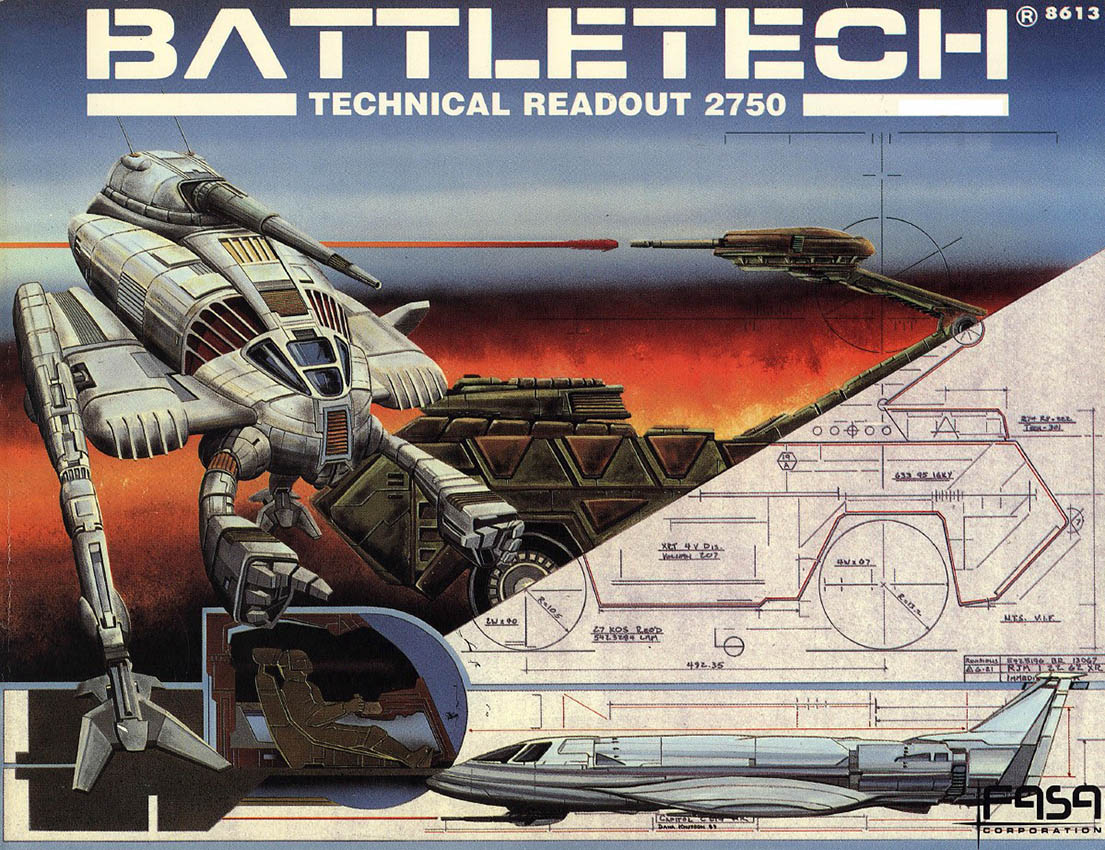
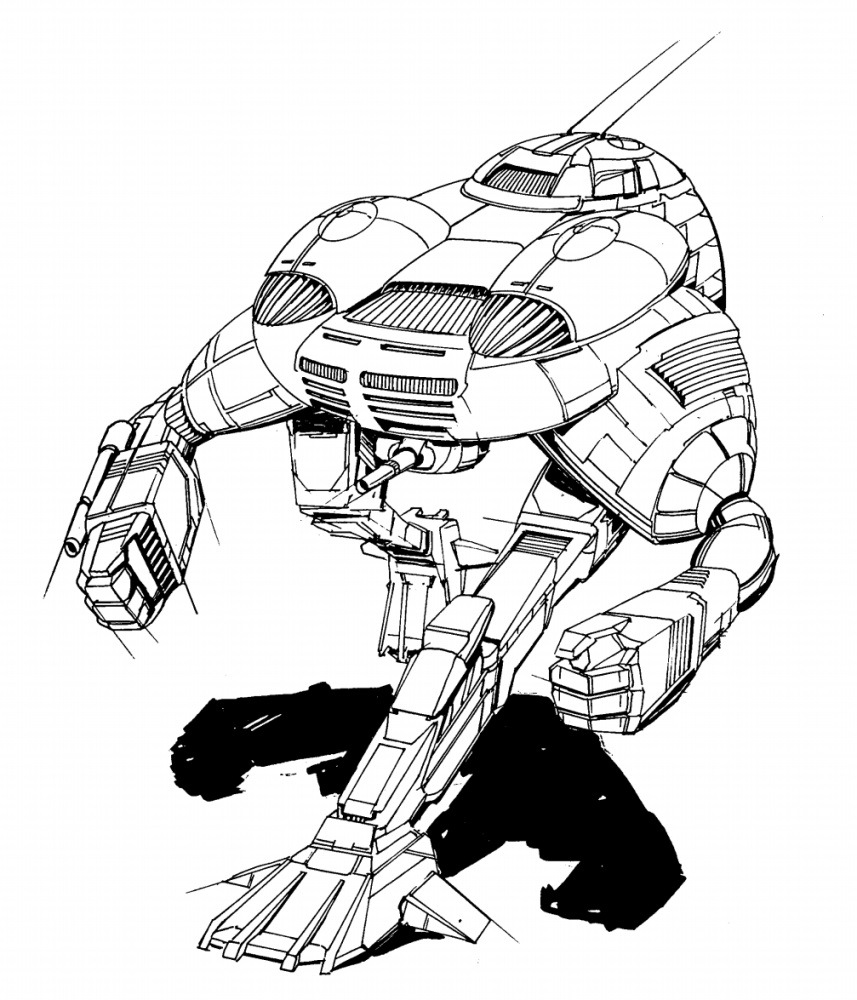
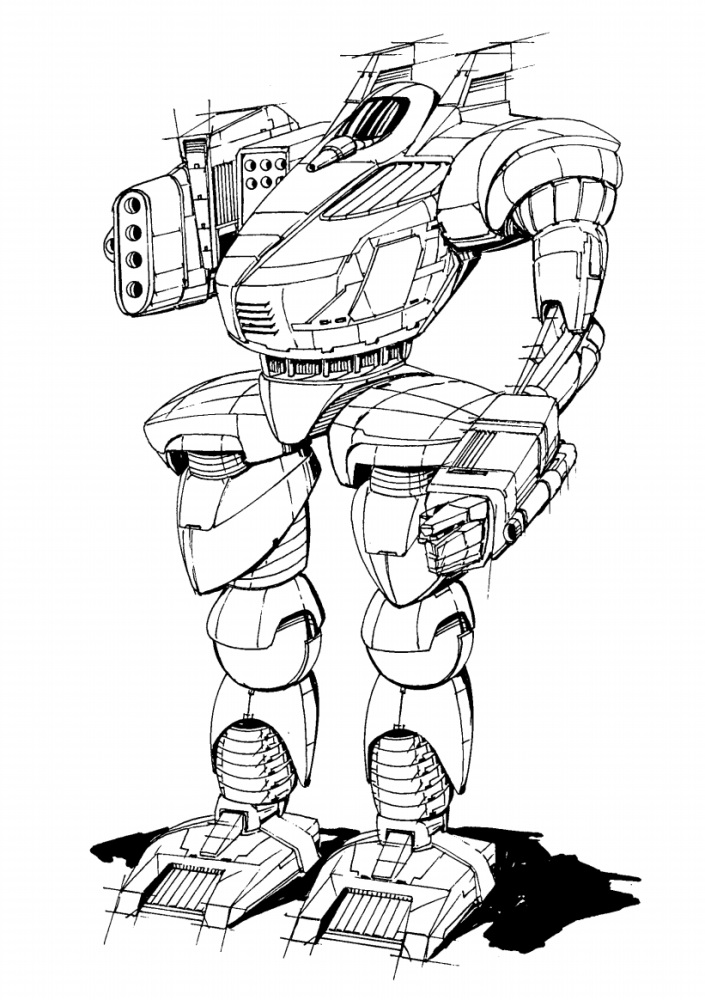
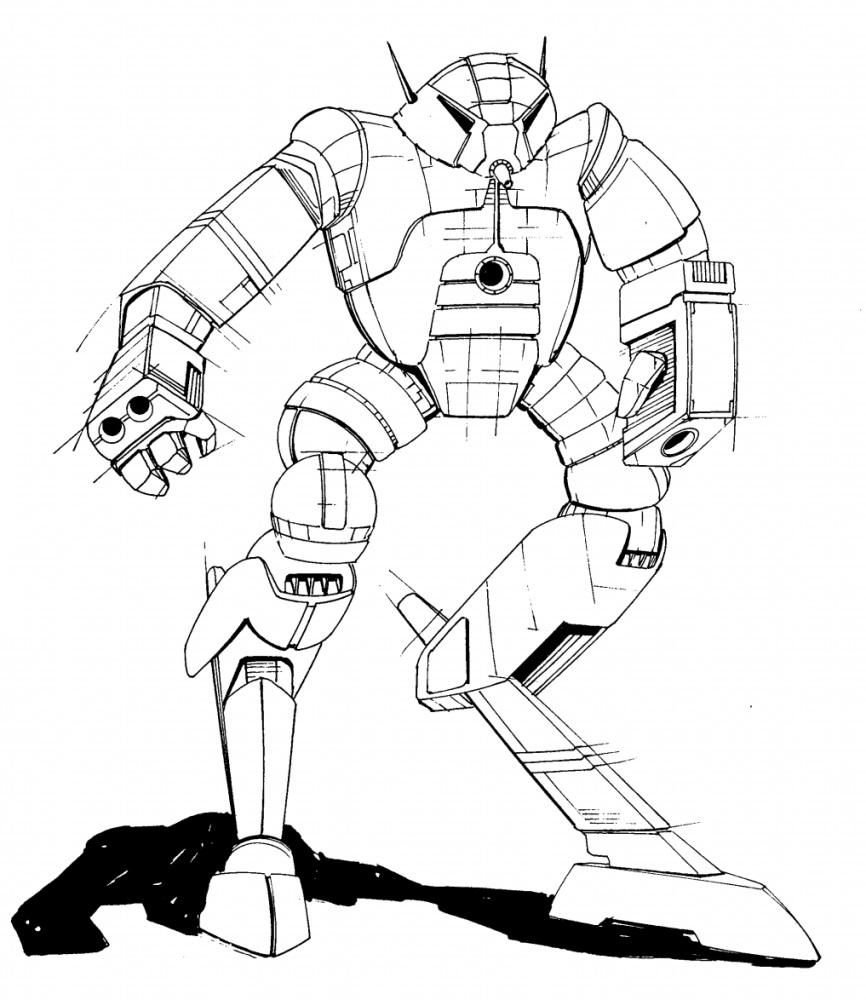
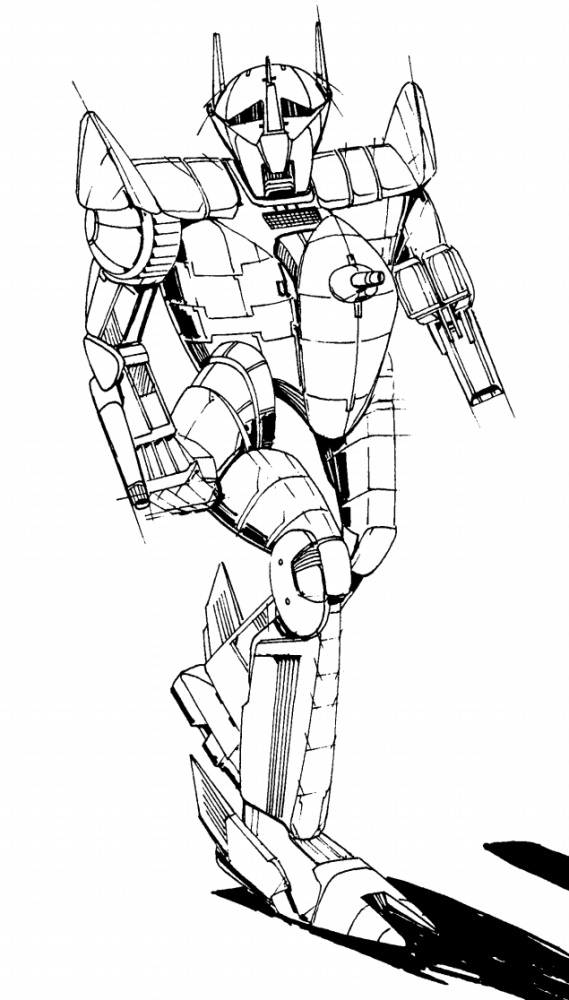
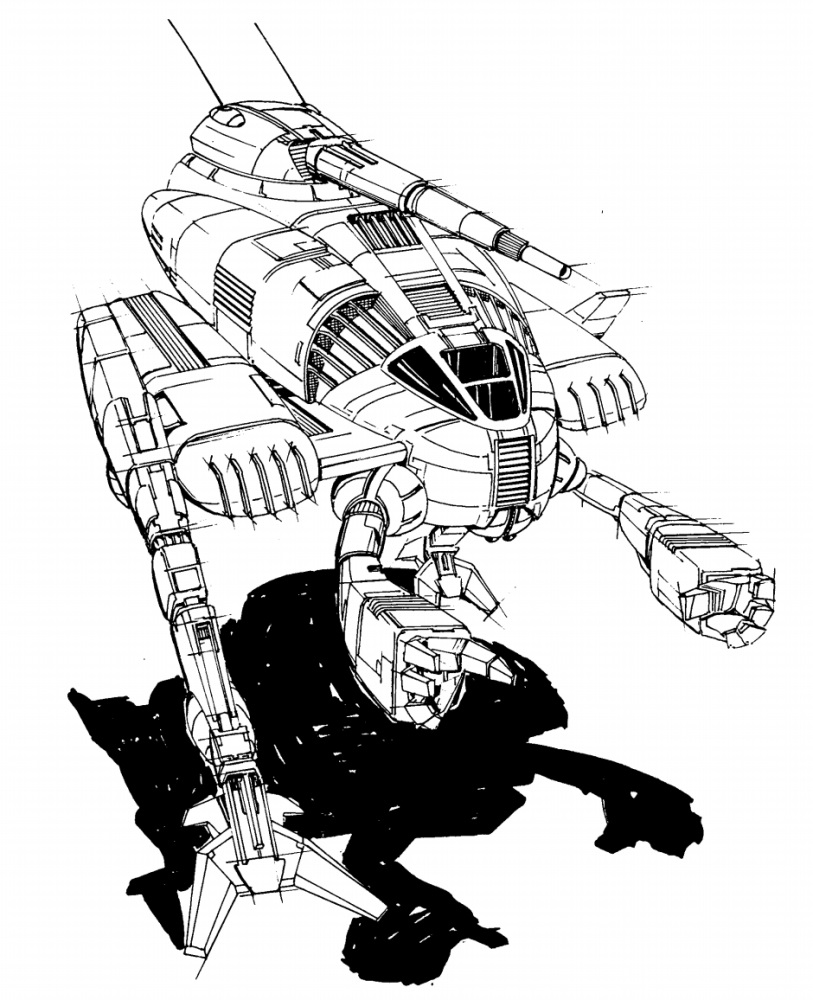
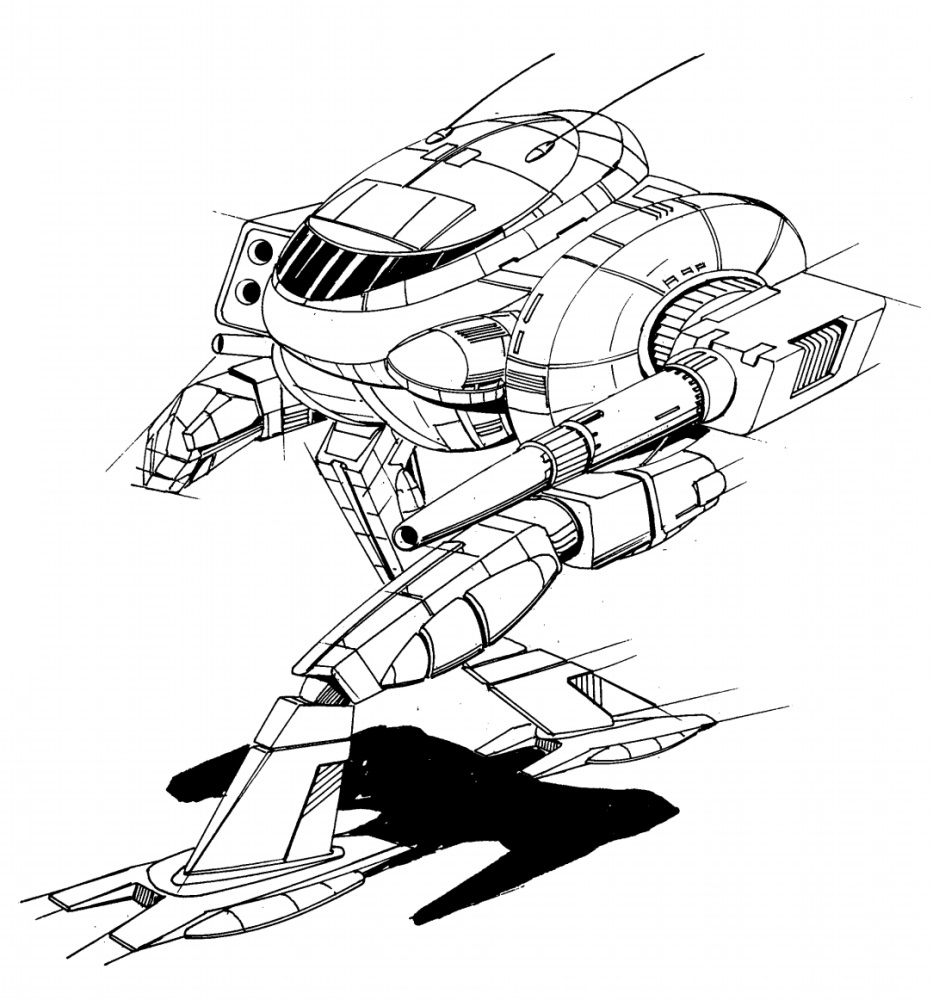
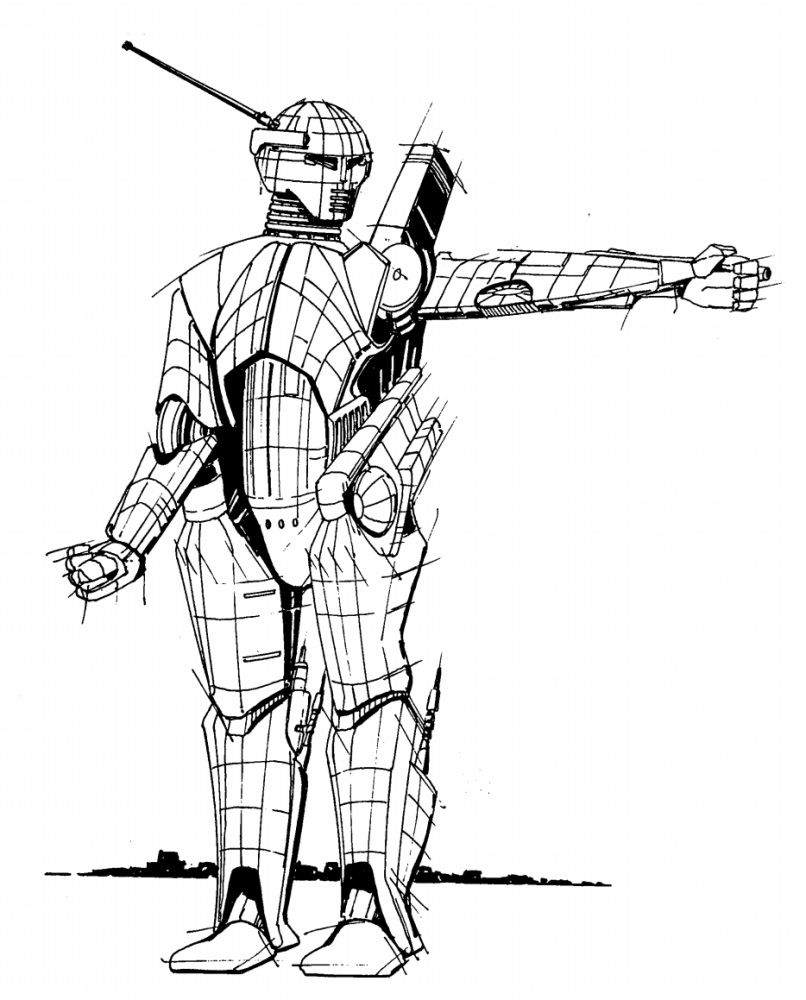
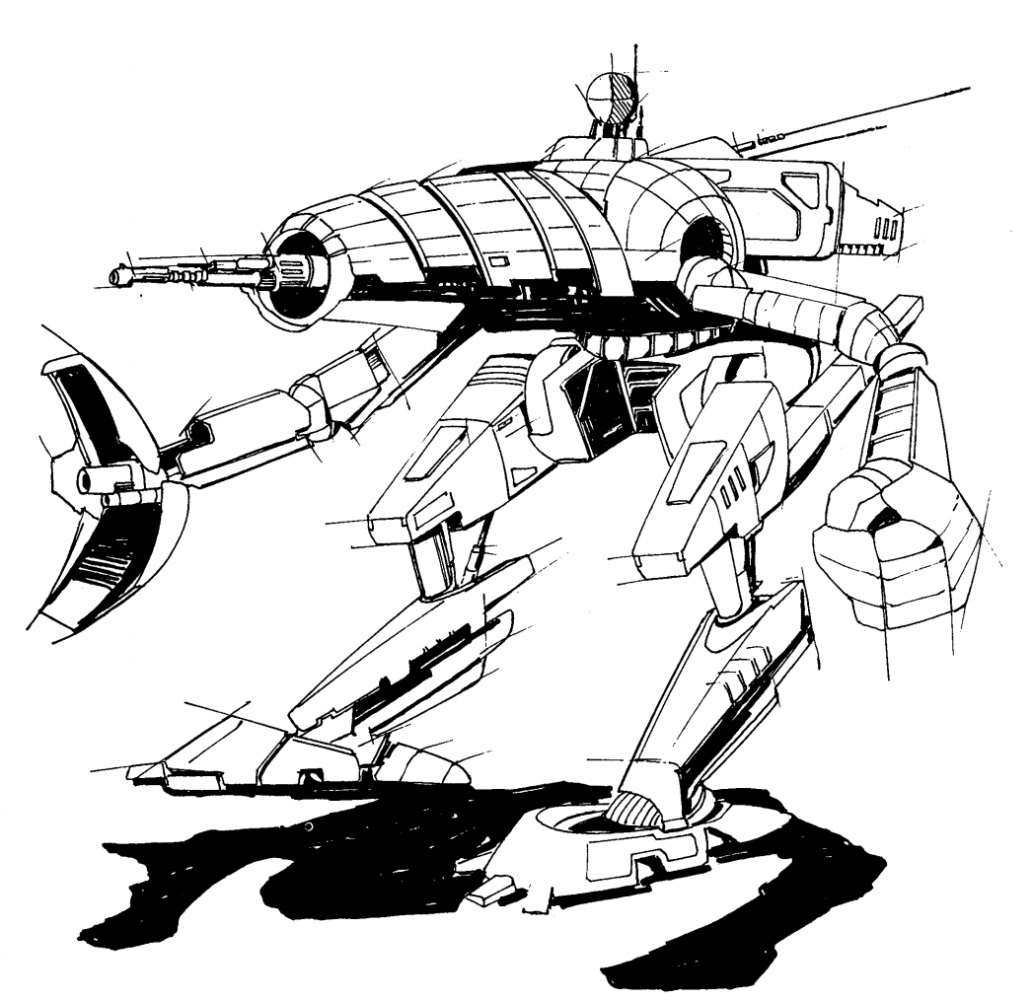
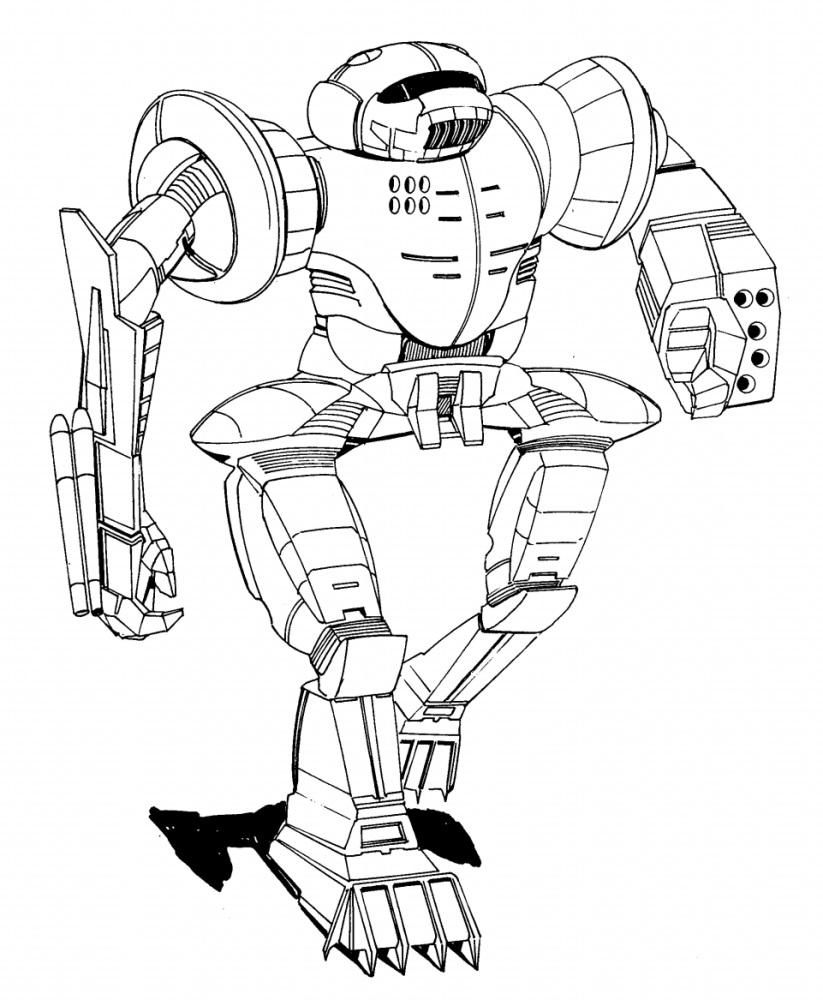
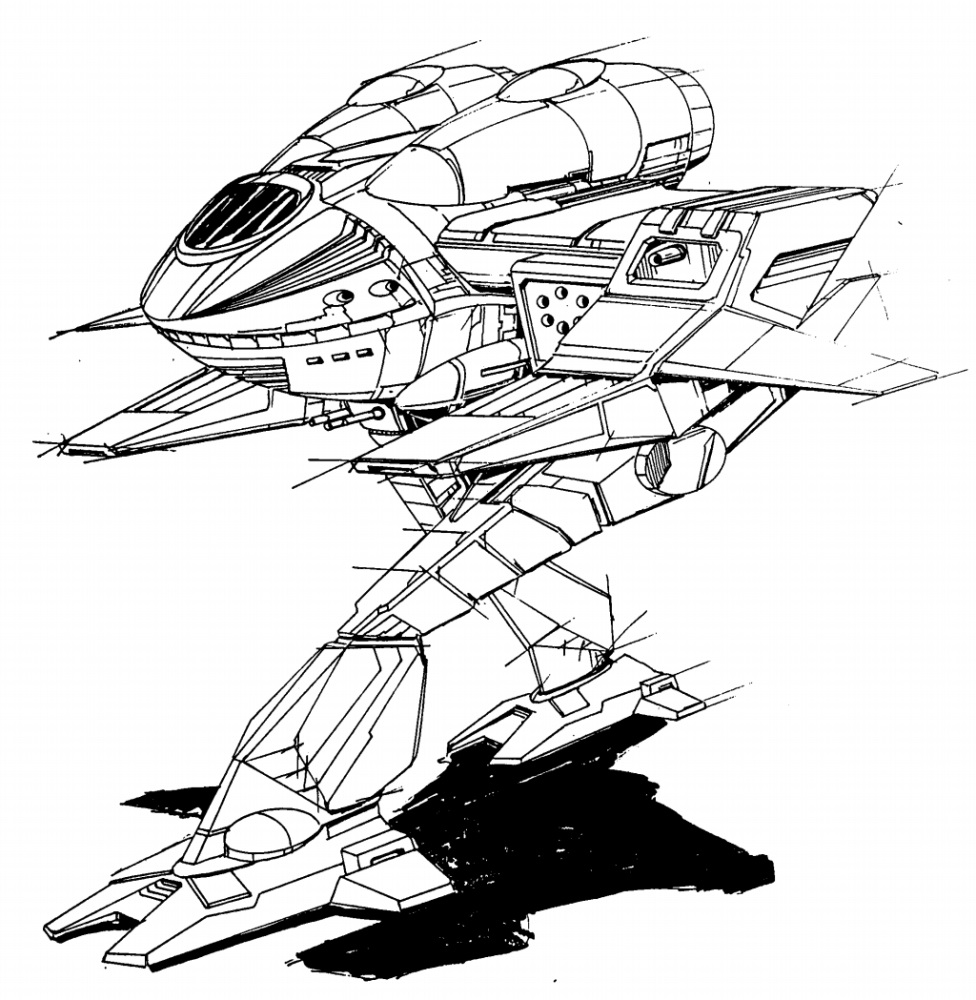
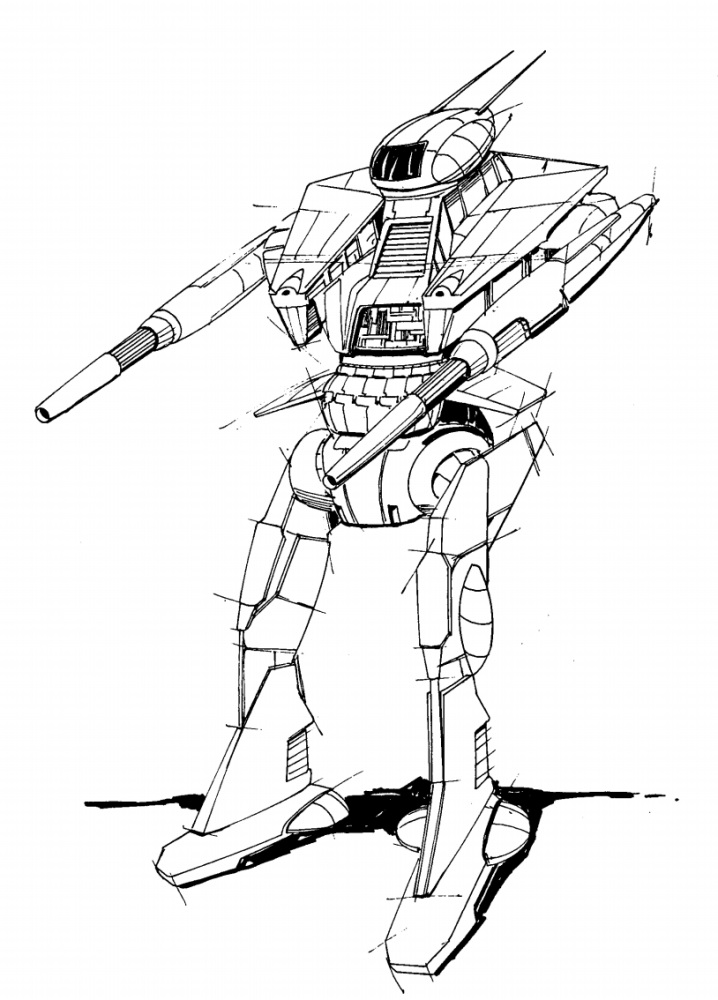
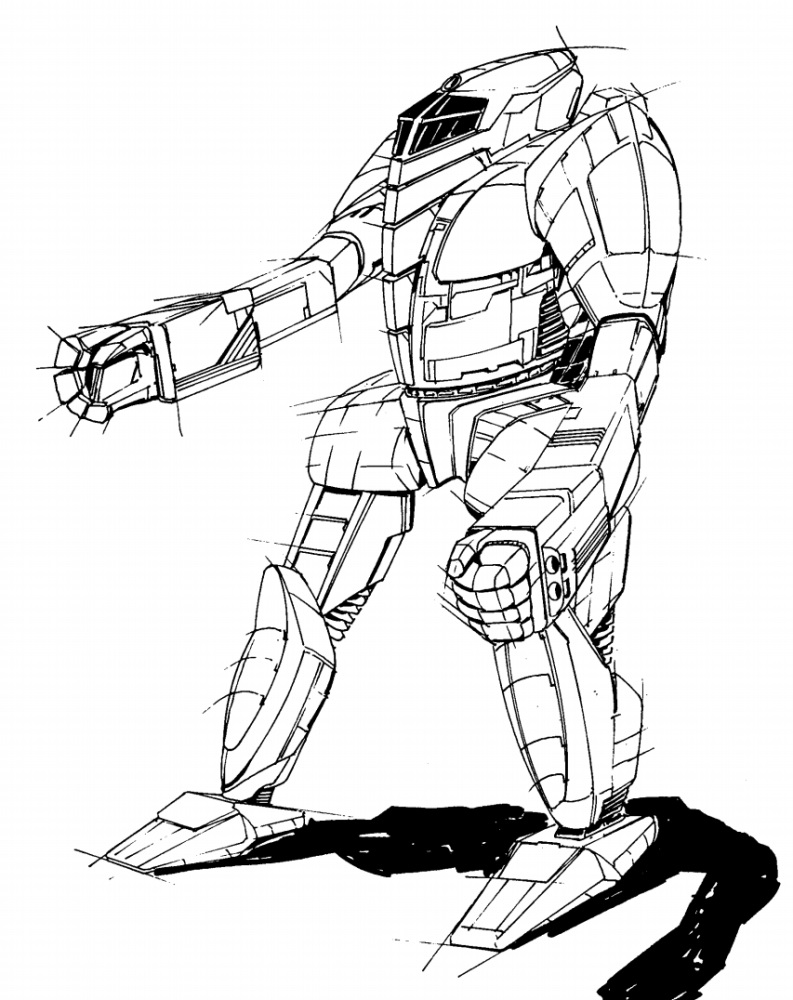
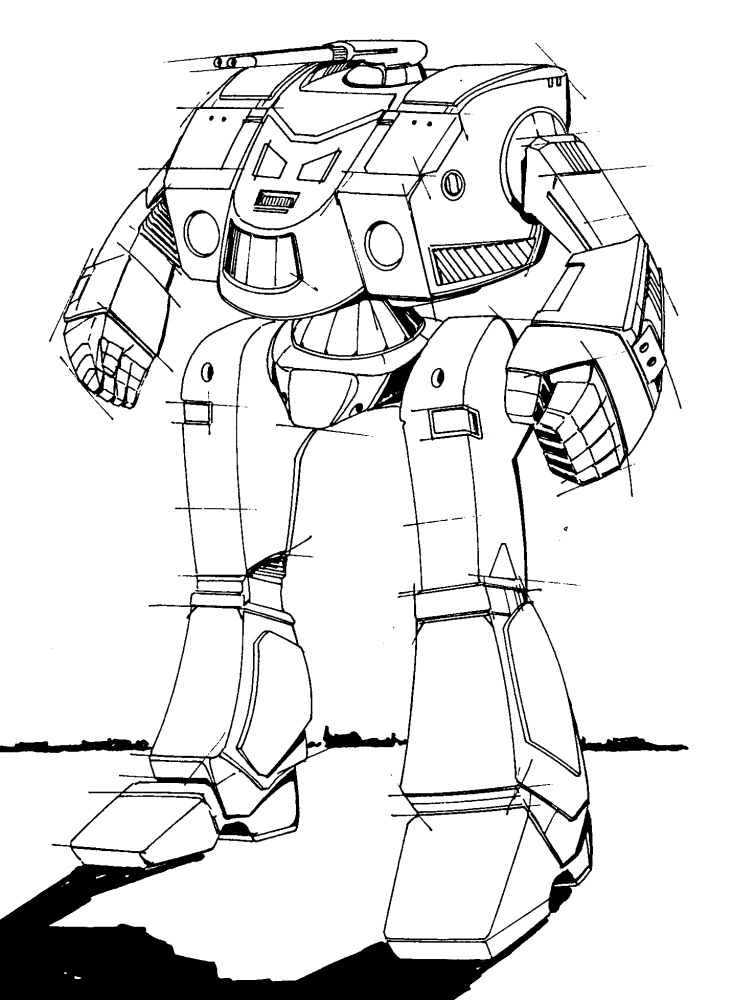
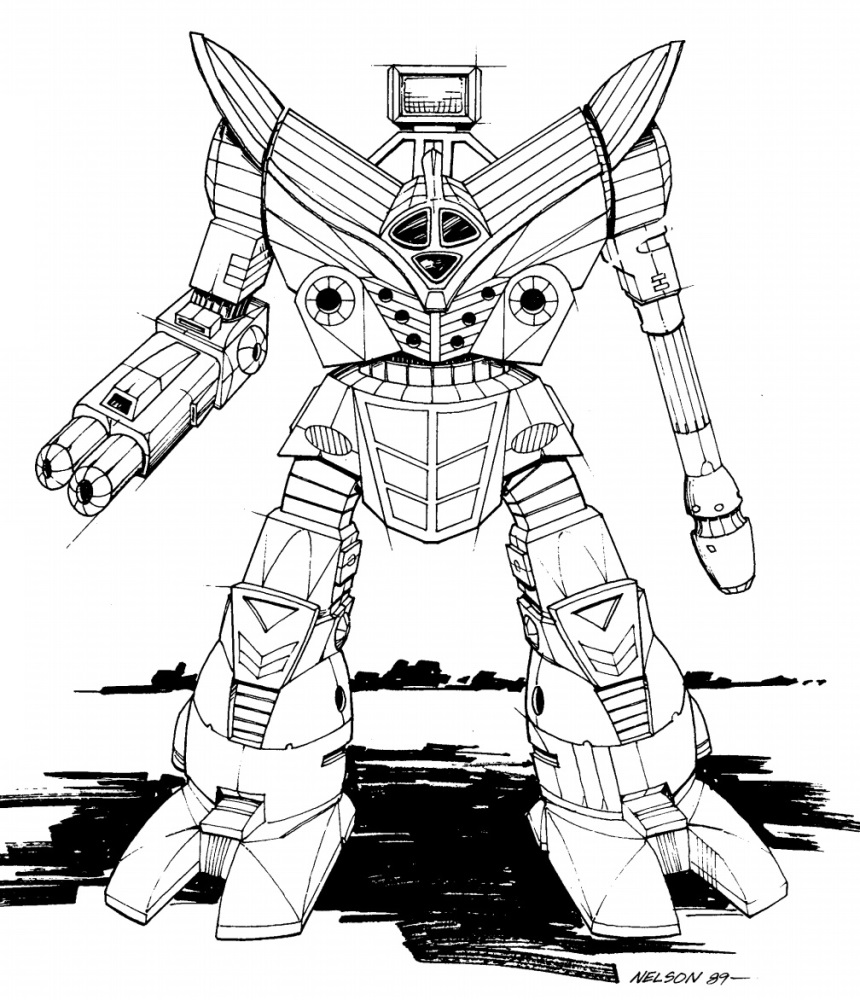
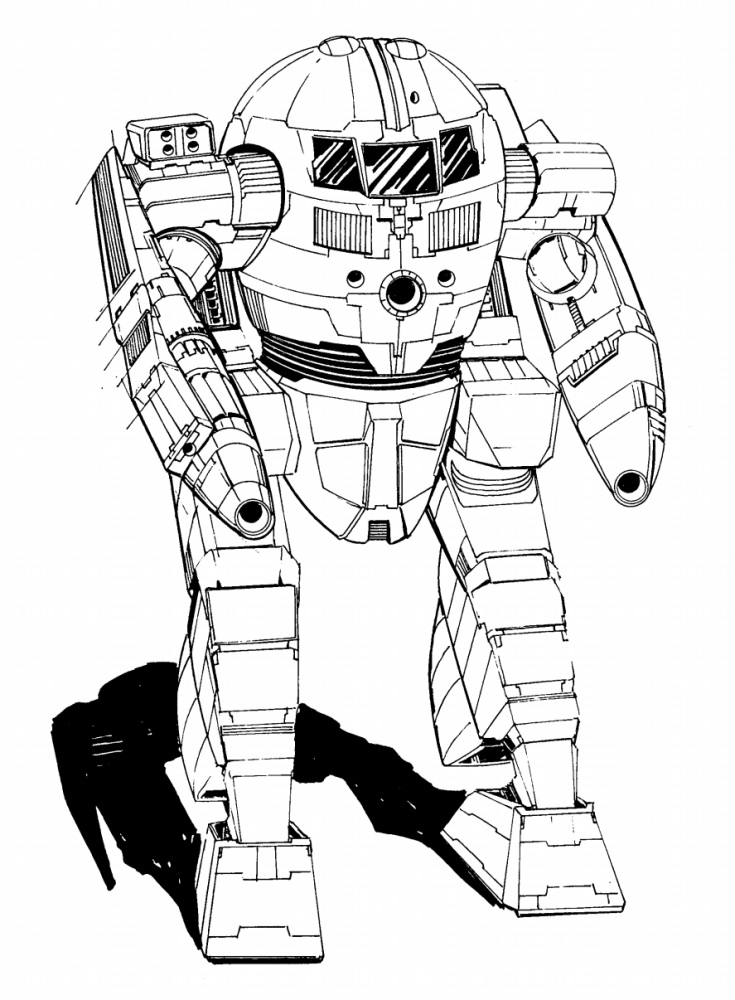
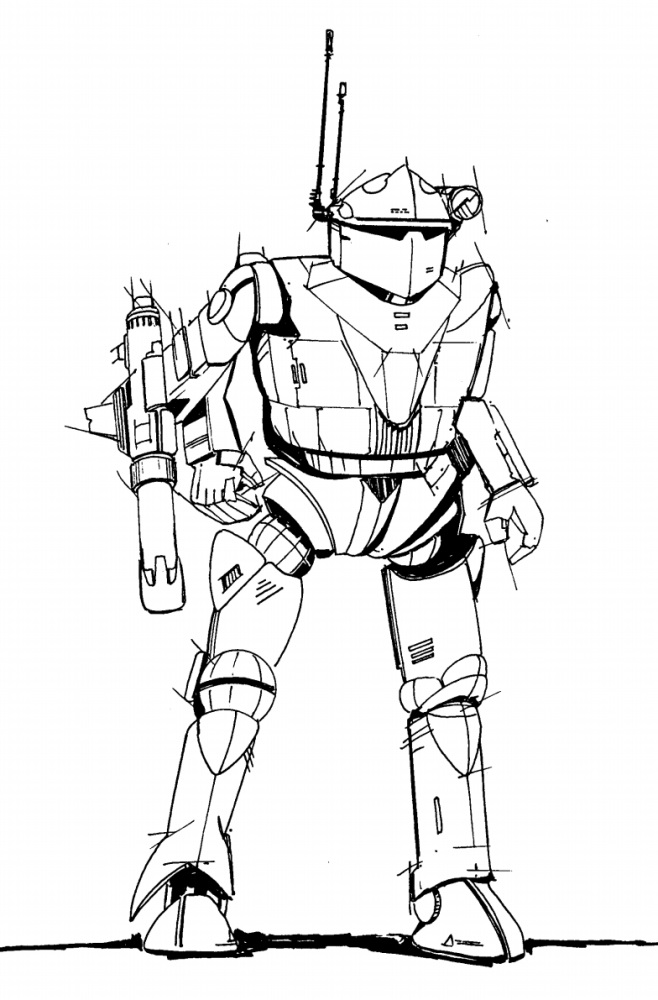
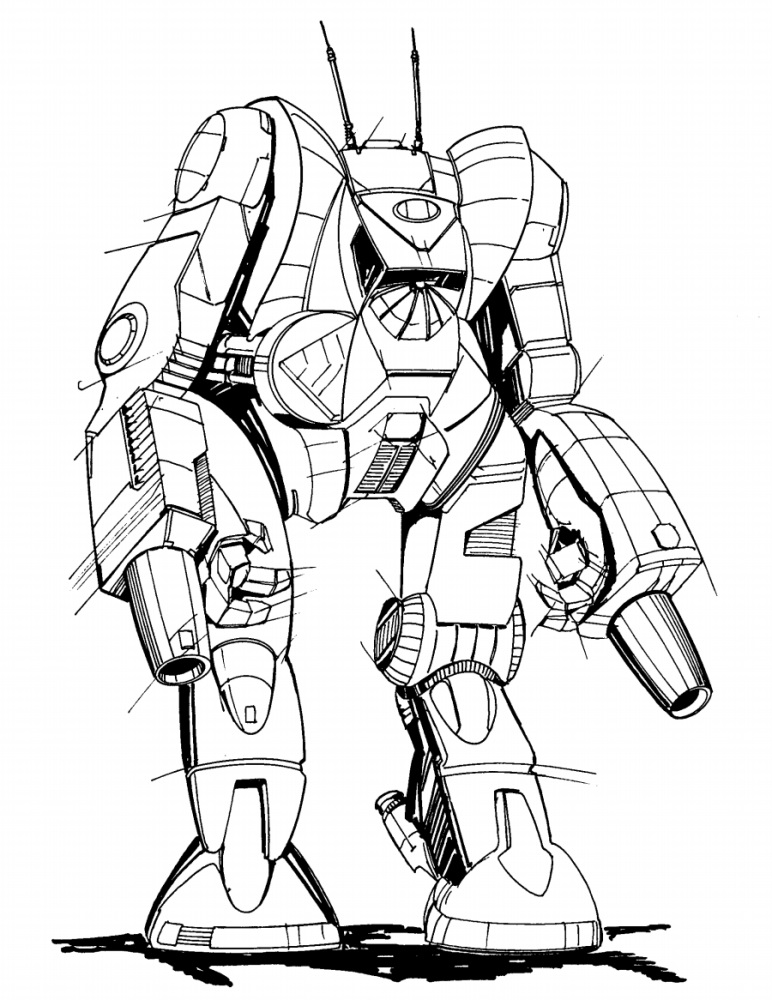
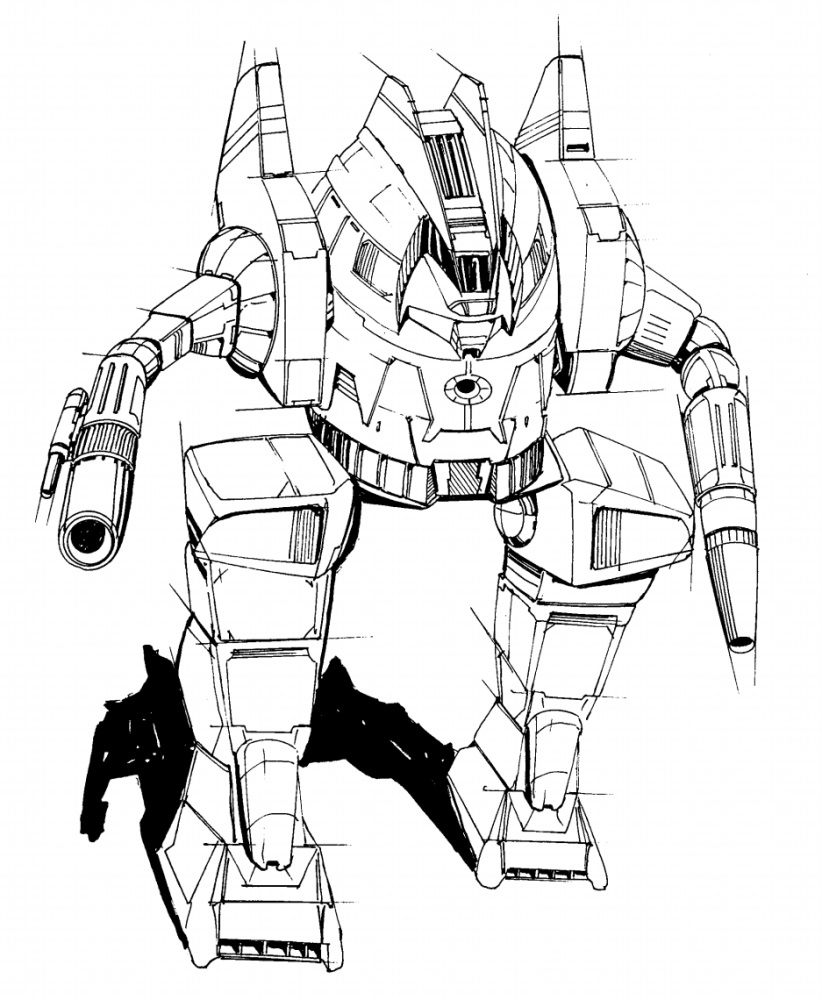
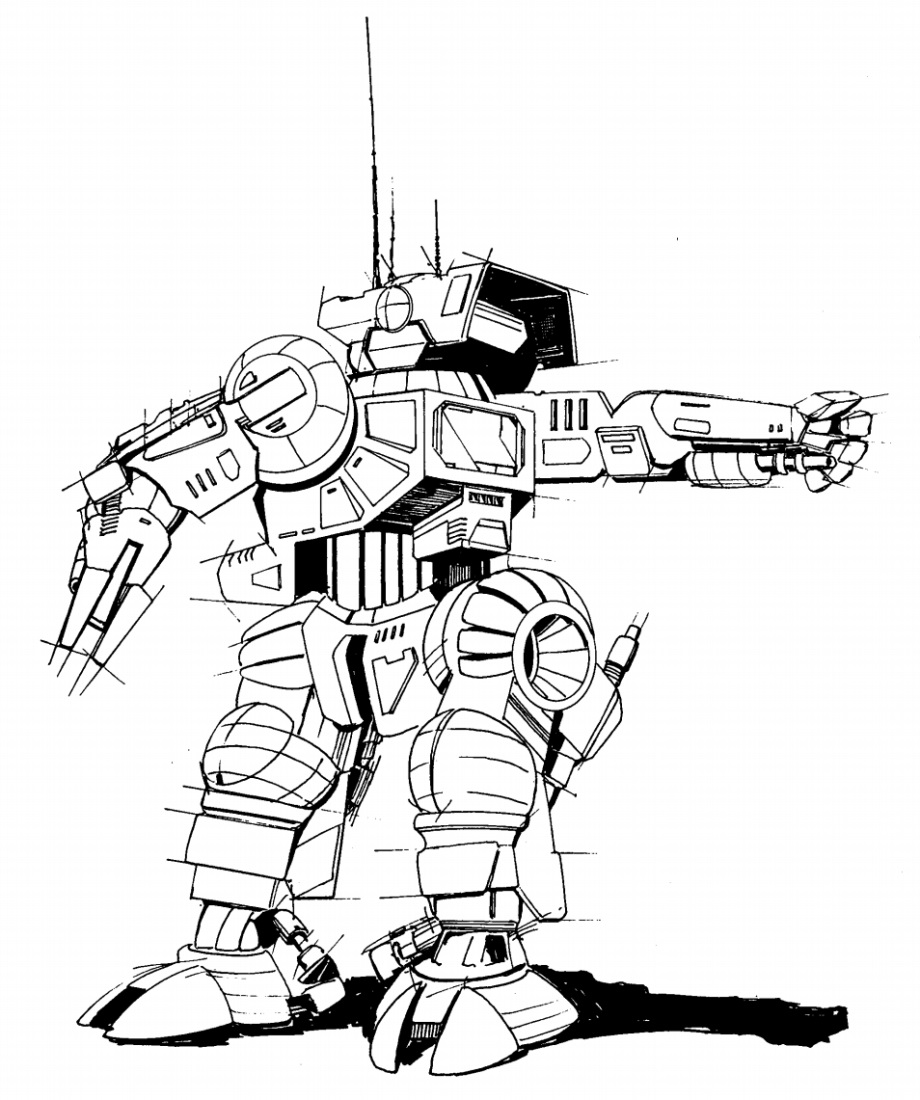
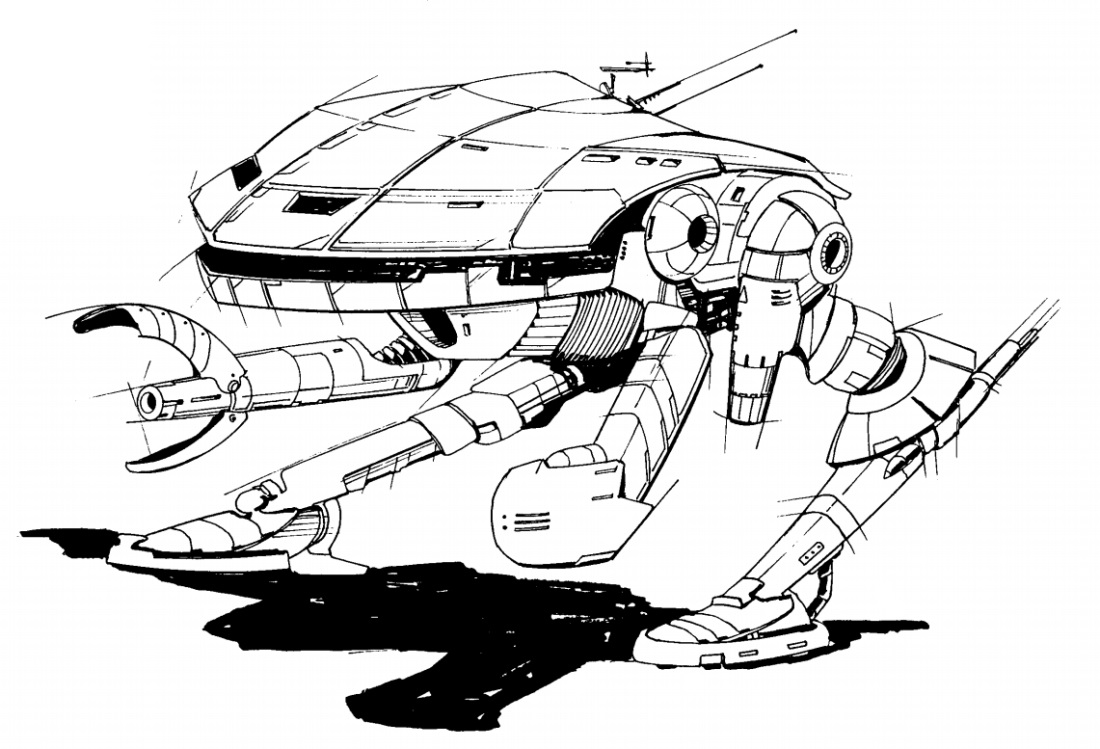
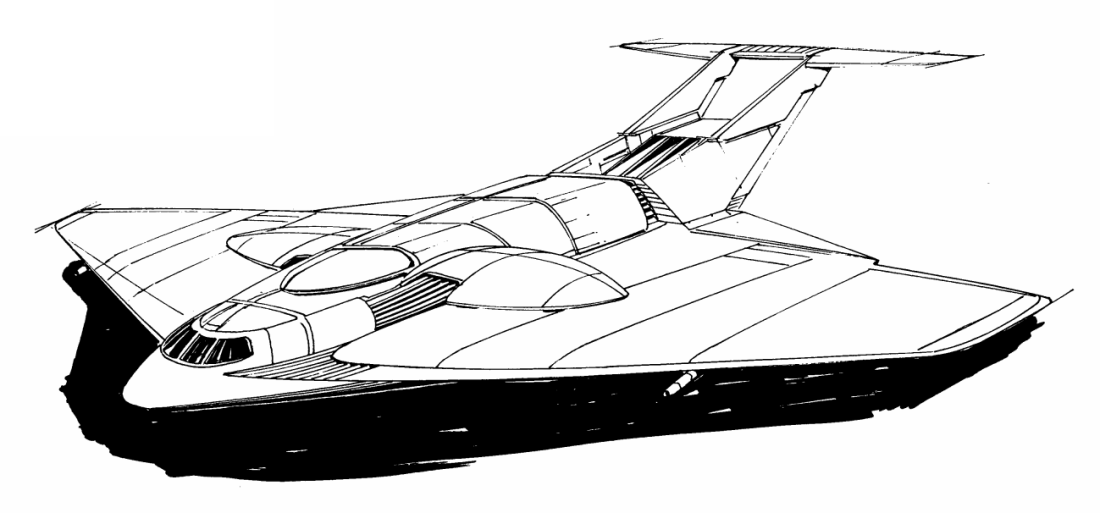
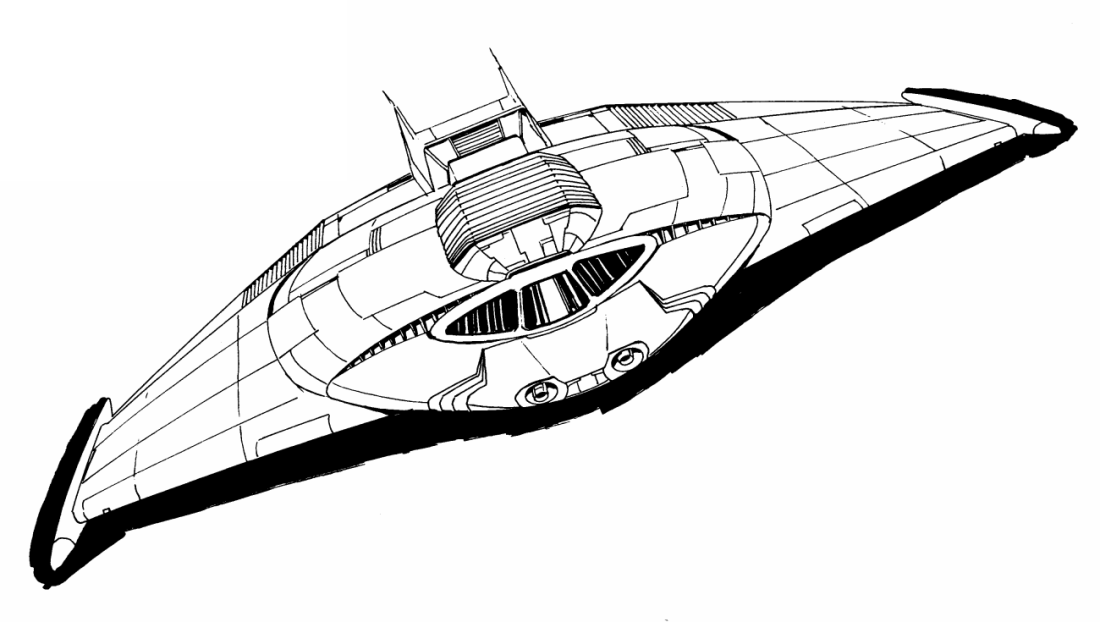
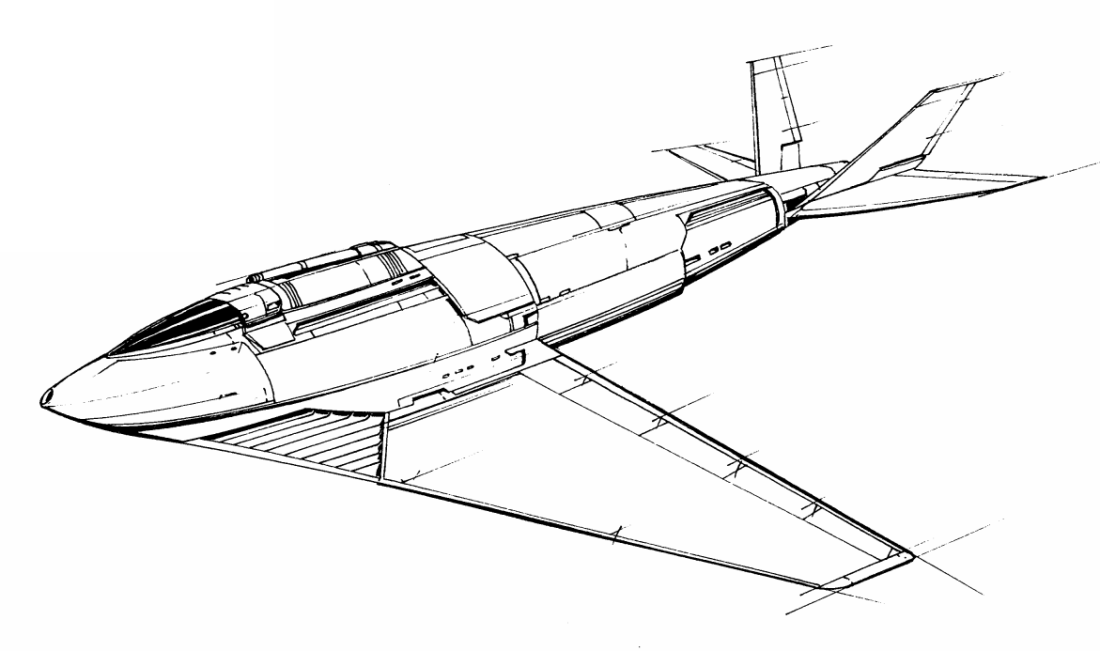
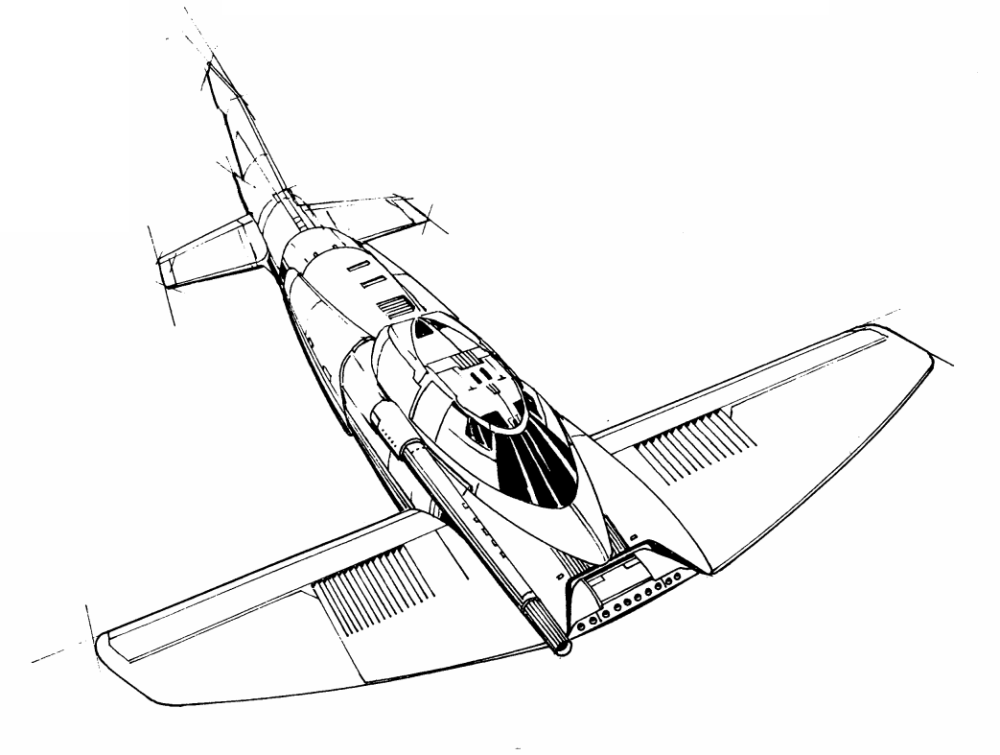
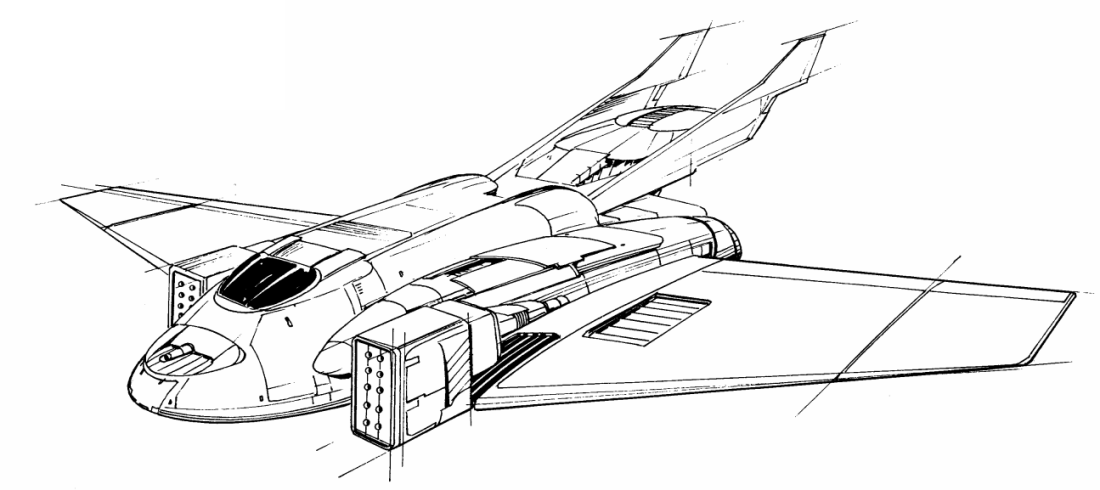
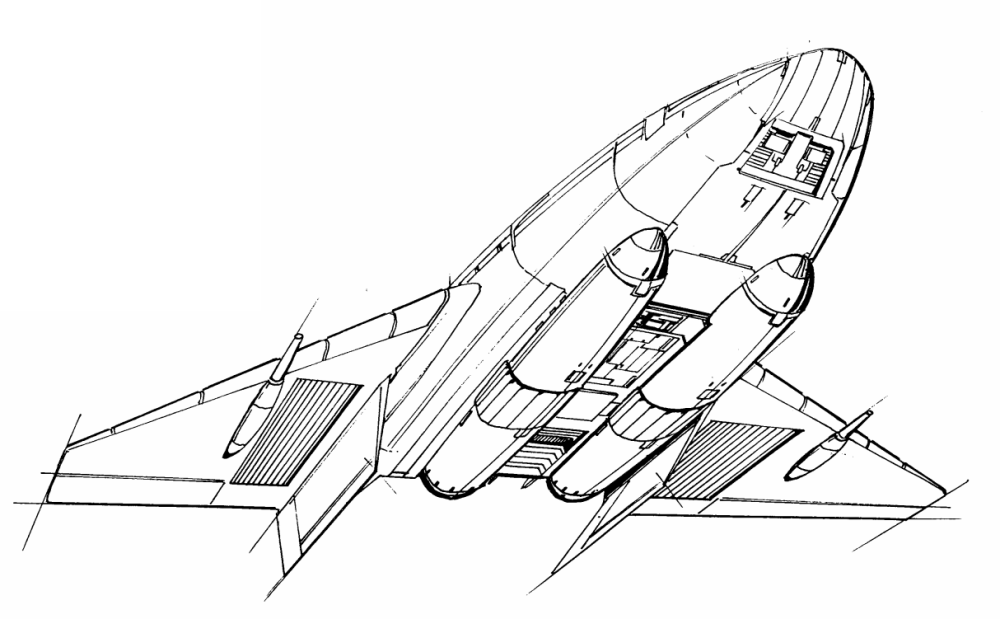
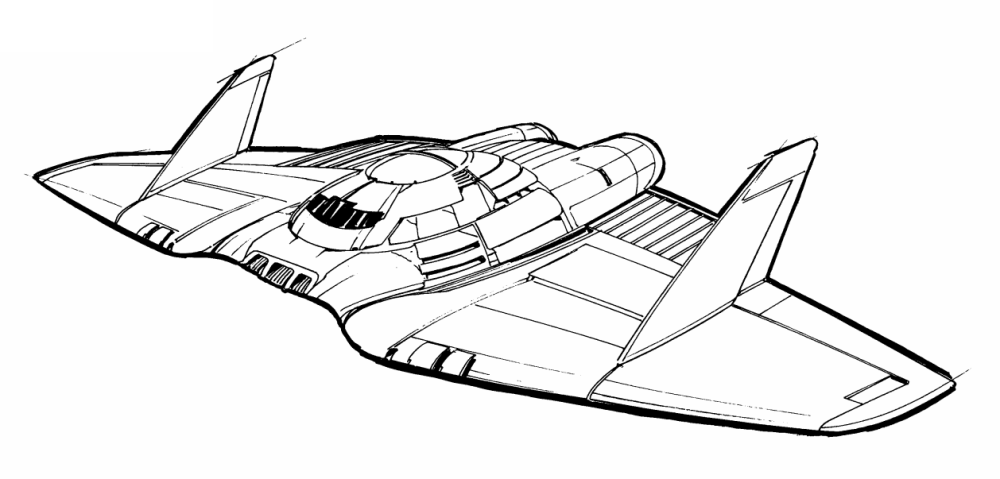
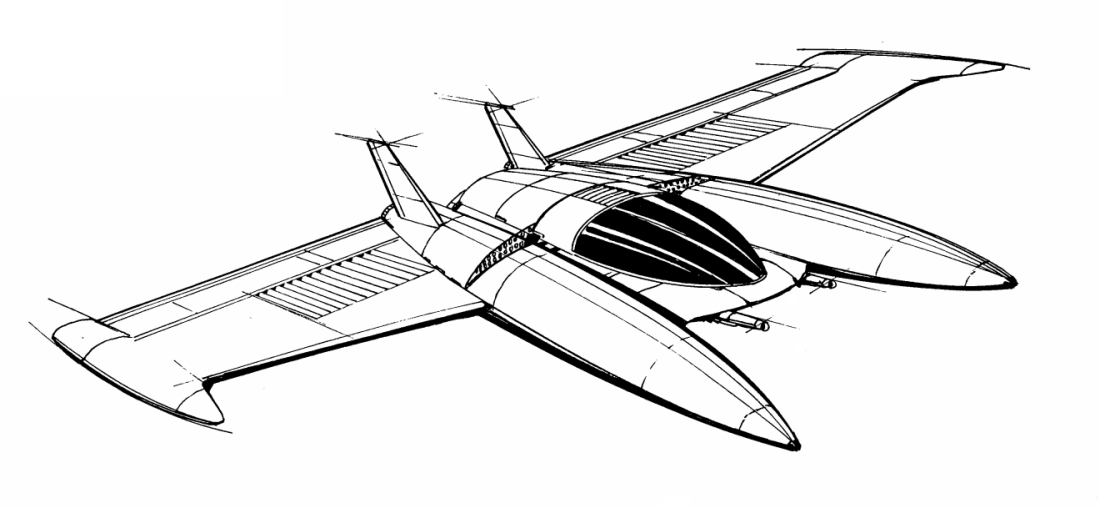
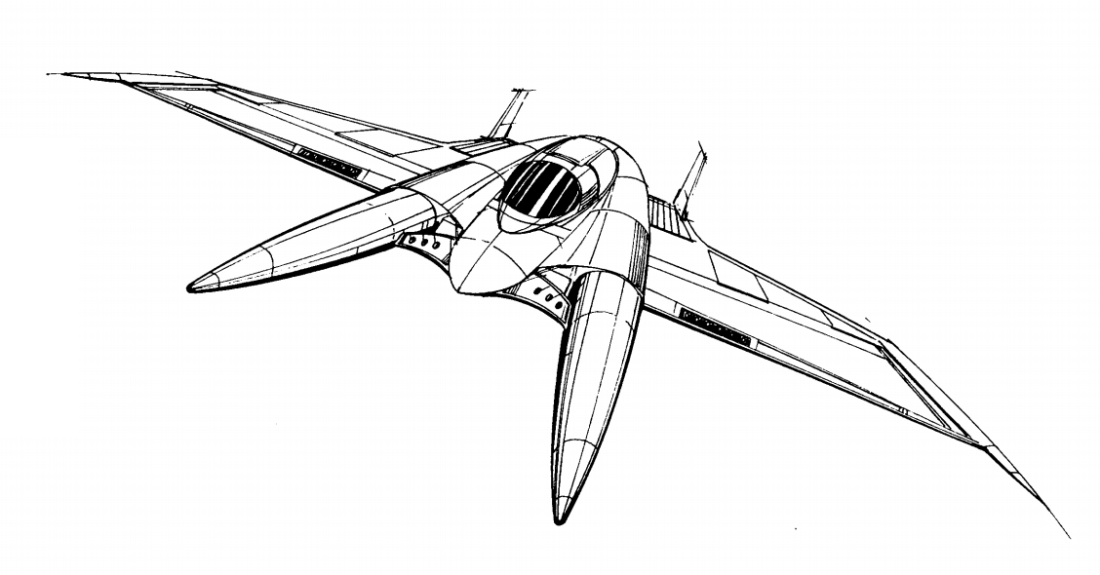
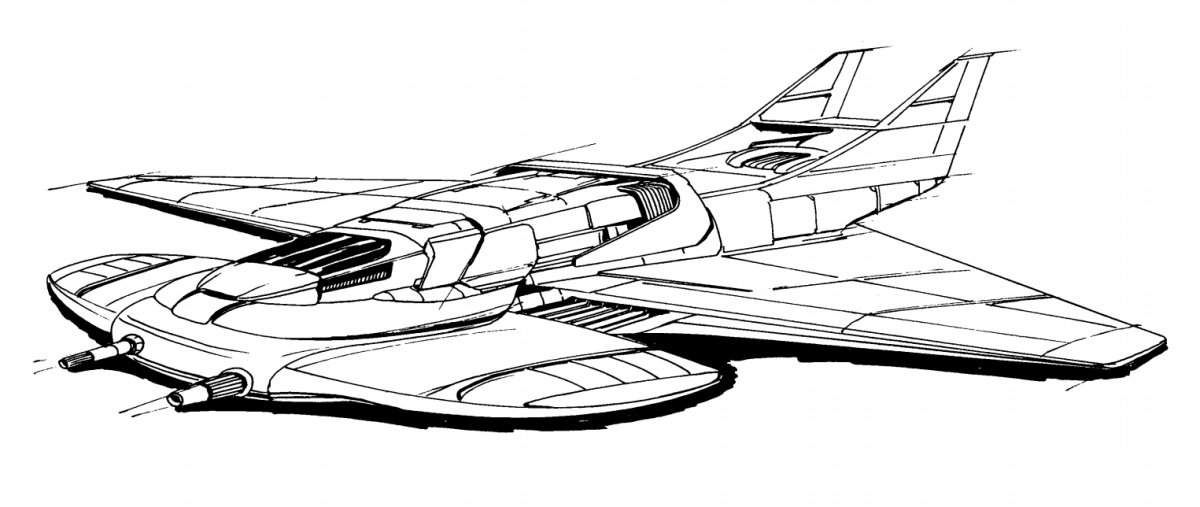
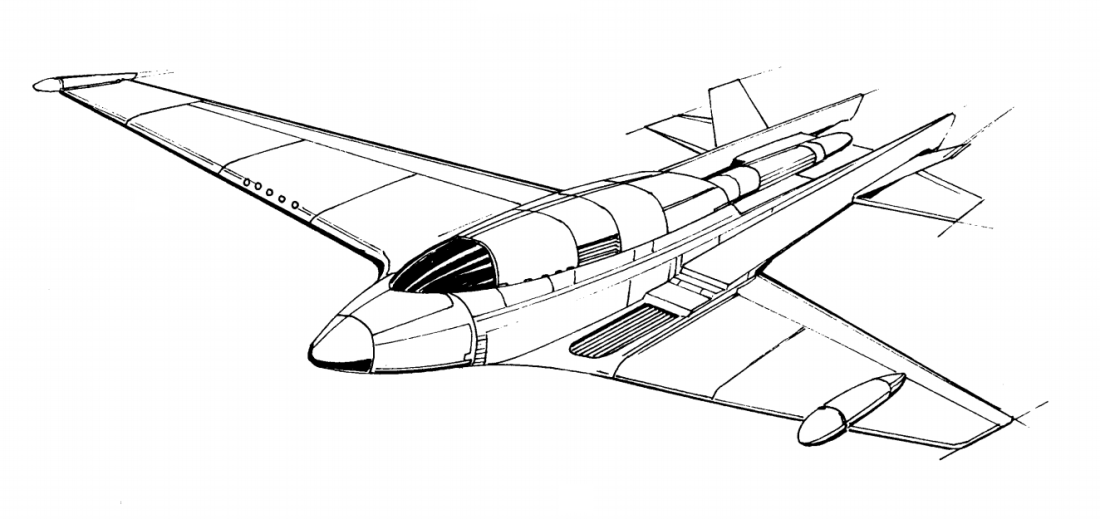
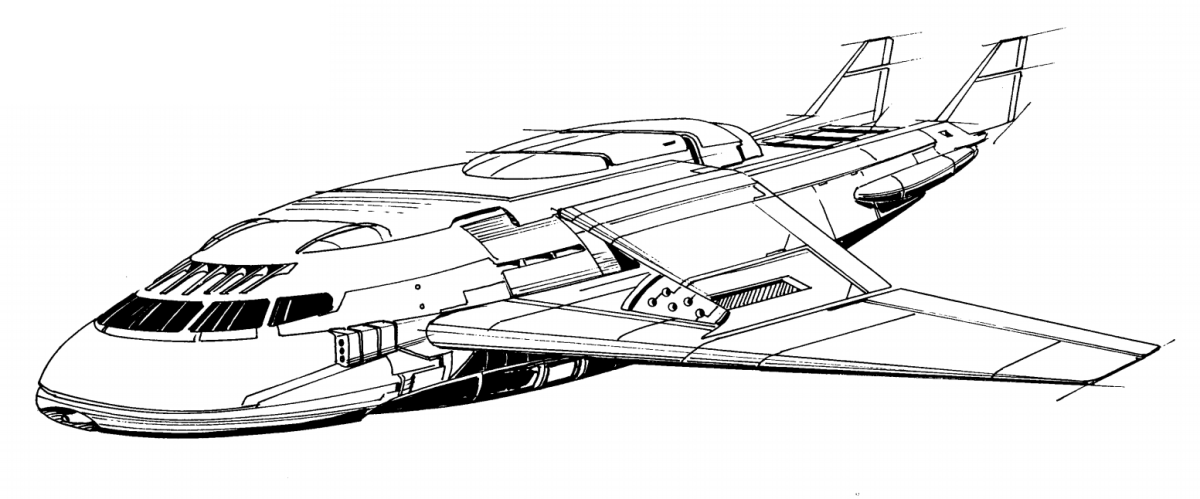
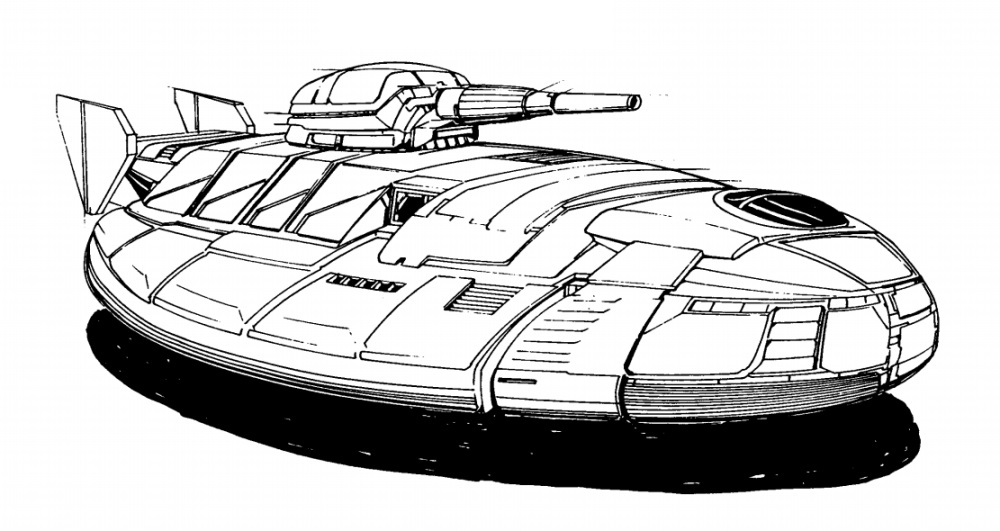
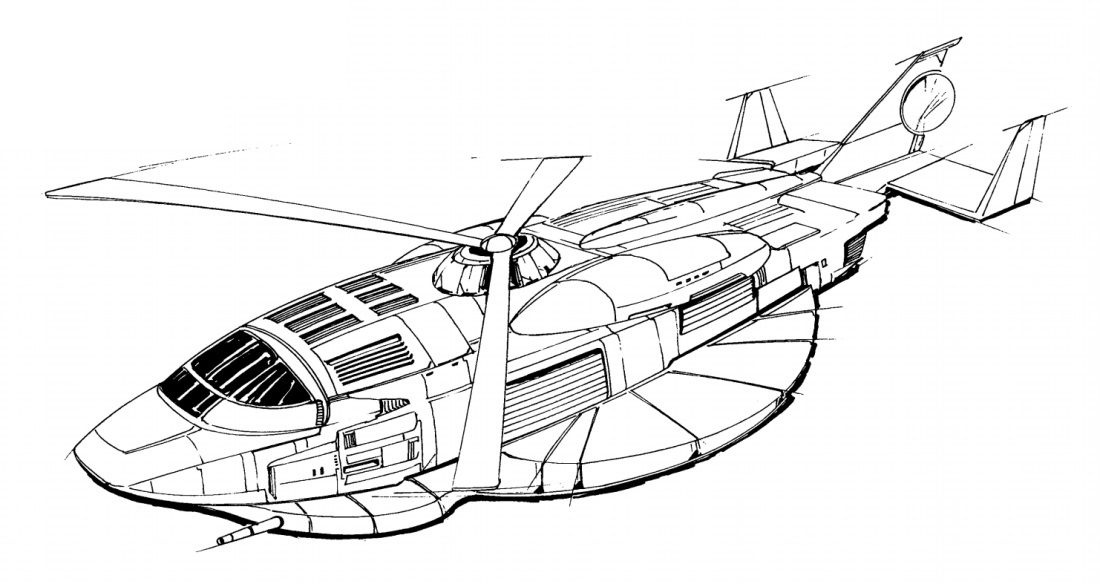
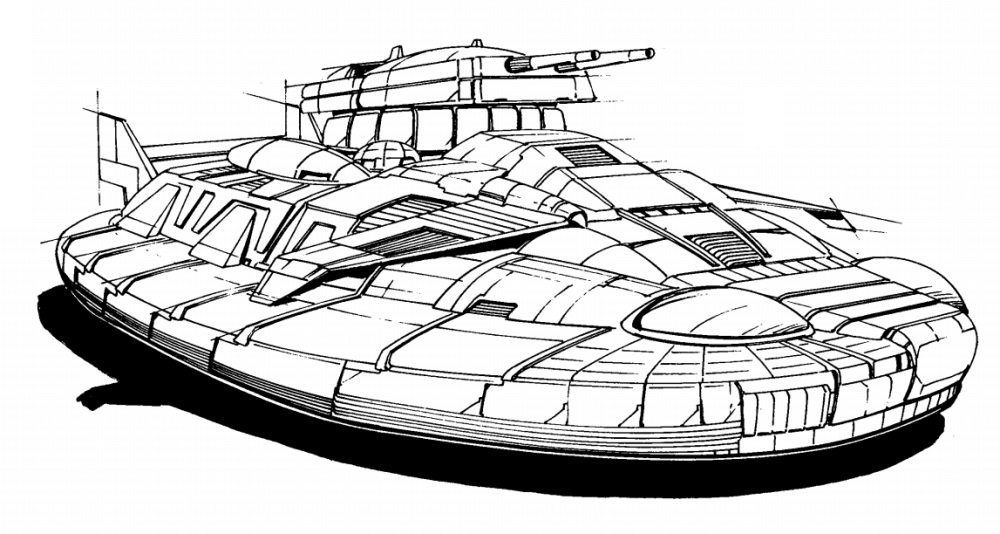
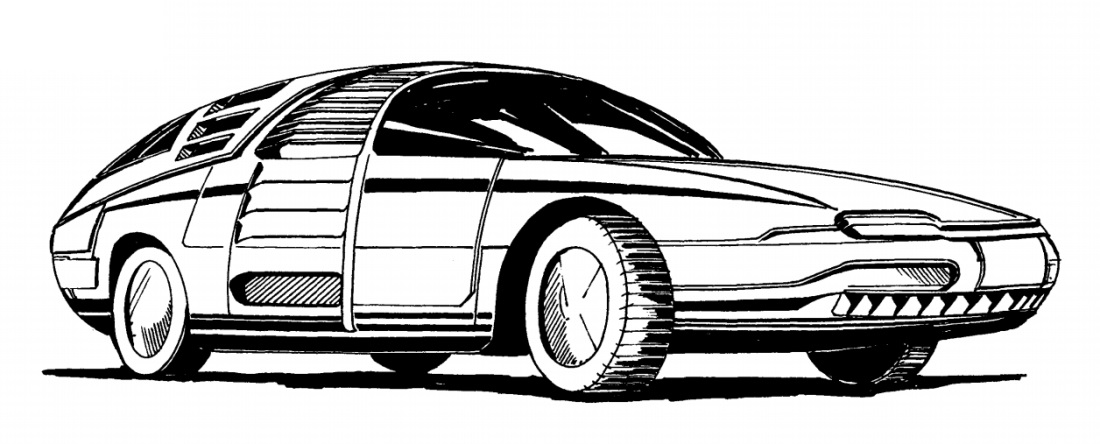
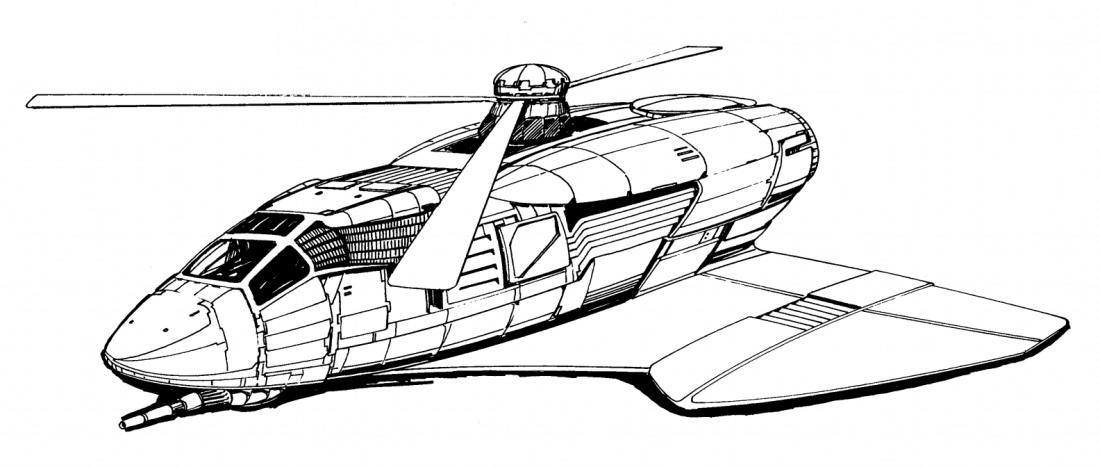
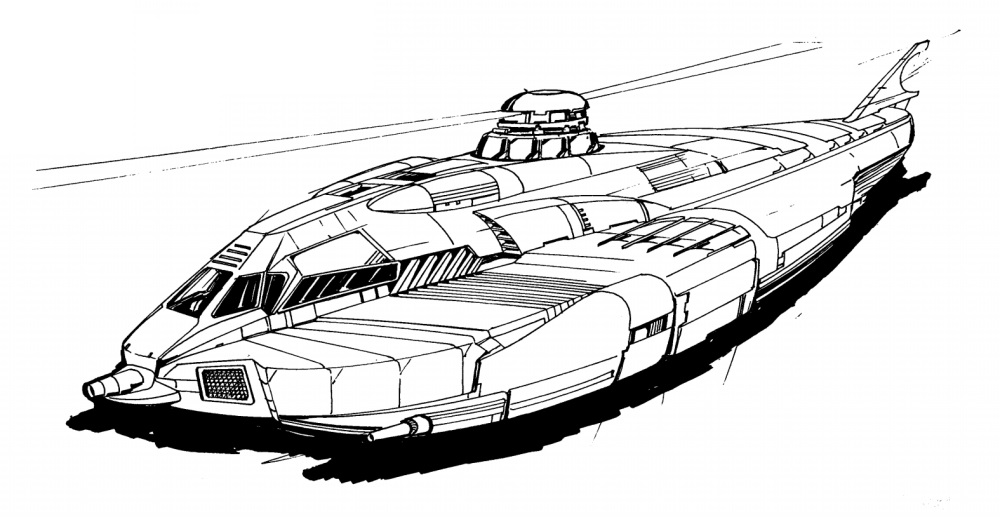
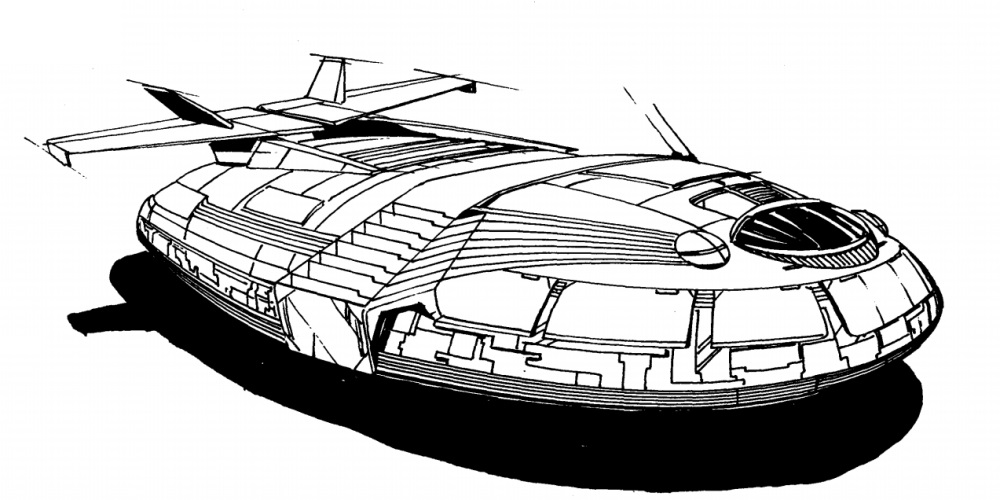
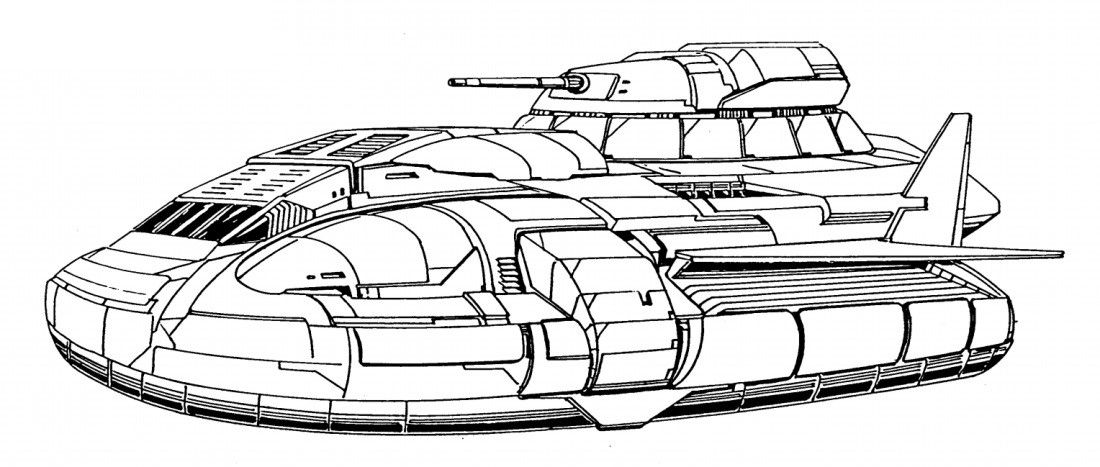
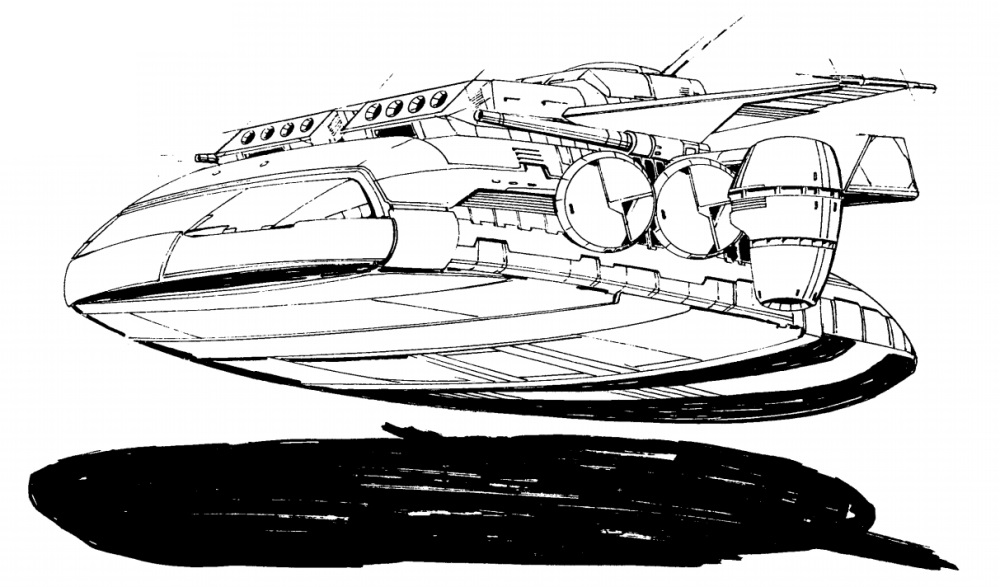
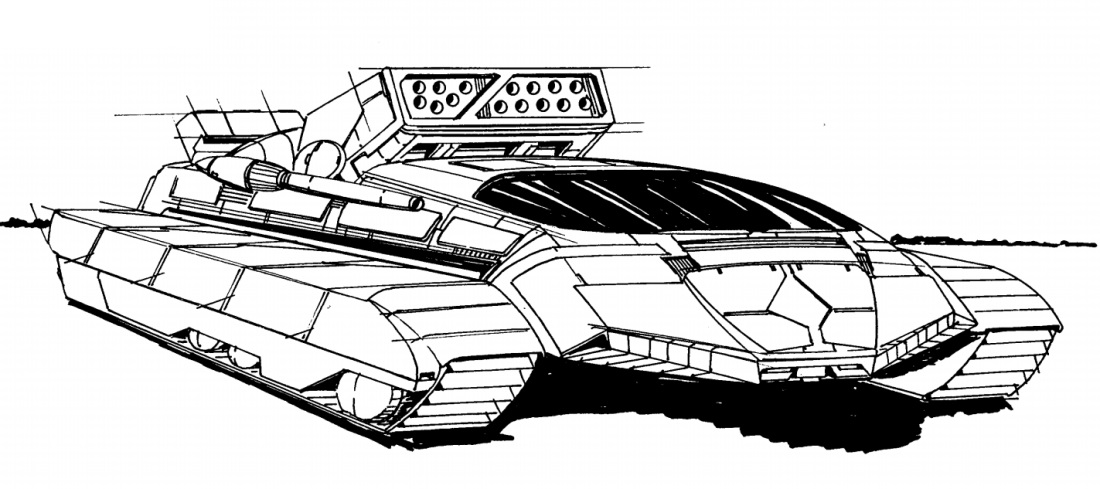
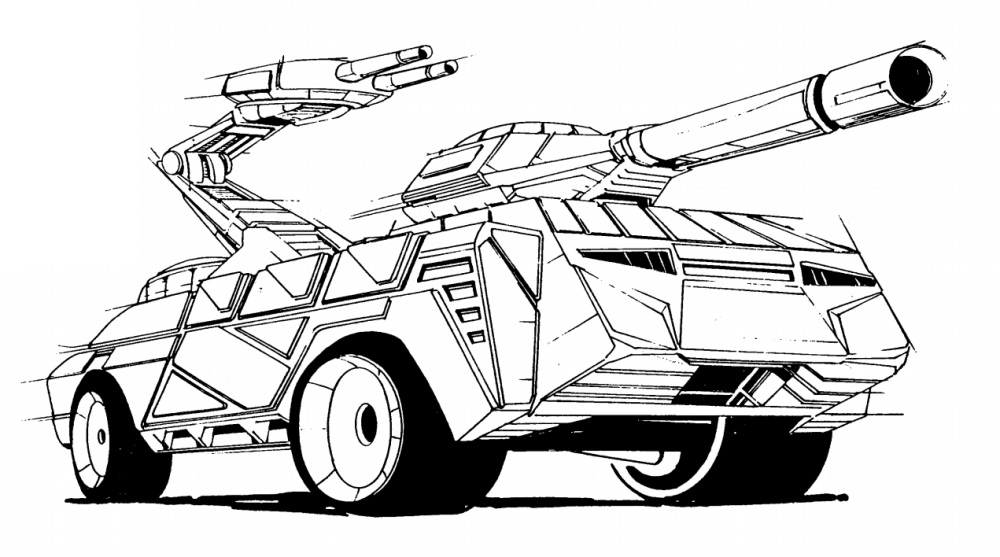
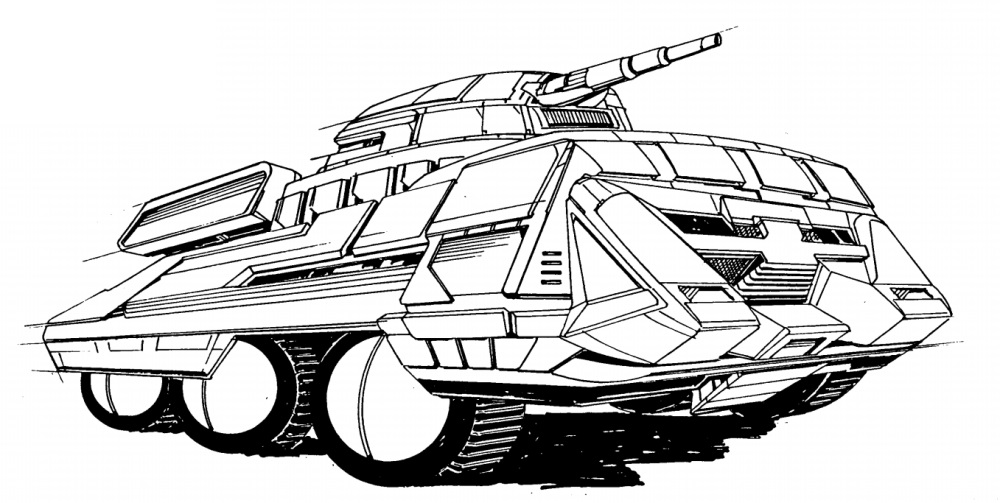
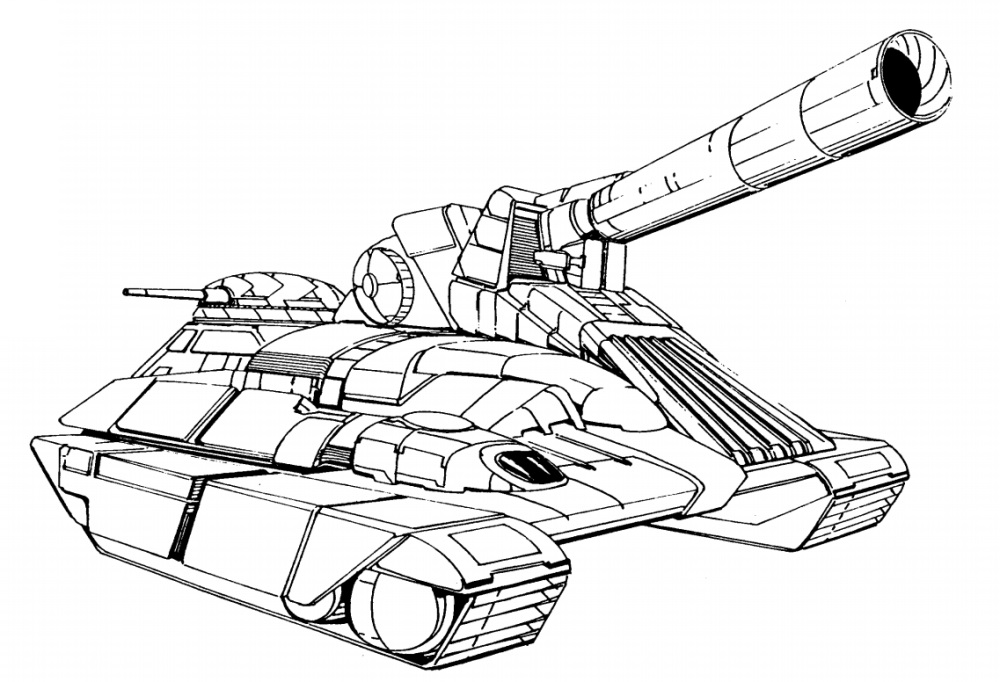
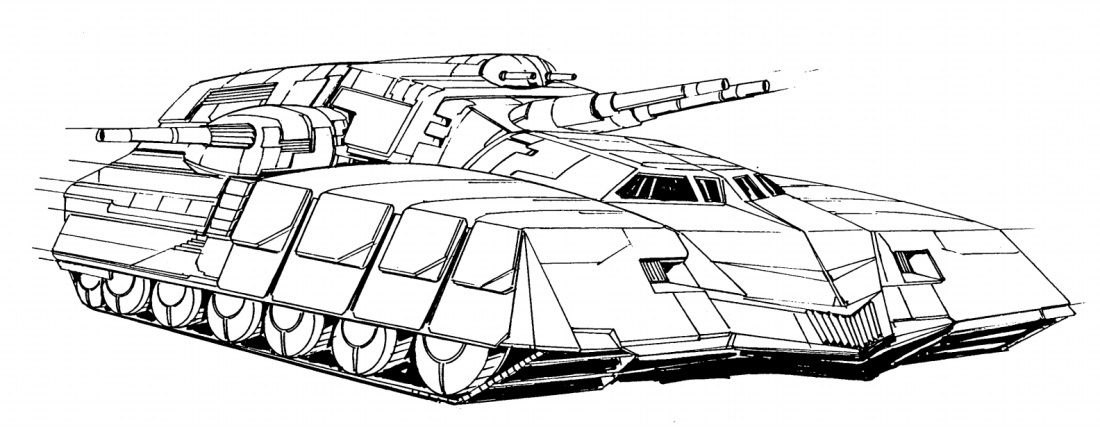
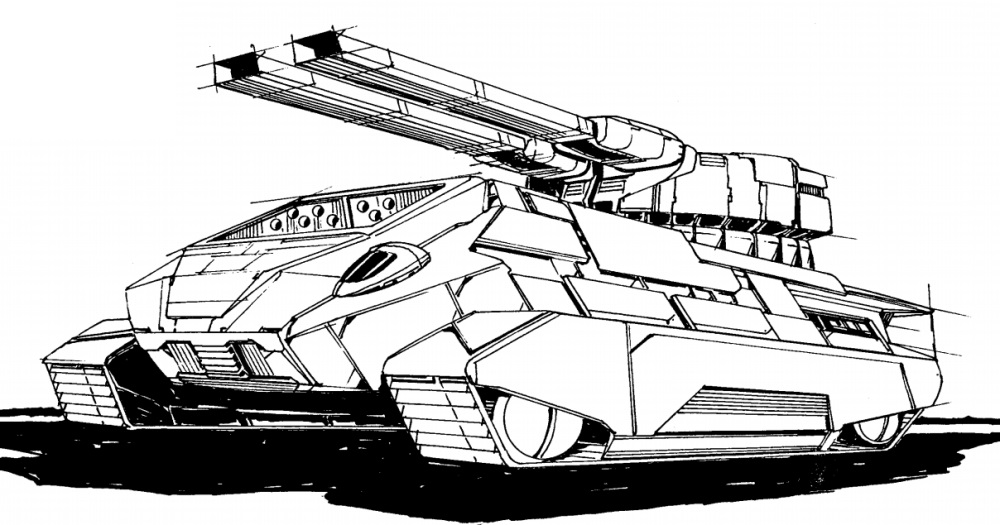
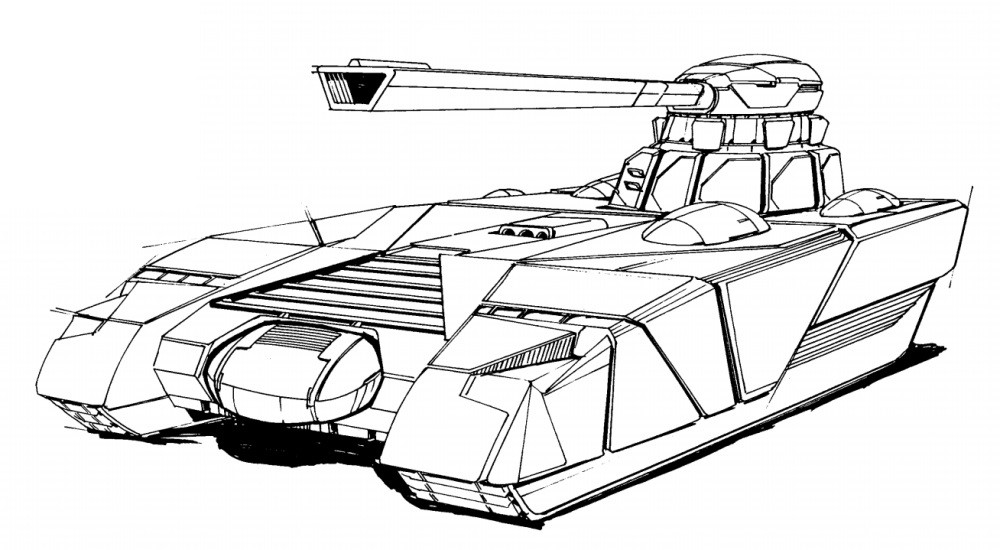
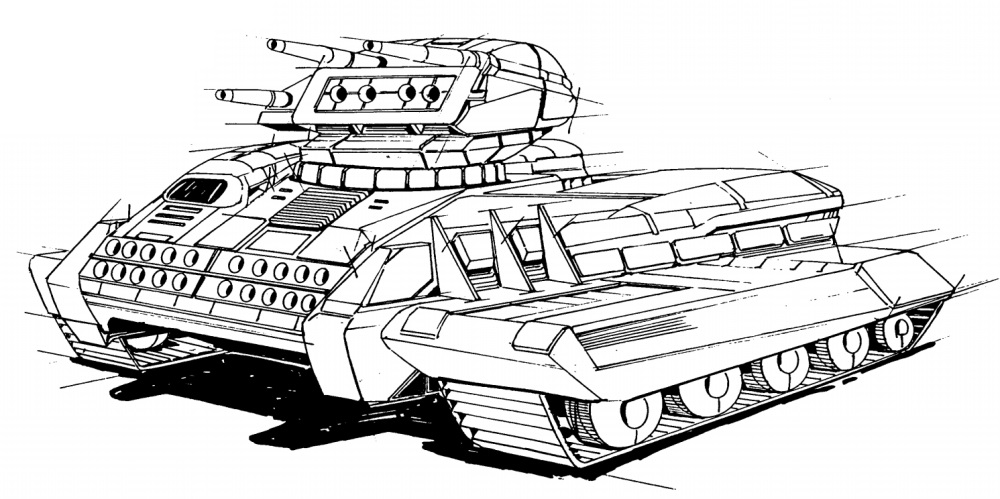
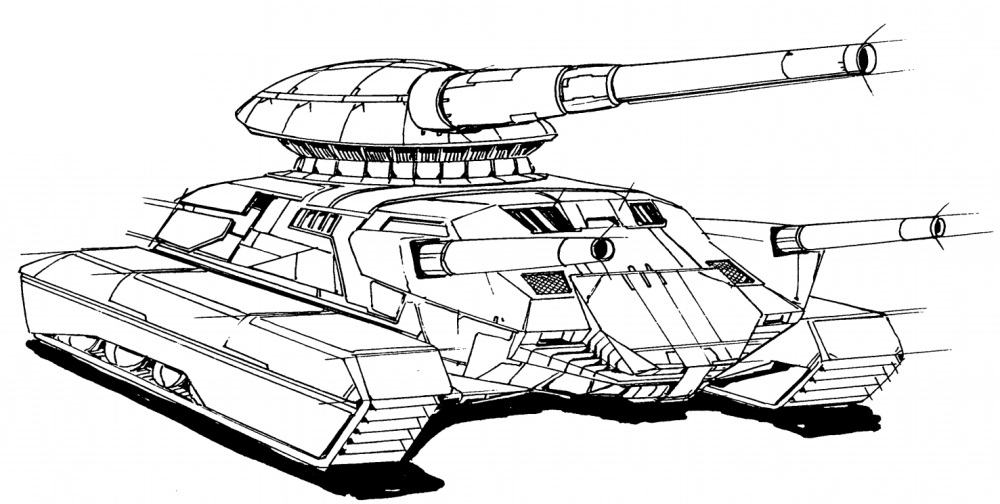
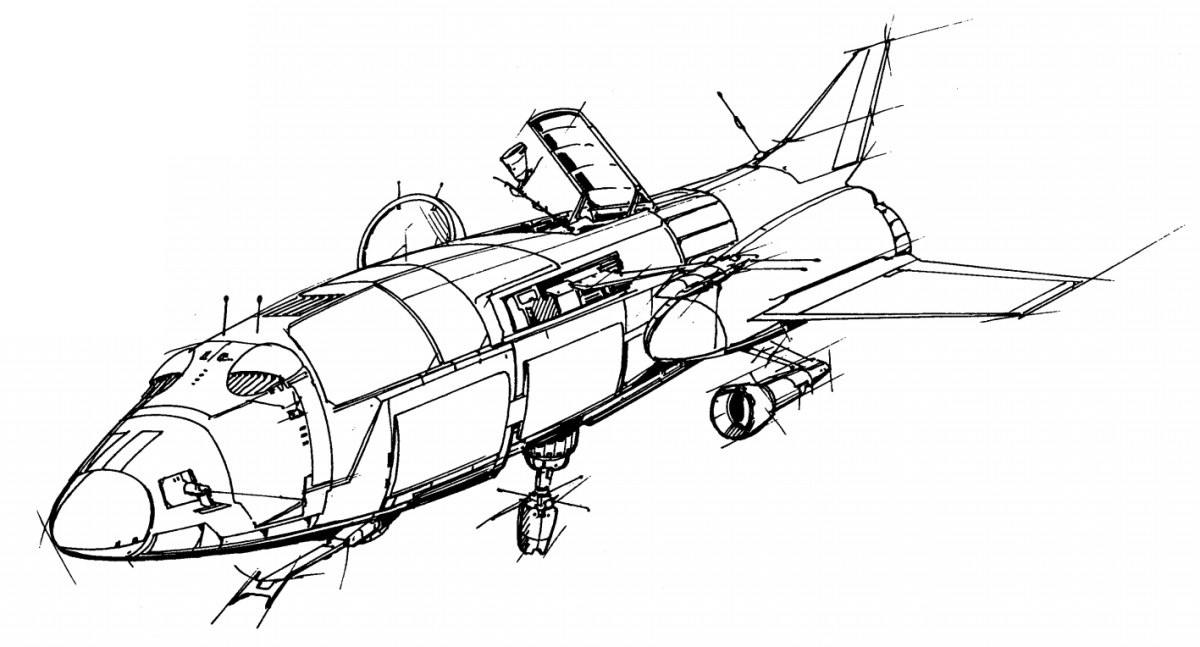
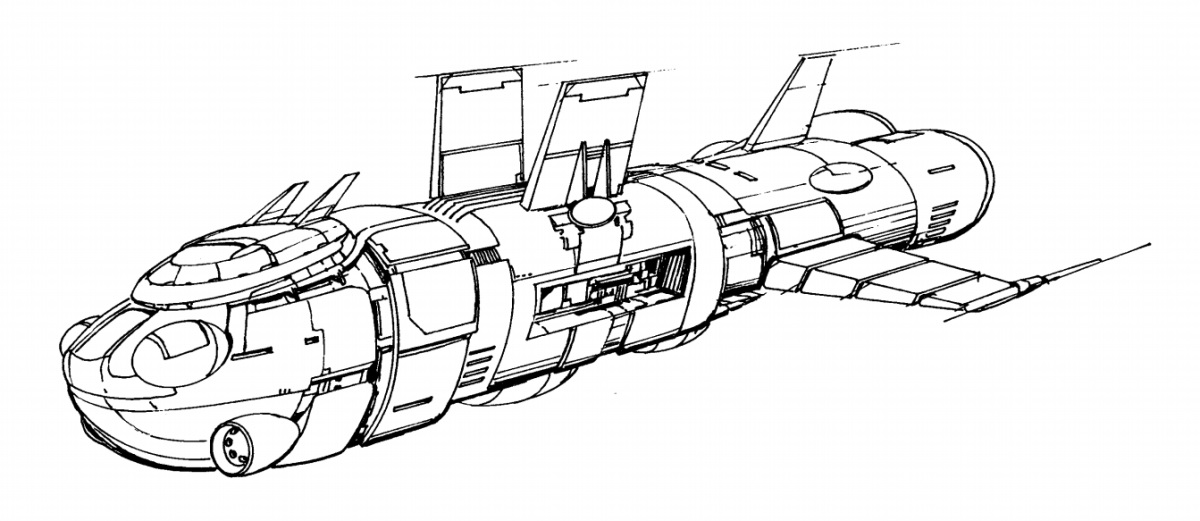
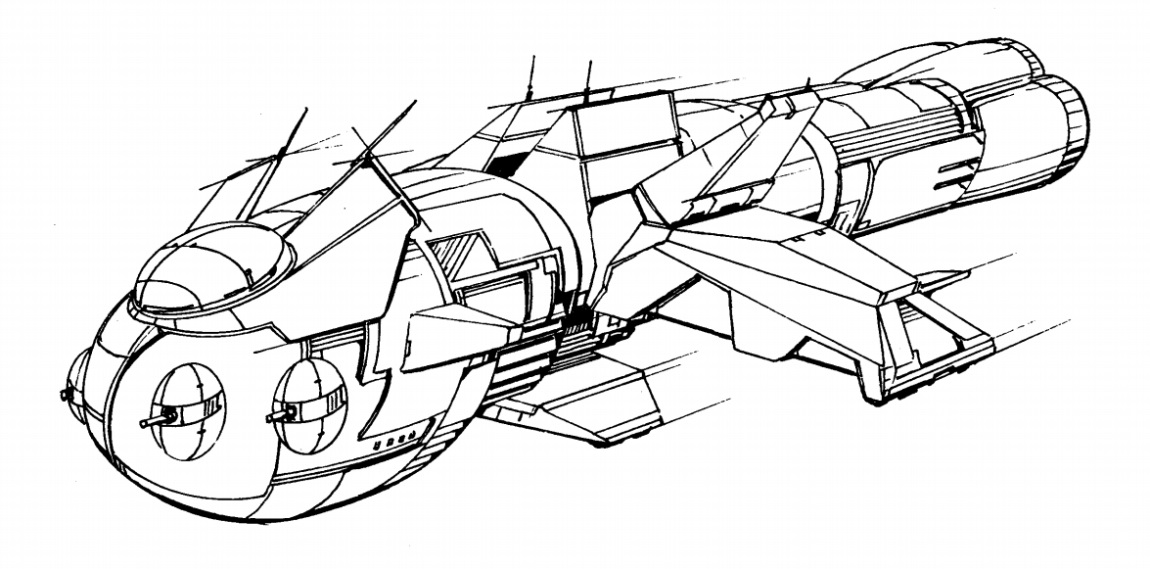
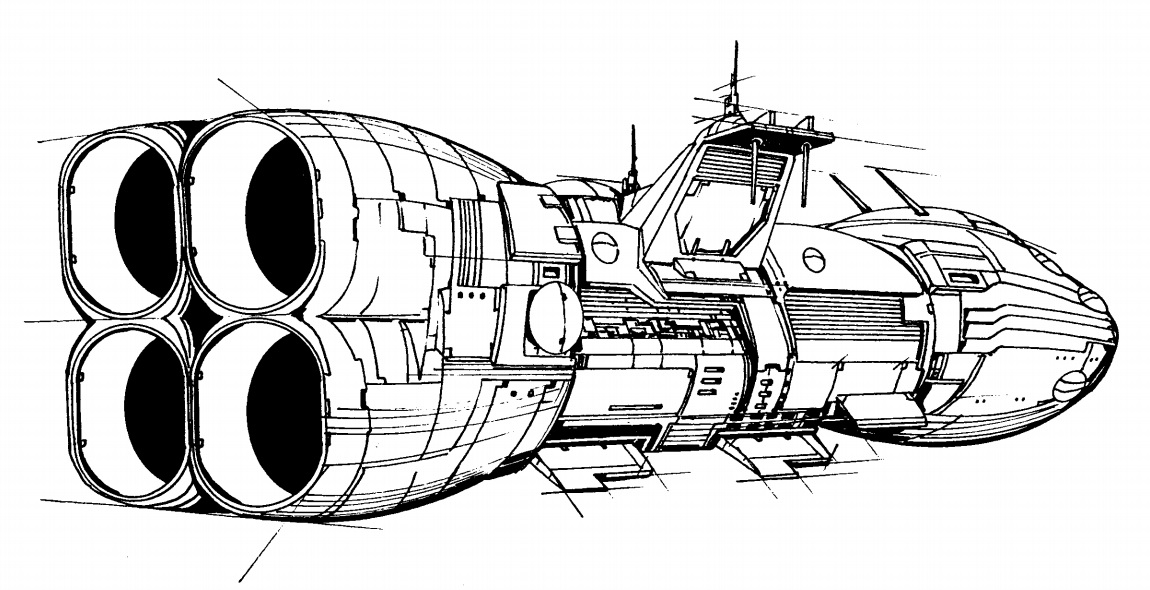
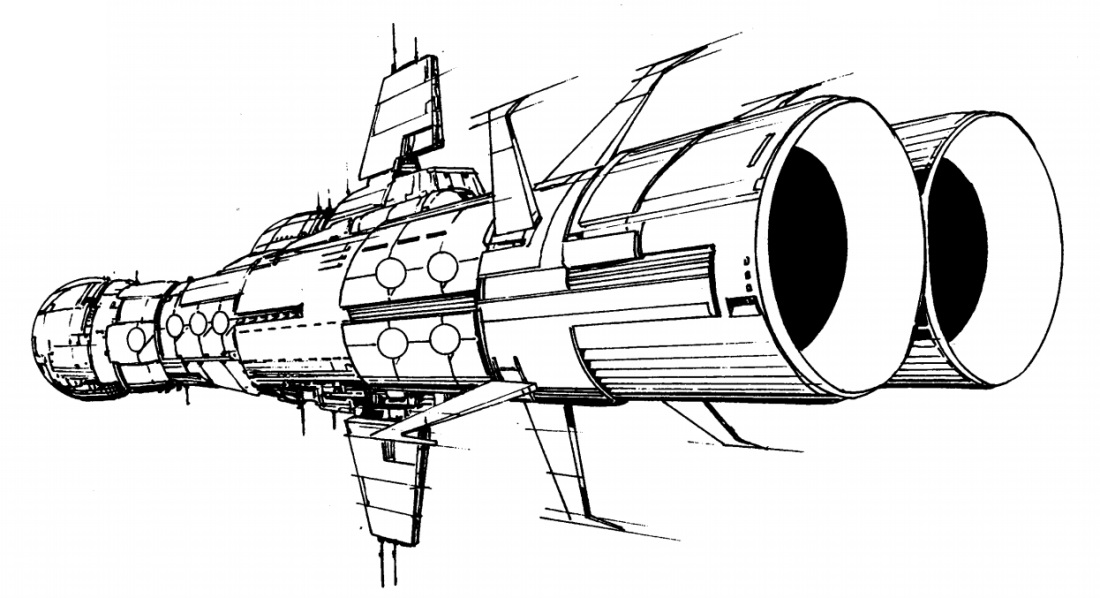
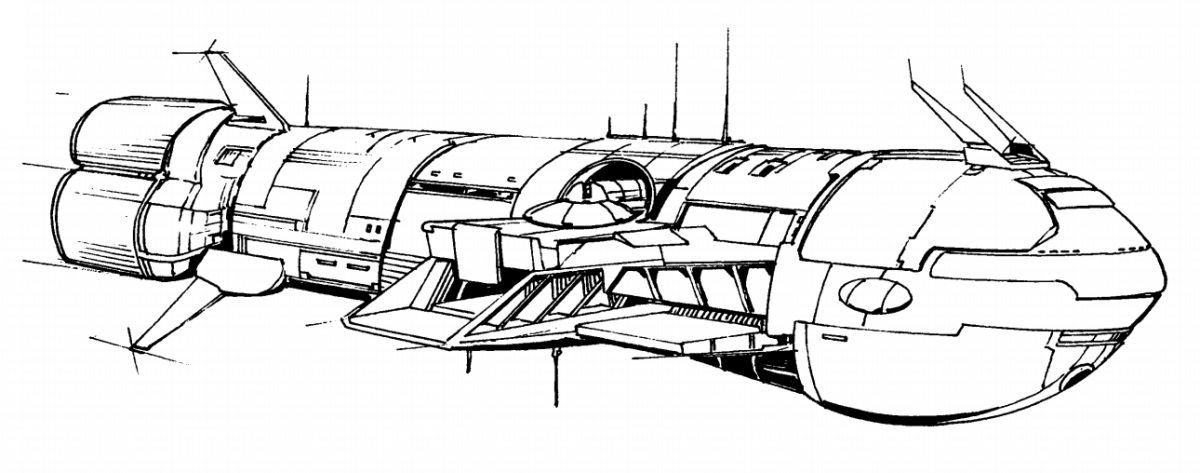
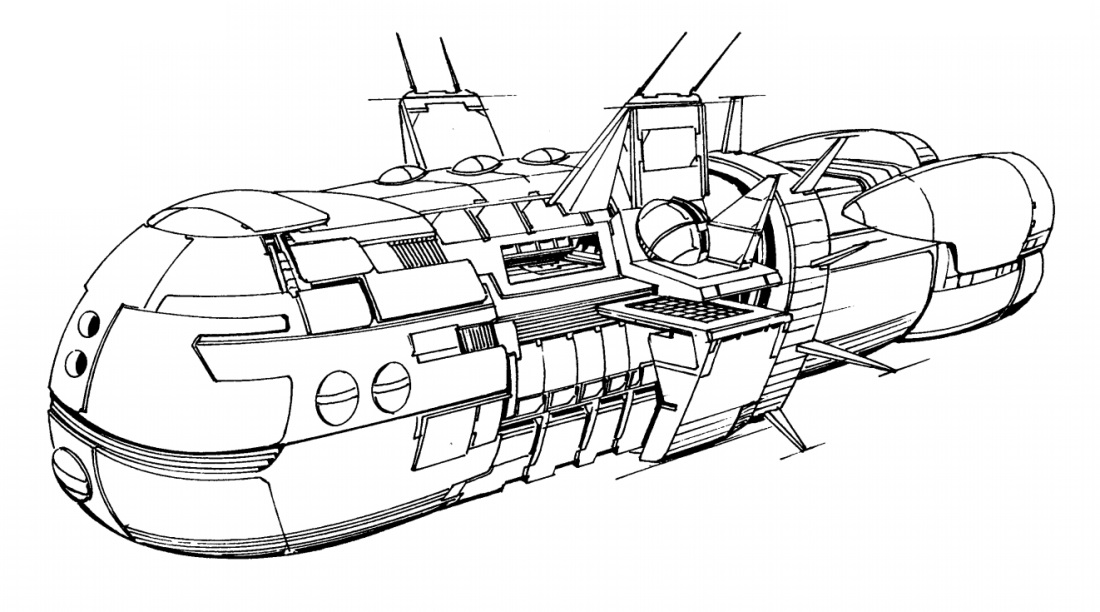
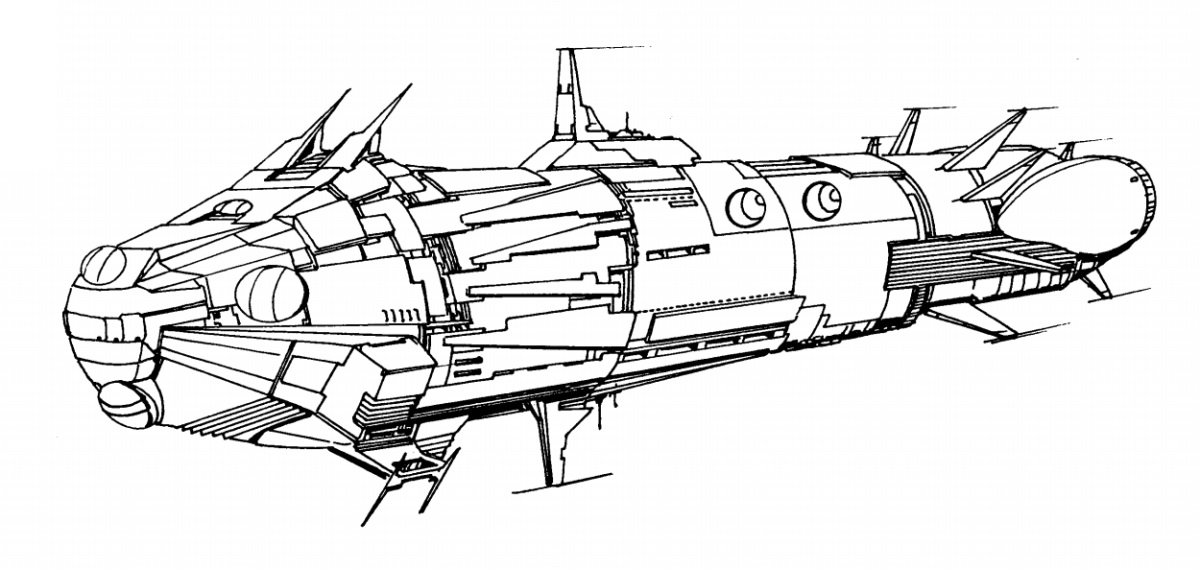
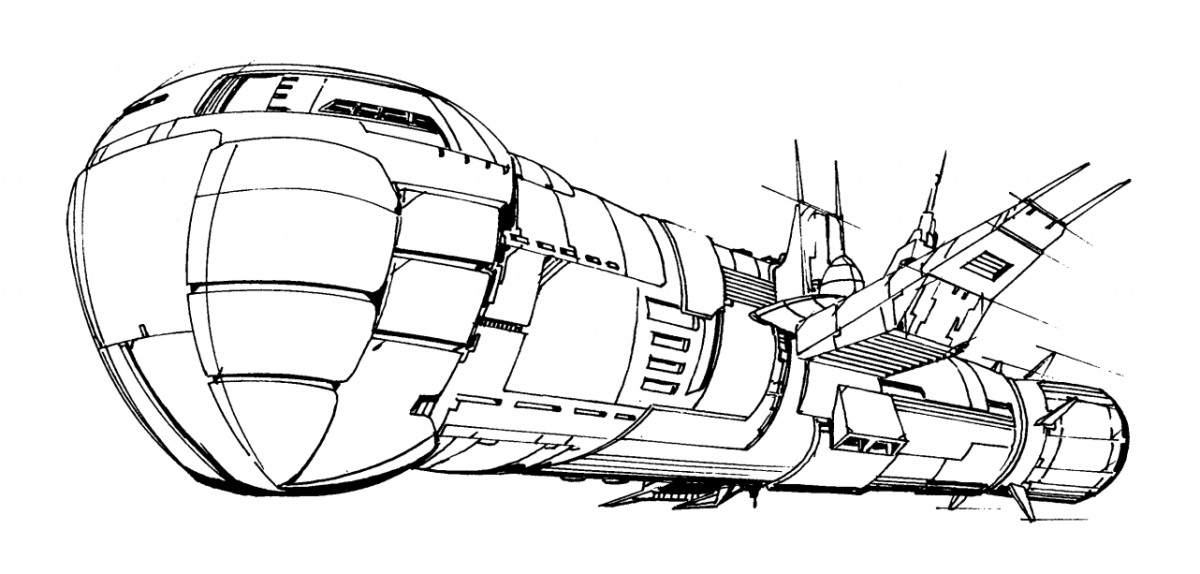
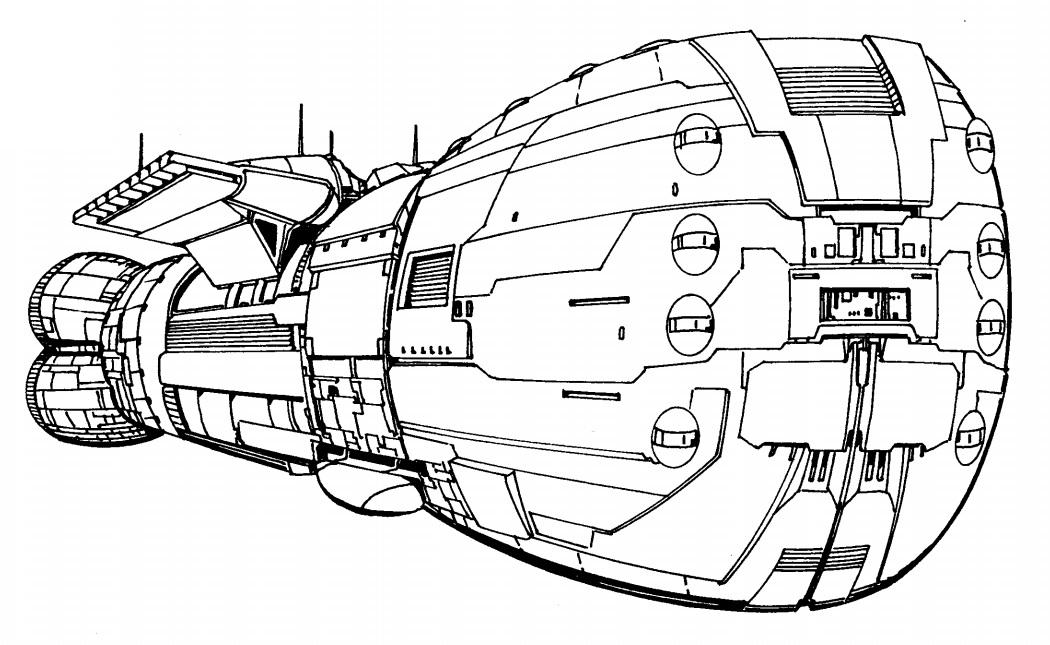
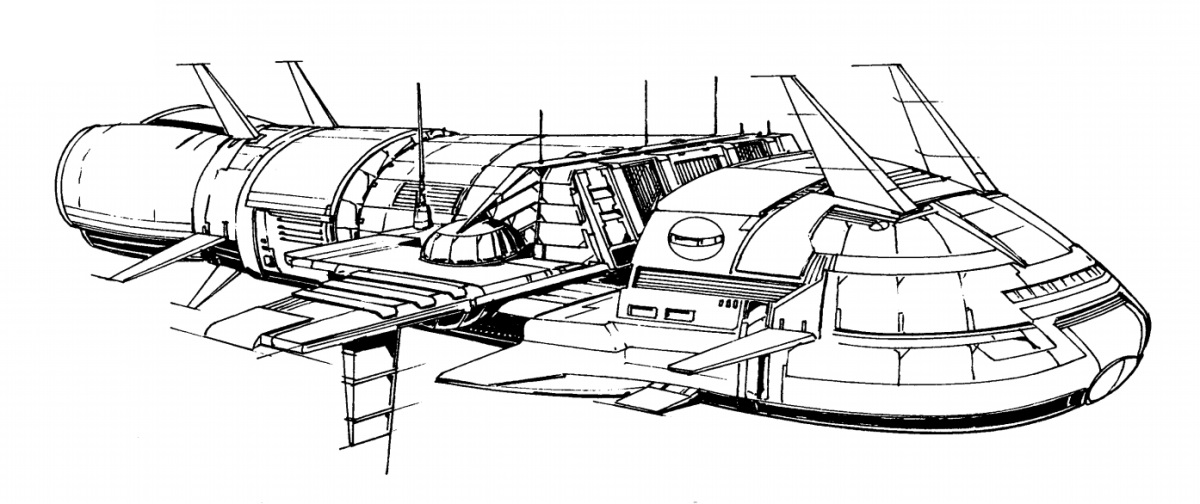
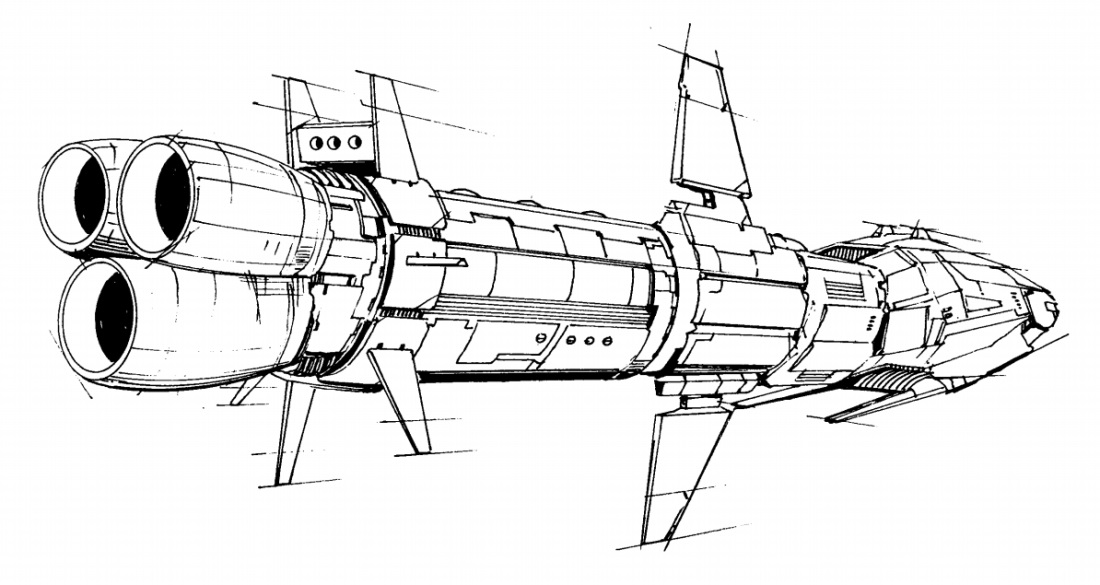
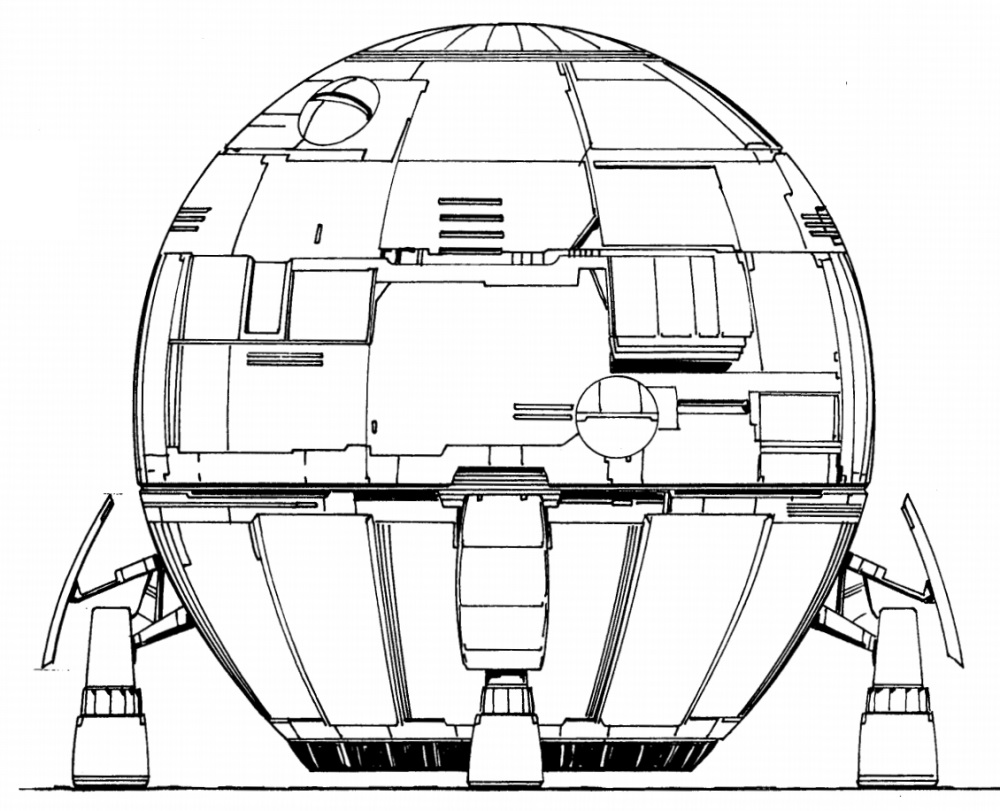

Leave a Reply